
COVER STORY MATTEO GARRONE FASHION F/W 2012-13: GLAM CHOISE INTERVIEWS RENZO ARBORE | MARK ZUCKERBERG PEPPE SERVILLO ART VALERIO DI DOMENICO | MAURIZIO GALIMBERTI TRACCE DELL’ISOLA | MARE NOSTRUM ITINERARIES INACCESSIBLE BEACHES | THE HIDDEN AMALFI COAST WEEK END IN ISCHIA THE DIVINE COAST spedizione in abbonamento postale 45%art. 2, lettera blegge 662/96filiale di Firenzecontiene IPeuro 5,00















102
SUMMER in this issue
COVER STORY
70 Matteo Garrone Napoli, secondo me Naples, from my viewpoint by Giovanni Bogani

SAVE AS 36 Islands Events 38 Coast events 40 Folklore 42 Books
PEOPLE 22 Costanzo d’anIello In punta di remo The strike of an oar 24 lella GolFo Il talento è rosa Talent is pink by Gianluca Coda 26 Marta FerrI Gioielli in miniatura Miniature jewels 28 valerIa FIore Emozioni glamour Glamour emotions 30 valerIo Caprara Lezioni di cinema Cinema lessons by Gianluca Coda 32 MIChele paGano Arredare con stile Furnishing with style
MOVIE, THEATRE & MUSIC
74 renzo arbore Emozioni napoletane Neapolitan emotions by Gianluca Coda 78 pasCal vICedoMInI Trampolino verso Hollywood Springboard to Hollywood by Giovanni Bogani 86 peppe servIllo Musica per le sirene Music for the sirens by Teresa Favi

FASHION
45 It objeCt 90 hIstory
Stile a Capri The Capri Style by Cesare Maria Cunaccia 94 steFano rICCI Creatività tutta italiana Creativity that’s completely Italian by Gianluca Tenti 98 boutIque L’Eden griffato A designer Eden 102 desIGners
Glam Choise by Marta Innocenti Ciulli 112 jewels Verde che più verde non si può As green as possible 114 shoppInG Big game by Marta Innocenti Ciulli 124 roberto MeneGhesso La stoffa dell’eccellenza One who excels by Sabrina Bozzoni

62 74
10





MUST HAVE 117 shoes 119 baGs 121 aCCessorIes 123 Man
ART, DESIGN & CULTURE
62 hIstory
Dietro una storia Behind a story by Matteo Parigi Bini 82 Mark e. zuCkerberG
Le vite degli altri The lives of others by Gianluca Coda 126 FederICo alvarez de toledo Eredità caprese An inheritance from Capri by Cesare Maria Cunaccia 130 ICon
Olimpia 134 MaurIzIo GalIMbertI
Fammi a pezzi!
Tear me in pieces by Francesca Lombardi 138 exhIbtIon Mare Nostrum

ITINERARIES
144 le vIlle
Le dimore del mito
The homes of myth by Tito Fiorani
148 le spIaGGe
Bella. Ma come ci arrivo? It’s lovely, but how do I get there? by Federico Carlucci 156 lo sCoGlIo delle sIrene Come Ulisse Just like Ulysses 164 aMalFI L’altra faccia della costiera The other face of the Amalfi Coast by Teresa Favi
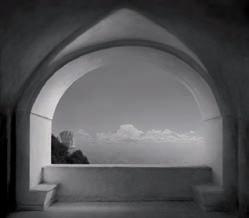
SPECIAL
ISCHIA

159 ItInerary L’isola della poesia The Island of poetry by Alessandra Lucarelli
FOOD & WINE
170 restourant Cibo per l’anima Food for the soul by Sabrina Bozzoni
SHOT ON SITE
55, 56, 57, 58, 59
DIVINE GUIDE
& hotels
10
174 restaurants
138 134 159 SUMMER in this issue
FASHION, ART, EVENT AND LIFESTYLE MAGAZINE
publisher FM publishing srl

Gianluca Fontani, Luca Gori, Ori Kafri, Alex Vittorio Lana, Matteo Parigi Bini
editor in chief Matteo Parigi Bini fashion director Marta Innocenti Ciulli co-editor Guido Parigi Bini
managing editor Teresa Favi, Francesca Lombardi editor
Matteo Grazzini, Alessandra Lucarelli, Sabrina Bozzoni capri correspondent Gianluca Coda contributors
Giovanni Bogani, Luigi Cremona, Cesare Maria Cunaccia, Romana D’Angiola, Riccardo Esposito, Tito Fiorani, Gianluca Riccio, Vincenzo Sorrentino, Ausilia Veneruso photographers
Umberto D’Aniello, Foto Flash Capri, Henny Garfunkel (cover), Massimo Listri, Luca Moggi, Masiar Pasquali, New Press Photo, Andrea Varani, Roberto Vuilleumier art editors
Chiara Bini, Alessandro Patrizi translations Tessa Conticelli, The Florentine, Annalisa Villoresi
advertising and marketing director Alex Vittorio Lana advertising
Bianca Esposito, Ilaria Marini, Alessandra Nardelli editorial office via Piero della Francesca, 2 - 59100 Prato - Italy ph +39.0574.730203 fax +39.0574.730204 - redazione@gruppoeditoriale.com branch
N. Bayshore Dr. #1101 - FL 33137 - Miami 2000 - Usa ph +1.305.213-9397 fax +1.305.573-3020 società editrice
Gruppo Editoriale
Alex Vittorio Lana & Matteo Parigi Bini via Piero della Francesca, 2 - 59100 Prato - Italy ph +39.0574.730203 - fax +39.0574.730204 www.gruppoeditoriale.com
Gruppo Editoriale
Registrazione Tribunale di Prato - n° 9/2006 del 15.12.2006 Spedizione in abbonamento postale 45% art. 2, lettera b – legge 662/96 – Filiale di Firenze - Contiene IP stampa Baroni & Gori - Prato (Symbol Freelife Gloss Premium White Paper)
Questo periodico è associato alla Unione Stampa Periodica Italiana
copyright © Gruppo Editoriale srl
QUARTERLY
THE DIVINE COAST





editore – e numerosi romanzi, tra cui







 Monsieur e Spirito di Vino. Ha vinto numerisi premi giornalistici.
Riccardo Esposito Born in Capri. He has founded and runs, with his
Monsieur e Spirito di Vino. Ha vinto numerisi premi giornalistici.
Riccardo Esposito Born in Capri. He has founded and runs, with his
casa e il lavoro, la fotografia, il cinema.



Nicky Swallow si è trasferita a Firenze nel 1981, ha scritto su Firenze e la Toscana per più di 10 anni. Collabora a numerose riviste che si occupano di turismo in Toscana, fra le quali Traveller di Condé Nast. E’ specializzata in cibo, ristoranti, alberghi.
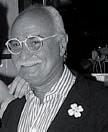
Nicky Swallow moved to Florence in 1981. She has been writing about Florence and Tuscany for more than 10 years. She writes for many magazines specialized in tourism in Tuscany such as Traveller by Condé Nast. She is a food, restaurant and hotel connoisseur.




 Gianni Mercatali, communication expert, journalist,
book stores which she runs between Capri, Anacapri and Rome. She
Gianni Mercatali, communication expert, journalist,
book stores which she runs between Capri, Anacapri and Rome. She





In punta di remo THE
STRIKE OF AN OAR

Come si svolge la sua giornata alla Grotta Azzurra?
Inizia molto presto, con i preparativi delle barche e il trasferimento dalla darsena alla grotta. Poi arrivano i turisti e si alza il sipario sulla più bella meraviglia di Capri.
Che ricordo cerca di lasciare ai tanti ospiti che conduce all’interno della grotta?
C’è molta gente che aspetta di entrare e i ritmi diventano spesso frenetici; il tempo con loro è breve ma cerco di trasmettere simpatia, un ricordo di Capri e, ai tanti turisti stranieri, la gioia tipica di noi italiani.
Com’è cambiato il suo modo di lavorare in tutti questi anni?

Il lavoro è sempre lo stesso, ciò che è cambiato in questi anni è il turismo. Prima non c’erano le onde dei motoscafi, l’atmosfera era molto più tranquilla, ma riuscivamo a far entrare 5000 persone al giorno.
La richiesta più strana che le ha fatto un ospite a bordo?
Una ragazza mi chiese di fare l’amore. Non so se si innamorò di me o della bellezza della grotta.
Cosa le piace di più di Capri?
La amo in tutta la sua essenza e non potrei mai vivere lontano, è la mia terra. Quando rientro dopo il tramonto guardo le luci di Marina Grande e penso che non esiste scenario più bello al mondo.
Il piatto caprese preferito?
Gli spaghetti con i frutti di mare freschi, gli irresistibili ricci delle nostre acque e le squisite patelle.
What is your typical day like at the Grotta Azzurra?

My day begins very early since I must prepare the boats and shipments from the dock to the grotto. When the tourists begin to arrive, the curtain rises on the most wondrous site of Capri.
What impression do you try to give to the many visitors/guests you lead inside the grotto?

There are often many of them who wait to enter the grotto and oftentimes it can get quite hectic. I do spend with them I try to be friendly and leave them with an unforgettable impression of Capri.
Has your way of working changed at all during all your years here?
My work is still the same, what has changed is the amount of tourists. There was a time when you didn’t feel the intrusion of motorboats and in general the atmosphere was a bit more relaxed. We still managed to guide up to 5000 visitors per day.
What was the most peculiar question you have been asked aboard your boat? A young girl asked me if I wanted to make love with her. I am not sure if she fell in love with me or with the beauty of the grotto.

What do you like best about Capri?

I love it in all its being and I could never live somewhere else. When I come into port in the evenings after sunset I look at the lights of the Marina Grande and I feel that I am experiencing one of the most beautiful landscapes in the entire world.
What is your favorite dish from Capri?
Spaghetti with fresh seafood, the irresistible sea urchins and the exquisite limpets.

divine people 22 Capri | The Divine Coast
text Federico Carlucci
Costanzo D’Aniello, marinaio e traghettatore della Grotta Azzurra, da anni accompagna i turisti e in mare coltiva anche la passione della pesca Costanzo D’Aniello, sailor and ferryman of the Grotta Azzurra, for years led tourists and, at sea, cultivating his passion for fishing





PINK
Il talento è rosa TALENT IS
Qual è l’obiettivo della Fondazione Bellisario? Promuovere talenti, competenze e professionalità femminili. Lo facciamo da più di vent’anni attraverso azioni concrete. Abbiamo costruito un forte network femminile e una credibilità di cui sono orgogliosa. Le difficoltà che oggi incontra una donna per raggiungere i vertici di un’azienda sono le stesse incontrate a suo tempo da Marisa Bellisario?
Trent’anni fa Marisa Bellisario era una ‘mosca bianca’, oggi rappresentiamo il 60% dei laureati del nostro Paese e abbiamo espugnato “templi” una volta inaccessibili, conquistando la guida del più grande sindacato e della più grande associazione d’imprenditori. L’impegno e la tenacia di Marisa Bellisario cosa hanno lasciato alla donna del futuro?
Trent’anni fa incitava le donne a intraprendere carriere nelle nuove tecnologie, a laurearsi in materie scientifiche che avrebbero offerto loro grandi opportunità. Marisa è la dimostrazione che per una donna, come lei amava dire “fare carriera è più difficile ma più divertente” e che nessun obiettivo è impossibile. Qual è il suo legame con Capri? È un’isola meravigliosa. Dai primi anni della mia vita a Roma, scappo a Capri per rivedere il mare, respirare i profumi che mi fanno sentire più vicina a casa. Il cibo meraviglioso, la gente aperta e ospitale, il mare limpido. Tornare a Capri per me è come tornare a casa.
What is the main objective of the Bellisario Foundation? We try to promote talented, competitive and professional women. We have been around for over twenty years and throughout we have carried out this aim through concrete actions. We have come to establish an important female network of which I am very proud. Are the difficulties a woman faces in the workforce today the same that Marisa Bellisario, in her own time, was faced with?

Thirty years ago, Marisa Bellisario was a so-called ‘whitefly’. Today we represent 60% of the population with a college degree, we have overcome obstacles which at once seemed insurmountable and we have won the backing of one of the largest unions and largest association of entrepreneurs. What have Marisa Bellisario’s commitment and perseverance granted the women of the future?
The modernity of her’s message is everlasting. Thirty years ago she incited women to go out and obtain jobs in the technological workforce and to pursue scientific studies which would grant them a wide range of professional opportunities. Marisa set the example for all women that “to become a career woman is more difficult, but it’s more fun” and that no goal, is ever impossible to achieve.
What is your connection to Capri?
Capri is a marvelous island. Ever since I was a child growing up in Rome, Capri has always been my getaway. I flee to Capri to see the sea, to inhale fresh air and take in the smells that make me feel closer to home. The food is exquisite, the people are warm and hospitable and the sea is crystal clear. Going to Capri is like going home.
divine people 24 Capri | The Divine Coast
text Gianluca Coda
Lella Golfo è fondatrice e presidente della Fondazione Marisa Bellisario, e ideatrice del relativo Premio
Lella Golfo is president and founder of the Marisa Bellisario Foundation and initiator of the Prize





JEWELS
Gioielli in miniatura MINIATURE
Com’è nata la passione per la moda?
Mio padre è fotografo e mia madre architetto d’interni, due lavori creativi, pieni di colori e atmosfere. Crescere con questi stimoli mi ha avvicinato al mio lavoro di oggi.
Qual è il leitmotiv delle sue creazioni?
Le mie creazioni sono impreziosite dalle stoffe ricercate e da stampe d’altri tempi, ma il taglio é pulito e rispetta il corpo femminile.
A cosa sta lavorando in questo momento?
Alla nuova collezione estiva del pret-a-porter e al su misura nel mio showroom di Milano. E non in ultimo a un nuovo progetto che mi sta molto a cuore: MiniaC.
Com’è nata l’idea di MiniaC?
Dalla passione maniacale per le scarpe che accomuna un po’ tutte le donne. Io e la mia grande amica Camilla Vender, gemmologa e jewelry designer, vivevamo insieme a New York e un giorno di primavera, scarabocchiando su un foglio è venuta fuori quest’idea che ci ha fatto subito sorridere: una collezione di scarpette gioiello interamente lavorate a mano.

Cosa si aspetta da questo progetto?
Mi auguro che sia solo l’inizio di una grande nuova avventura.. Qual è il suo rapporto con Capri?
Capri è i racconti d’infanzia di mio padre, il mio lavoro come visual merchandiser da Prada, gite meravigliose in gozzo, ricordi di matrimoni magici di amici e l’elegante atmosfera d’altri tempi.
How did your love for fashion begin?
My father is a photographer, and my mother an interior designer. Both are artistic jobs, full of colors and atmosphere. I grew up in a creative household and I owe my present job to this fact.
What is the leitmotiv of your creations?
My work is characterized by precious and rare fabrics and prints but the look is classic, rigorous and most importantly respects the female figure.
What are you presently working on?
My new summer collection which is a combination of a pret-a-porter and my custom made now on view in my Milan showroom, not to mention my latest project of which I am very fond, MiniaC.
How was MiniaC born?
From the obsessive passion that women have for shoes. My friend Camilla Vender, gemologist and jewelry designer, and I were living in New York and one Spring afternoon we were sketching on a piece of paper and all of a sudden this idea jumped out at us and made us smile: a shoe collection completely handmade out of jewels. What are you hoping from this project?
I hope this is only a beginning of a great adventure. What is your link to Capri?
Capri represents stories of my father’s childhood, my work as visual merchandiser for Prada, marvelous trips in a gozzo boat, memories of magical weddings and the elegant atmosphere of past times.
divine people 26 Capri | The Divine Coast
text Federico Carlucci
Marta Ferri, affermata stilista d’alta moda, ha da poco creato con l’amica Camilla Vender, una linea di mini accessori gioiello dal nome MiniaC
Marta Ferri, renowned fashion stylist, has created a line of jewelry and accessories with the collaboration of friend Camilla Vender, MiniaC





Emozioni glamour GLAMOUR EMOTIONS
Come è nata la passione per il tuo lavoro? Fin da piccola osservavo incuriosita le riviste di moda ed ero affascinata dagli accessori. Tutte le mie bambole indossavano dei cappelli di carta fatti da me. C’e’ un incontro che le ha cambiato la vita? I miei due primi viaggi a Parigi e a Londra hanno acceso i riflettori sul palcoscenico della mia vita professionale. Tre cose ”in” e tre cose “out” di Capri. L’aperitivo in piazzetta, la luna piena a Marina Piccola, la qualità della vita, sicura e tranquilla. La pessima organizzazione dei mezzi di trasporto, l’incapacità di tutelare e salvaguardare il territorio, la scomparsa delle tradizioni artigiane. Cosa le piace di più di Capri? L’emozione che ancora oggi i suoi colori, i suoi profumi e i suoi scorci riescono a suscitare in me. La stessa magia che ha stregato milioni di turisti e habitué dell’isola, fedeli amanti di questo piccolo angolo di paradiso da decenni. L’idea di percorrere le stesse stradine che in passato hanno visto i personaggi più famosi al mondo quasi m’imbarazza. Cosa rappresenta per lei Capri?
La mia vita, le mie origini e le mie radici cosi profonde. I miei bisnonni furono artefici della nascita dei lidi balneari di Marina Piccola. Per questo la mia famiglia anni fa decise di acquistare il lido lo Scoglio delle Sirene

How did you fall in love with your career?

Ever since I was a child I was enchanted by fashion magazines and particularly enthralled by accessories. I made paper hats for all my dolls.
Has there ever been an encounter or moment that was life changing?
My first two trips to Paris and London were the first step in my professional career.

Three things about Capri that are “in” and three that are “out” Aperitif in piazzetta, the full moon at marina piccola, and the quality of life that is safe and relaxed. The poor organization of transportation services, the inability to help preserve the landscape, and the disappearance of traditional handicrafts. What do you like most about Capri?
The powerful effect that still to this day Capri’s colors, smells and its roads can have on me. It is the same magic spell cast upon thousands of tourists and visitors of the island. The paths I walk are the same paths that years ago famous stars walked, and this always amazes me.
What does Capri represent for you?

My life, my origins, my roots. My great grandparents were responsible for the birth of the beach resorts at Marina Piccola. For this reason my family decided to purchase the shore of the Scoglio delle Sirene.


divine people 28 Capri | The Divine Coast
Valeria Fiore, titolare di boutique di abbigliamento e accessori nel centro storico. La sua famiglia gestisce lo Scoglio delle Sirene Valeria Fiore, owner of several clothes and accessory boutiques in Capri. Her family has been running the Scoglio delle Sirene
text Gianluca Coda





Lezione di cinema CINEMA LESSONS
Quando nasce il suo legame con Capri? Negli anni ’50 mio padre, dirigente politico, strinse un forte legame con i militanti dell’isola, tra cui l’indimenticato Teodorico Boniello. Per anni abbiamo trascorso le festività natalizie e pasquali a Capri ed è nata una forte amicizia con Annamaria Boniello. Cosa cerca di trasmettere agli studenti universitari? Ho sempre inteso l’insegnamento, le lezioni e gli esami come estensione della passione per il cinema. Si parte dall’amore per un attore, un’attrice o per un film. Dall’odio per una sceneggiatura o per una cinematografia. Uso il sentimento per spingere ad approfondire e studiare. Un aneddoto che ricorda con piacere? Un alunno mi ha ricordato che durante una lezione dissi che il cinema è un medium a carburazione erotica. Deve esserci un rapporto di desiderio tra schermo e platea, non si possono fare le cose solo con la semiologia o con l’indicazione dei critici. Il cinema ha un corpo composto da tutti i sensi e per capirlo si deve avere sensibilità in tutto il corpo. Come presidente della Film Commission qual è il suo impegno? Cerco un collegamento diretto con le professioni legate al cinema e con le università. Le produzioni devono usare la manodopera locale in tutta la filiera del cinema, creando indotto e coinvolgendo i giovani appassionati dei mestieri legati a esso.
When did you first develop ties to Capri?
In the fifties my father, then a political leader, developed close ties with the militants on the island, among whom the unforgettable Teodorico Boniello. For years we spent Christmas and Easter in Capri and I became a good friend of Annamaria Boniello. What do you try to teach your college students?
I have always viewed teaching, lessons and exam giving as an extension of my passion for cinema. You start with the love for an actor, actress or film and move on to despising a specific screenplay or cinematography. I use my sentiment provoke my students and incite them into studying.
Do you have a favorite anecdote?
A student once reminded me that during a lesson I was giving I said that cinema is a form of eroticism. There needs to be a relationship between screen and audience, we can’t go about things through semiotics and critic’s advice. To understand the complex body that is cinema you must use all your senses and have the sensitivity in your own body.
What is your role as President of the Campania Film Commission?






I look for a direct connection between professions tied to the film industry and universities. Production houses need willing and able individuals to lend a hand and work, thus building a labor force of young people with a passion for cinema and the jobs to which cinema is tied.

divine people 30 Capri | The Divine Coast
text Gianluca Coda
Valerio Caprara, critico, è presidente della Film Commission Campania, professore di Storia e critica del cinema all’Università l’Orientale di Napoli Valerio Caprara, critic, president of the Campania Film Commission, professor of film criticism and history at the University of Naples l’Orientale





WITH STYLE
Arredare con stile FURNISHING
Lo stile che propone con il suo negozio sull’isola, caprese o più internazionale?
Uno stile internazionale che sia in sintonia con lo stile caprese, ma reso più attuale. Propongo una ricerca di mobili e di oggetti di diversa provenienza che vivono più identità a secondo del contesto. Come interior designer si fa ispirare dalle energie che trasmettono le case o dai loro proprietari?

Le case emanano l’energia di chi le abita: cerco di percepire i desideri delle persone e di creare ambienti che li rappresentino, in armonia con l’architettura e le proporzioni delle abitazioni.
I suoi clienti comprano per le loro case a Capri o anche per portare con sé gli oggetti al ritorno in città?
Comprano sia per Capri, che per loro case in città. Molti clienti stranieri acquistano oltre alla bellezza dell’oggetto anche il valore del ricordo di un momento magico a Capri.
Qual è il progetto sull’isola che è stato più stimolante per lei?
Non ne ho uno in particolare. Ogni progetto per me ha un significato, trovo stimolante il rapporto che si crea con le persone.
Una casa che le piacerebbe arredare?
Villa Lysis.
Il periodo migliore dell’anno per vivere l’isola?
Io adoro l’estate….
Un posto speciale?
La valletta di Cetrella con il suo piccolo eremo.
Is the style you propose in your shop on the island more Capri-style or international?

It’s an international style that’s in sync with Capri’s style, but it’s more current. We propose a search for furniture and objects from different places whose identity is enhanced by their context.
As an interior designer do you allow yourself to become inspired by the energy different houses and their owners emit?

Houses emanate the energy of those living in them: I try and perceive people’s desires and create environments that reflect them, in harmony with the architecture and proportions that characterize each home.
Do your clients purchase things for their homes in Capri or do they also take things back to the city with them?



They buy both for Capri and for their homes in the city. In addition to acquiring an item because of its beauty, many foreign clients are also purchasing the value of a memory that represents a magic moment in Capri. Which project on the island did you find the most stimulating?
I don’t have any one in particular. Each project has its own significance for me. I find the relationships created between people to be stimulating. How about a house you’d love to furnish?
Villa Lysis
The best time of year to live on the island?
I adore the summer…
A special spot?
The Valletta di Cetrella with its tiny hermitage.
divine people 32 Capri | The Divine Coast
text Francesca Lombardi
Michele Pagano interior designer e proprietario del Caprinteriors, è un vero punto di riferimento dello stile dell’isola
Interior Designer Michele Pagano is the owner of Caprinteriors, an authentic reference point for style on the island















L’estate del Mito
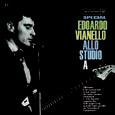
Nella sua Eneide Virgilio narra di Ebalo, figlio della ninfa Sebetide e di Telone, re dei Teleboi di Capri. Già in quel tempo mitico l’isola era un tripudio di cultura e arti. Ecco invece gli eventi che animano questa soleggiata estate caprese. Fino al 10 settembre Il Festival di Fotografia a Capri, giunto alla sua IV edizione, ospita la mostra Mare Nostrum con gli scatti di Ferdinando Scianna e Irene Kung, presso la Certosa di San Giacomo
Dall’ 1 al 7 agosto, alle ore 21.30, in piazza San Nicola gli spettacoli del XIII° Festival Internazionale del Folklore, rassegna etnica di danza e musica, eseguite in co-
In the Aeneid Virgil is narrating the story of Ebalo who was the son of the nymph Sebetide and of Telone, king of Capri’s Teleboans. In that mythical time the island was already a cradle for culture and arts. Here you find the events which will animate the next sunny Capri’s summer. Until September 10th the fourth edition of Capri Photography Festival is presenting the exhibition Mare Nostrum showing pictures of Ferdinando Scianna and Irene Kung in the Certosa di San Giacomo.
From August 1st through Aug. 7th at 9,30 pm the performance organized by the XIII International Folklore Festival. It’s a series of dance and music shows performed in costume by groups from every continents.
From August 3rd through September 8th at the Museo Casa Rossa in Anacapri the Ca-


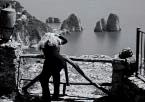
stumi caratteristici da gruppi di tutti i continenti. Dal 3 agosto all’8 settembre al Museo Casa Rossa di Anacapri l’esposizione Capri/Anacapri 19361963 Arti Visive, Cronaca, Letteratura, dove si esprime il senso di quella ininterrotta capacità dell’isola di attrarre i personaggi della cultura più elitaria, sintetizzando lo spirito di un’epoca nelle espressioni di linguaggi diversi: cinema, letteratura, architettura. Sabato 4 agosto lungo il centro storico dell’isola l’itinerario storico Dalla Capri Medievale a quella del ‘600, attraverso i vicoli e i luoghi inconsueti alla ricerca delle storia del territorio. Sabato 11 agosto un itinerario storicoartistico immerso nel periodo medioevale e monastico caprese rappresentato nella sua forma più aulica e monumentale dalla Certosa di
pri/Anacapri 19361963 Visual Arts, Chronicle, Literature Exhibition: it pictures the power of the Island to attract many protagonists of the most elitist culture and portrays the spirit of the epoch in its different expressions such as cinema, literature and architecture. On Saturday August 4th in the Island’s historical center the itinerary From Capri of the Middle Ages to Capri of the Seventeenth Century, a walk along its alleys and its most unusual places to discover the history of this territory. On Saturday August 11 an artistic and historical itinerary through the Middle Ages and the monasteries of which the Certosa di San Giacomo is the highest expression; the itinerary also includes a visit to the Diefenbach Museum which
San Giacomo insieme alla visita al museo Diefenbach dedicato al pittore simbolista Karl Wilhelm Diefenbach (1851 - 1913).
Domenica 12 agosto, sul monte Solaro l’evento Montesolaro di notte, serata di spettacolo dal tramonto alla luna caprese con seggiovia aperta in via straordinaria anche di notte. Domenica 26 agosto piazza San Nicola omaggia Domenico Modugno con lo spettacolo musicale Meraviglioso con Antonio Bellarosa e venerdì 31 agosto, stessa piazza per la serata dedicata alla quinta edizione del Premio Bruno Lauzi. Ospiti d’onore: Eduardo Vianello, Mariella Nava, Franco Fasano, Carlo Marrale e Iskra Menarini, così infine mercoledì 5 settembre stessa location per un grande spettacolo di danza, Alice in Wonderland
exhibits the works of the symbolist painter Karl Wilhelm Diefenbach (1851-1913.
On Sunday August 12 Montesolaro di notte, a night of live performances on the Monte Solaro. The show starts at sunset and welcome Capri’s moon. On the occasion the chair lift will be open at night. On Sunday August 26th Piazza San Nicola pays homage to Domenico Modugno with a music live show, Meraviglioso, with Antonio Bellarosa. On Friday August 31st, in the same piazza, there is the fifth edition of Premio Bruno Lauzi whose special guests will be Eduardo Vianello, Mariella Nava, Franco Fasano, Carlo Marrale e Iskra Menarini. On September 5th Piazza San Nicola will host a great ballet, Alice in Wonderland

save as islands events 36 Capri | The Divine Coast
Per voi i migliori eventi dell’isola The Island’s best events just for you
THE SUMMER OF THE MYTH
text Sabrina Bozzoni
Ferdinando Scianna
Certosa di San Giacomo
Edoardo Vianello
Certosa di San Giacomo
K. W. Diefenbach





Arte, musica e teatro
ARTS, MUSIC AND THEATRE
text Teresa Favi
Fino al 14 ottobre alla Reggia di Caserta (Appartamenti Storici) si può visitare la mostra Antonio Joli tra Napoli, Roma e Madrid. Le vedute, le rovine, i capricci, le scenografie teatrali e contemporaneamente ammirare il murale di Milwaukee di Keith Haring del 1983, lungo 30 metri e alto 2: fino al 4 novembre (Sala dei Porti Appartamenti storici).
LUGLIO
A Ravello (dal 23 giugno) fari puntati sul Ravello Festival al Belvedere di Villa Rufolo fino al 1° settembre. Da non perdere la prima assoluta del 28, il cineconcerto The Artist, so-
Until October 14th in the Caserta Palace (historical apartments) the exhibition Antonio Joli in Naples, Rome and Madrid. Landscapes, ruins, vagaries and theatre sceneries Until November 4th you can admire Keith Haring’s 1983 Milwaukee wall painting, 30 meter long and 2 meter high (Porti Hall in the historical apartments).
JULY
In Ravello (from June 23rd) floodlights on the Ravello Festival at the Belvedere of Villa Rufolo through September 1st. On the 28th the première of the cineconcert The Artist, live performance of the pianist and composer Ludovic Bource on the track of the 2012 Oscar winner movie by by M. Hazanavicius. Until September 8th the exhibition of the sculptor Mitoraj Memoriae.
norizzazione dal vivo del film di M. Hazanavicius (premio Oscar 2012) con il pianista e compositore Ludovic Bource. Ma trova spazio anche l’arte con la mostra Memoriae – Mitoraj a Ravello fino all’ 8 settembre.

AGOSTO
SETTEMBRE
Eventi
Nell’ambito del Ravello Festival: il 3 Paolo Fresu e Ludovico Einaudi, il 4 Galà di Danza con Eleonora Abbagnato. Il 9 Memorie di Adriano con Peppe Servillo, Rita Marcotulli, Fabrizio Bosso, Javier Girotto, Furio di Castri. Pino Daniele è in concerto il 21 a Maiori (Salerno). Il 24, non perdete Le Mystère des Voix Bulgares, arcinoto coro di voci bulgare femminili. Il 29 George Benson è in concetto a Ischia Il 30 Notte Bianca ad Amalfi
AUGUST
The Ravello Festival also presents Paolo Fresu e Ludovico Einaudi on the 3rd, the Ballet Galà starring Eleonora Abbagnato on the 4th On the 9th Adriano’s Memories with Peppe Servillo, Rita Marcotulli, Fabrizio Bosso, Javier Girotto, Furio di Castri. Pino Daniele is in concert on the 21st in Maiori (Salerno). On the 24th you cannot miss Le Mystère des Voix Bulgares, the very popular chorus of Bulgarian lady singers. On the 29th George Benson is in concert in Ischia On the 30th Notte Bianca in Amalfi SEPTEMBER
In Naples the second and last part of Napoli Teatro Festival with the Swiss duo Zimmermann & de Perrot (on the 3rd




Inagura a Napoli la seconda e ultima parte del Napoli Teatro Festival con il duo svizzero Zimmermann & de Perrot (3 e 4, Teatro Mercandate) e il loro Nouveau Cirque. Il 5, ore 19.30, al Grand Hotel Cocumella a Sant’Agnello di Sorrento concerto di arpa gesuita, percussioni, liuto e chitarra barocca: danze e improvvisazioni dalla Spagna al Sudamerica Seguono altre date del Napoli Teatro Festival: 26 e 27 al Bellini, Odissea Napoletana; il 27 e 28 al Diana, Lina Sastri in Voce ‘e notte; 28-30 al San Ferdinando C’è del pianto in queste lacrime, nuovo progetto di Antonio Latella; nelle stesse date inaugura il Toledo con ’O Paparascianno di Antonio Petito, interpretato da Mariano Rigillo.
and the 4th at the Teatro Mercandate) and their Nouveau Cirque
On the 5th, at 19.30, in Grand Hotel Cocumella of Sant’Agnello di Sorrento the concert of harp, percussions, lute and baroque guitar: dance and improvisations from Spain to South America
Other dates for the Napoli Teatro Festival: on the 26th and 27th at the Bellini, Odissea Napoletana; on the 27th and the 28th at the Diana, Lina Sastri performing in Voce ‘e notte; from the 28th through the 30th at the San Ferdinando C’è del pianto in queste lacrime, a new project by Antonio Latella; on the same dates there is the opening of the Toledo with ’O Paparascianno by Antonio Petito, performed by Mariano Rigillo.
38 Capri | The Divine Coast
a Napoli, Salerno e costiera Performances in Naples, Salerno and the Amalfi coast
The Artist
Gino Paoli
Paolo Fresu
Lina Sastri
Mariano Rigillo
save as coast events





Tra sacro e profano
 A SACRED AND PROFANE MIX
text Teresa Favi
A SACRED AND PROFANE MIX
text Teresa Favi
Il 14 maggio Capri festeggia San Costanzo patrono. Il 12 giugno Anacapri festeggia Sant’Antonio patrono.

LUGLIO
Il 26, Festa a Mare agli Scogli di Sant’Anna a Ischia con sfilata di piattaforme galleggianti addobbate, poi l’incendio del Castello (il Castello Aragonese illuminato con fiaccole rosse per simulare gli attacchi dei saraceni) e fuochi d’artificio. Il 27 Ravello si anima per la liquefazione del sangue del patrono San Pantaleone AGOSTO
Momento clou dei festeggiamenti agostani è il 15, festa
On May 14th Capri celebrates San Costanzo, its patron saint, with a splendid procession. In Amalfi on the first Sunday of June the Historical Regatta of the Maritime Republics takes place. Next Regatta will be in in 2016, as it is organized every four years.
JULY
On the 26th the Sea Festival on Sant’Anna Rocks in Ischia with the parade of the big adorned floating pads, the fire of the Castle (the Aragonese Castle is lighted with thousands of red torches to simulate the Saracens’ attack) and the fireworks.

On the 27th Ravello is worth a visit to assist the liquefaction of San Pantaleone’s blood, Ravello’s patron.

AUGUST
The most important date of this month’s celebration is the 15th, the Assumption. Every village is at its best for the most impor-
dell’Assunta, Ferragosto. Ogni località è tirata a lucido per la più importante festa nazionale e religiosa dell’estate. Nella Costiera amalfitana il ferragosto se lo contendono a colpi di fuochi d’artificio sulla baia, Maiori e Positano: rade invase da barche, come i belvedere e le terrazze degli hotel, li precedono il tradizionale pranzo con le immancabili le melanzane al cioccolato, e, nel pomeriggio, la processione. Da 30 anni Capri dedica alla fine dell’estate una festa, la Settembrata, che richiama ogni anno centinaia di turisti nel comune alto dell’isola, molti prolungano le vacanze proprio per godersi questi giorni di folklore. Anacapri per l’occasione si divide in contrade e si imbastisce una piccola gara per chi

tant religious holiday of the summer. On Amalfi’s Coast Maiori and Positano celebrate the Mid-August with fireworks in the bay: the coves are full of boats, the viewpoints and the hotel terraces are also full with people. Before the fireworks at lunch the traditional eggplants with chocolate are cooked, and in the afternoon the procession for the Holy Virgin takes place. For thirty years Capri has been celebrating the end of the summer with the Settembrata; every year hundreds of tourists are going to the upper part of the island to enjoy these last days of folklore. On this occasion Anacapri is divided into wards competing one against the other to be the best hosting ward for the visitors. This year’s theme is Volare…
accoglie meglio gli ospiti. Il tema di questa edizione 2012 è Volare... la “dolce vita” isolana, Anacapri tra il ‘57 e il ‘62 dal 26 agosto al 5 settembre SETTEMBRE Il 7 settembre a Capri, Monte Tiberio, festa di Santa Maria del Soccorso: la manifestazione è affiancata dalla Piedigrotta Tiberiana, sagra con degustazione di prodotti enogastronomici e spettacoli musicali. L’8 a Napoli, festa di Piedigrotta nella chiesa di Santa Maria di Piedigrotta. Ancora a Capri il 10 a Marina Grande processione in onore di Santa Maria della Libera. Il 19, Napoli è in trepida attesa per il miracolo di San Gennaro: il sangue del patrono contenuto nelle ampolle si scioglie durante la celebrazione in Duomo.
the Island’s Dolce Vita between 1957 and 1962. It takes place from August 26th through September 5th
SEPTEMBER
On the 7th on Capri’s Monte Tiberio there is the celebration of Santa Maria del Soccorso: on the same day the Piedigrotta Tiberiana, a food festival to taste many typical wines and recipes along with music performances. On the 8th in Naples the Piedigrotta Feast in the church of Santa Maria di Piedigrotta. In Capri Marina Grande on the 10th there is the procession for Santa Maria della Libera. On the 19th the whole Naples stands still and wait for San Gennaro’s miracle to take place: the patron’s blood contained in an ampoule liquefies during the celebration in the Cathedral.
40 Capri | The Divine Coast
Naples, the islands and the coast: the calendar of events in the sun
San Gennaro (Napoli)
Fireworks (Positano)
Settembrata (Anacapri)
San Pantaleone (Ravello)
San Costanzo (Capri)
save as folklore





Se le spiagge luminose di Capri impongono che il sole la faccia da padrone, non si può certo farsi tiranneggiare dalle sue vampe di troppo calore… e per vincere l’assillo del caldo e mantenere viva l’attenzione, cosa meglio di un giallo che immerge in un contemporaneo?
Così, nelle pagine di Jo Nesbø, la storia de Lo spettro (per i tipi di Einaudi Stile libero), è quella di Harry Hole, un poliziotto che ha abbandonato il suo lavoro, la sua Oslo e l’amatissima Rakel, per tenere a bada i suoi fantasmi. Ma tutto cambia quando il figlio di Rakel

Giamaica dai colori di fiamma.
Di segno praticamente opposto il libro di Mark Allen Smith pubblicato da Mondadori, L’inquisitore, storia di un uomo che ha perso la memoria e ha scelto come proprio nome Geiger, proprio perché riesce a distinguere la verità dalla menzogna, una virtù che lo fa diventare un professionista della… tortura. Sempre a New York cerca di sciogliersi l’enigma dolente di Anna


Though the sun is inevitably master on Capri’s bright beaches, we can’t let ourselves be tyrannized by any excessive heat waves… To beat the irksome heat and keep our attention span up to par, what’s better than a mystery that immerges with contemporary flair?
Within the pages of Jo Nesbø’s Lo spettro (for those who love Einaudi freestyle), you’ll find Harry Hole, a policeman who’s left his job, his native Oslo
Proposte da paura
FRIGHTENING PROPOSALS
text Vincenzo Sorrentino
it’s the first novel in the ‘Bond. James Bond’ series, written in flame-colored Jamaica.

Mark Allen Smith’s book, The Inquisitor, boasts a totally different kind of style.
In this story, published by Mondadori, a man who’s lost his memory takes on the name Geiger, because he’s able to distinguish truth from lies; this virtue pushes him to become a professional…torturer. Once again in New York, the painful enigma of Anna Welles takes center stage; she’s involved in a brutal homicide and the case
finisce in carcere, accusato dell’omicidio del suo miglior amico. Una vicenda dalle tinte cupe, disegnata in un ambiente nel quale la speranza sembra perduta, è quella di Voce delle ossa, di Kate Reichs (Rizzoli): Annaliese Ruben è una prostituta e nella sua abitazione viene rinvenuto il corpicino di una neonata e non passa molto tempo prima che scatti l’accusa di infanticidio. Fluttuano invece con eleganza sospesa i fatti che s’inanellano in Casinò Royale di Ian Fleming, riedito da Adelphi, il primo dei romanzi di “Bond. James Bond”, scritto in una
Welles, coinvolta in un omicidio brutale del quale deve occuparsi un malinconico ispettore di polizia da lei affascinato. Le pagine di Elsa Lewin, per Io, Anna, sono nelle collezioni del Corbaccio. Si arriva finalmente in Italia, e per la precisione a Napoli, per raccontare Il metodo del coccodrillo, che Maurizio De Giovanni ha scritto per Mondadori e che descrive una città sfumata nel grigio e indifferente, nonostante i tre giovanissimi uccisi e l’impegno dell’ispettore Lojacono, siciliano lì “esiliato” per le accuse di un collaboratore di giustizia.
and his beloved Rakel, in an effort to keep his personal ghosts at bay. Yet, all of this changes when Rakel’s son ends up in jail, accused of his best friend’s homicide. Another story with somber undertones is set in an environment where all hope appears to be lost: in Kathy Reichs’ Bones are Forever (Rizzoli), Annaliese Ruben is a prostitute who finds the tiny body of a newborn. Not much time passes before she’s accused of infanticide. Events unravel with suspended elegance in Ian Fleming’s Casino Royale Re-published by Adelphi,

is being taken care of by a melancholy police inspector who’s fascinated by her.
Elsa Lewin’s I, Anna is part of the Corbaccio series. And finally, Italy becomes the setting for Maurizio De Giovanni’s Il metodo del coccodrillo, set in Naples.
Written for Mondadori, it describes a gray-clad city that’s cloaked in indifference despite the murder of three young people and the commitment of Inspector Lojacono, a Sicilian who’s living there in ‘exile’ due to accusations advanced by someone collaborating with the law.
42 Capri | The Divine Coast save as books










La fanciullina interiore
THAT LITTLE GIRL INSIDE US text Marta Innocenti Ciulli
Per l’universo femminile sono come tesori: piccoli o grandi contenitori per stupire, per divertirsi. Puro stile Cinquanta la borsa a mano Jil Sander Navy in tessuto tappezzeria e manico in bachelite. They are as precious as treasures in the women’s world: either small or big containers, to be surprising and have fun. Pure fifties-style, the Jil Sander Navy handbag in upholstery-like fabric and with Bakelite handle.






Capri | The Divine Coast 45
it object





Contaminazioni

CONTAMINATIONS



text Marta Innocenti Ciulli
Una fascia alta, anzi un bustino a sottolineare la silhouette. E’ la cintura couture di Fendi. Carattere architettonico, jap style, dettaglio molto glamour su un abito dalla linea minimale.

A high-waisted sash, or rather, a corset underlining the silhouette. It is the couture belt by Fendi. Architectural-looking, Jap style, a very glamorous detail on a minimalist dress.
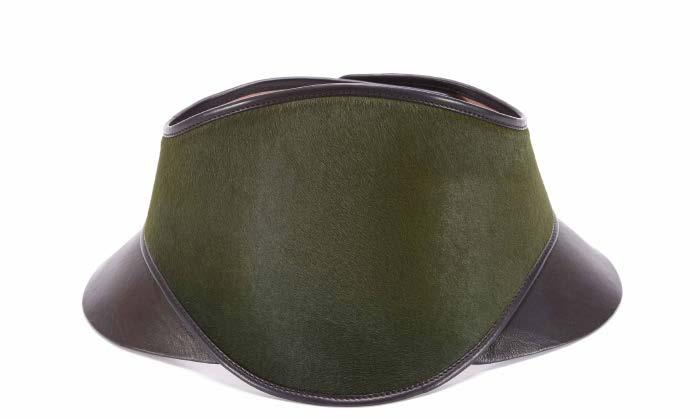
Capri | The Divine Coast 47 it object





Re per una sera


KING FOR A NIGHT text Marta Innocenti Ciulli



Se essere contemporanei significa essere perfetti twenty for seven, sarà utile studiare un modo di vestire molto semplice, dove però piccoli dettagli suggeriscono come la pensi. Fermacravatte Prada. If being contemporary means being perfect twenty-four seven, we better find a way to dress very simply, with small details telling about us. Prada tie-pin.

Capri | The Divine Coast 49 it object





O’ Babà
text Francesca Lombardi
O’ Babà il Magnifico era un sultano di animo nobile e generoso. Sovrano di Anacapri, ci accolse durante un caldo pomeriggio estivo nella sua Stanza Delle Tentazioni per un lungo e golosissimo... morso! Ristorante e Beach Club Il Riccio ad Anacapri O’ Babà the Magnificent was a noble-minded and good-natured sultan. The King of Anacapri, he welcomed us, on a hot summer afternoon, in his Room of Temptations for a long and mouth-watering…bite! Ristorante & Beach Club Il Riccio in Anacapri.

Coast 51 it
Capri | The Divine
object












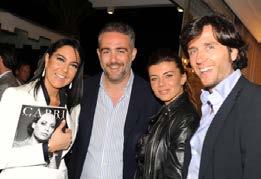





 Chicco Coda, Elena Moretti
Carlo and Stella Imò
shotonsite
Capri | The Divine Coast 55
Anna Seidensticker, Gianluca Fontani, John Genovese
Paolo Romanazzi, Eleonora Pieroni
Manuel Vanni, Nathalie Magnusson
Nicole Triunfo, Dario Castiglio
Vittoria and Simone Tincolini, Lorenzo Ristori, Ilaria Raffaelli
Cosimo Lepore, Michela Meccariello, Bianca Esposito
Carolina Federico, Cettina Caputo
Valeria Fiore, Matteo Parigi Bini, Giovanna Rei, Alex Vittorio Lana
Lucia and Alessandro Vivarelli
Valeria Fiore, Natalie Kriz
Presentation of the new issue of Capri the Divine Coast to the Capri Tiberio Palace. Sandals custom made by the craftsman Fiore for all the guests
Chicco Coda, Elena Moretti
Carlo and Stella Imò
shotonsite
Capri | The Divine Coast 55
Anna Seidensticker, Gianluca Fontani, John Genovese
Paolo Romanazzi, Eleonora Pieroni
Manuel Vanni, Nathalie Magnusson
Nicole Triunfo, Dario Castiglio
Vittoria and Simone Tincolini, Lorenzo Ristori, Ilaria Raffaelli
Cosimo Lepore, Michela Meccariello, Bianca Esposito
Carolina Federico, Cettina Caputo
Valeria Fiore, Matteo Parigi Bini, Giovanna Rei, Alex Vittorio Lana
Lucia and Alessandro Vivarelli
Valeria Fiore, Natalie Kriz
Presentation of the new issue of Capri the Divine Coast to the Capri Tiberio Palace. Sandals custom made by the craftsman Fiore for all the guests




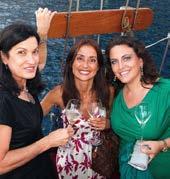


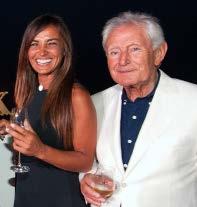

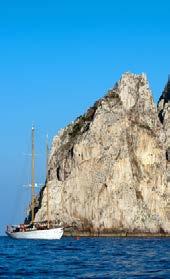

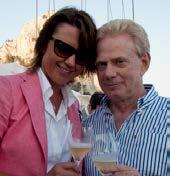
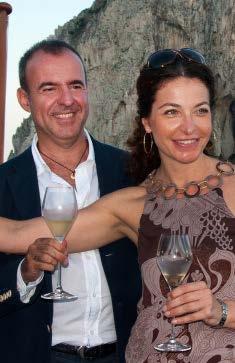
 Margareth Henriquez, Romain Cans
Margareth Henriquez, Antonio Sersale
Dani del Secco D’Aragona, Oliviero Rainaldi
Margareth Henriquez, Emilia Paglicci Reattelli
Patrick and Tasmin Johnson, Raimonda Gaetani, Antonio and Carla Sersale
Charles and Costanza Peugeot, Maria Marigliano Caracciolo, Laure Peugeot
Paolo Romanazzi
Simone D’Aniello, Fabrizio and Valentina Pascucci
Cocktail party on the Orianda vintage sailing ship and dinner at La Fontelina, exclusively for Krug, with view of the Faraglioni
shotonsite
56 Capri | The Divine Coast
Patrick and Tasmin Johnson, Jane Cardani
Giuseppe Ferrajoli
Giuseppe Duva, Francesca Terragnia
Margareth Henriquez, Romain Cans
Margareth Henriquez, Antonio Sersale
Dani del Secco D’Aragona, Oliviero Rainaldi
Margareth Henriquez, Emilia Paglicci Reattelli
Patrick and Tasmin Johnson, Raimonda Gaetani, Antonio and Carla Sersale
Charles and Costanza Peugeot, Maria Marigliano Caracciolo, Laure Peugeot
Paolo Romanazzi
Simone D’Aniello, Fabrizio and Valentina Pascucci
Cocktail party on the Orianda vintage sailing ship and dinner at La Fontelina, exclusively for Krug, with view of the Faraglioni
shotonsite
56 Capri | The Divine Coast
Patrick and Tasmin Johnson, Jane Cardani
Giuseppe Ferrajoli
Giuseppe Duva, Francesca Terragnia
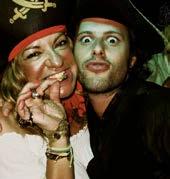

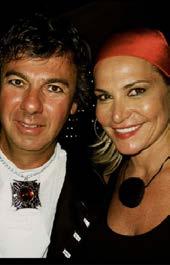










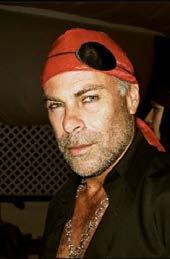 Nadia Knorpp, Dario Castiglio
Ferruccio De Lorenzo, Louise Von Celsing
shotonsite
Capri | The Divine Coast 57
Ugo Colombo, Simona Ventura
Chicco Coda, Marianna Lembo
Marco Moraci,Veronica Maya
Beatrice Mozzi, Ferruccio De Lorenzo
Antonella Buti, Giuseppe De Lorenzo, Lucrezia Buti
Ferruccio De Lorenzo, Roy Capasso, Lola De Paola, Giuseppe De Lorenzo
Fiona Swarovski, Guido Lembo
Giorgio Paladino, Isabella Giansante
Orazio and Giampiero Rispo
Pippo and Ercole Santonocito
Simone Casiglia,Giacomo Nicolodi
Nadia Knorpp, Dario Castiglio
Ferruccio De Lorenzo, Louise Von Celsing
shotonsite
Capri | The Divine Coast 57
Ugo Colombo, Simona Ventura
Chicco Coda, Marianna Lembo
Marco Moraci,Veronica Maya
Beatrice Mozzi, Ferruccio De Lorenzo
Antonella Buti, Giuseppe De Lorenzo, Lucrezia Buti
Ferruccio De Lorenzo, Roy Capasso, Lola De Paola, Giuseppe De Lorenzo
Fiona Swarovski, Guido Lembo
Giorgio Paladino, Isabella Giansante
Orazio and Giampiero Rispo
Pippo and Ercole Santonocito
Simone Casiglia,Giacomo Nicolodi
The amazing birthday party held every year by the De Lorenzo twins. Pirate-style was this summer’s party theme
Pierre Bennati
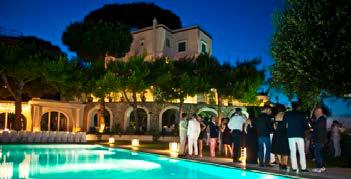

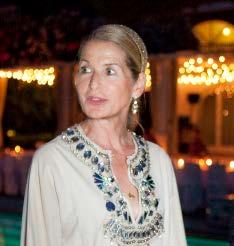


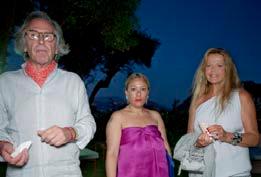


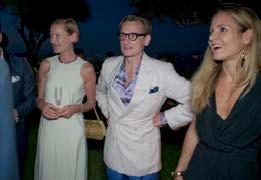
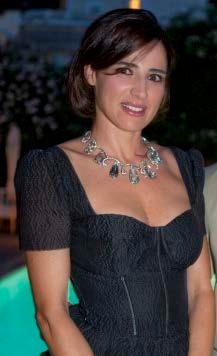

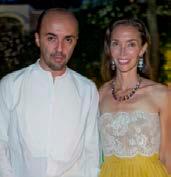
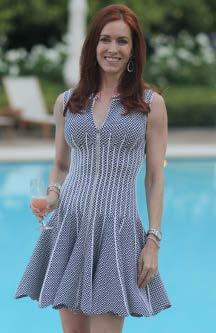
 shotonsite
58 Capri | The Divine Coast
Kai Margrander, Roberto Faraone Mennella
Susanne Thun
Patricia Gucci, Gregory Lee
Gabriella Migliore, Filippo Verani Masin
Paolo Fiorillo, Matilde Carli, Mariella Fiorillo
Alexander Werz, Luca Lanzoni
Amedeo Scognamiglio, Luca Zingaretti
Susanne Thun and Hamish Bowles
shotonsite
58 Capri | The Divine Coast
Kai Margrander, Roberto Faraone Mennella
Susanne Thun
Patricia Gucci, Gregory Lee
Gabriella Migliore, Filippo Verani Masin
Paolo Fiorillo, Matilde Carli, Mariella Fiorillo
Alexander Werz, Luca Lanzoni
Amedeo Scognamiglio, Luca Zingaretti
Susanne Thun and Hamish Bowles
Jewelry Designers, Roberto Faraone Mennella and Amedeo Scognamiglio, celebrate the opening of the first Faraone Mennella boutique in Capri, with a glamorous party at the JK Place
Luisa Ranieri
Spiro Tsaparas, Corri McFadden
Francesco Scognamiglio and Olivia Chantecaille
Rachel Sumers
Amedeo Scognamiglio
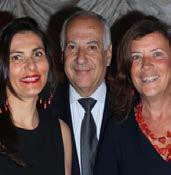

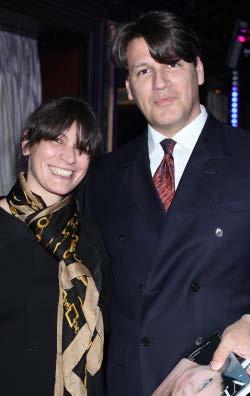





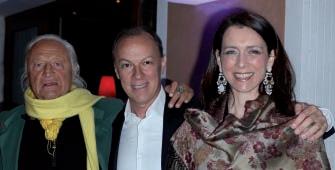



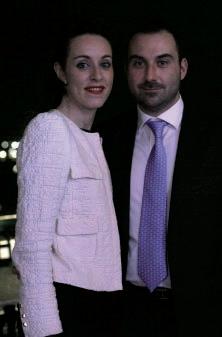
 Roberta Rossi, Fabio Cerchi, Sandra Biasutti
Alessandra and Alessandro Zoppi
shotonsite
Federica Repetto, Rodrigo Basilicati
Laura Corjero, Maria Doria
Roberto Panciera,Luigi Brugnaro
Silvia Lucchesi, Neri Torrigiani, Lucia Montignani
Ludovico De Luigi, Enrico Martellozzo, Renata Rami
Alex Vittorio Lana, Fabrizio Plessi, Matteo Parigi Bini
Francesco Coin, Michela Rossi
Costas Voyatzis, Paola Manfredi, Cesare Cunaccia
Mattia Carlin, Paolo Lorenzoni
Michela Garron, Max Boscaro
Giuliana and Giancarlo Caprioglio
Roberta Rossi, Fabio Cerchi, Sandra Biasutti
Alessandra and Alessandro Zoppi
shotonsite
Federica Repetto, Rodrigo Basilicati
Laura Corjero, Maria Doria
Roberto Panciera,Luigi Brugnaro
Silvia Lucchesi, Neri Torrigiani, Lucia Montignani
Ludovico De Luigi, Enrico Martellozzo, Renata Rami
Alex Vittorio Lana, Fabrizio Plessi, Matteo Parigi Bini
Francesco Coin, Michela Rossi
Costas Voyatzis, Paola Manfredi, Cesare Cunaccia
Mattia Carlin, Paolo Lorenzoni
Michela Garron, Max Boscaro
Giuliana and Giancarlo Caprioglio
Elegance and charm. That’s how you’d describe the party previewing the new Venezia, Made in Veneto, on the terrace of the Danieli hotel
Capri | The Divine Coast 59















 divine
62 Capri | The Divine Coast
Lo Scià di Persia e Soraya, sul molo della Canzone del Mare The Shah of Persia and Soraya, on Canzone del Mare’s
divine
62 Capri | The Divine Coast
Lo Scià di Persia e Soraya, sul molo della Canzone del Mare The Shah of Persia and Soraya, on Canzone del Mare’s
La notizia dell’arrivo di Faruk a Capri fece il giro del mondo. Era la primavera del ’52 e il re d’Egitto, costretto ad abdicare, arrivò con il suo panfilo sull’isola per il suo esilio dorato fra belle donne e tavoli da poker. Valerio stava scendendo alla Canzone del Mare con l’amico Achille quando due guardie del corpo li avvicinarono intimando di fermarsi. Poco più in là, alla fine della discesa che porta allo stabilimento, Faruk porgeva un mazzo di fiori all’attrice Eva Bardock. Uno scatto fortunato e incominciò così, con il grande amico Achille Ciccaglione, per tutti Lillino, storico corrispondente dell’isola, la carriera di Valerio Di Domenico, il primo fotografo di Capri.
E’ Luisa, la moglie di Valerio, a raccontarci quei meravigliosi anni in cui tutto il mondo passava da Capri e in cui suo marito e l’inseparabile Lillino accoglievano gli ospiti dell’isola con quel sorriso e quella gentilezza innata che li fece diventare intimi dei personaggi più noti della dolce vita. Luisa ha vissuto una vita a fianco del marito, anche lei dietro l’obiettivo, non a scattare ma a scrivere i nomi sulle foto e a compilare le didascalie per il fuorisacco (la busta da inviare al giornale contenente le stampe preziose, ndr) che veniva consegnato al fidato marinaio della nave che da Capri portava a Napoli, in un interrotto passaggio di mano in mano per arrivare il più presto possibile a Roma, e poi in tutto il mondo. Luisa, ha quasi novant’anni, ci racconta quei giorni con la memoria di una ventenne, passando le foto di mano in mano sul tavolo di casa e ripercorrendo gli aneddoti legati ai molti volti noti delle cronache di quegli anni. E anche se la vista non è come allora, nei sui occhi si rivivono frammenti di quei momenti meravigliosi, quando tutto il mondo voleva sognare guardando Capri e grazie a Valerio riusciva a vivere quegli attimi indimenticabili.
Dietro una storia
BEHIND A STORY
text Matteo Parigi Bini photo Valerio Di Domenico
News regarding Faruk’s arrival in Capri made its way around the world. It was the summer of 1952. Having been forced to abdicate, the king of Egypt came to the island on his yacht, intent on living out his golden exile amidst beautiful women and poker tables. Valerio was going down to the Canzone del Mare with his friend Achille when two bodyguards came up to them, warning them to stop. A little further down, at the end of the downhill path leading to the resort, Faruk was giving a bouquet of flowers to actress Eva Bardock. One lucky shot and that’s how his career skyrocketed: Valerio di Domenico became Capri’s foremost photographer, flanked by his great friend Achille Ciccaglione, known as Lillino, the island’s historic correspondent.
Luisa, Valerio’s wife, tells us all about those marvelous years when the whole world seemed to pass through Capri. It was then that her husband and his inseparable side-kick Lillino would welcome guests to the island; their smiles and authentic kindness allowed them to cultivate intimate friendships with the Dolce Vita’s most famed protagonists. Luisa lived her life beside her husband, right there behind the lens of a camera. Yet, rather than taking photos, she was in charge of writing names on each shot, filling out captions for the special delivery (the package that would be sent to the newspaper, filled with precious prints). It would be handed over to a trustworthy sailor sailing from Capri to Naples, passing uninterrupted from hand to hand. It would reach Rome with Godspeed, before being released to the entire world.
Luisa is nearly ninety-years-old, yet she tells of those days with the memory of a twenty-year-old, shuffling photographs in her hands as we sit at the dining room table, sifting through anecdotes linked to the well-known faces that populated society columns during those years. And even if her eyesight isn’t what it used to be, her eyes still shine with the thought of those marvelous moments, when the entire world looked to Capri as a dreamscape; thanks to Valerio, people were able to experience unforgettable moments. This is true because Valerio had managed to take that photo of Faruk playing romantic expat,
divine
Capri | The Divine Coast 63
history


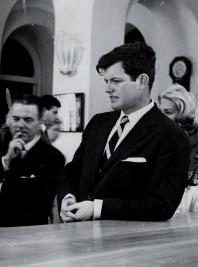
 64 Capri | The Divine Coast
From above clockwise: Antonio De Curtis in art Totò, Ted Kennedy, Axel Munthe, Ingrid Bergman with Roberto Rossellini
64 Capri | The Divine Coast
From above clockwise: Antonio De Curtis in art Totò, Ted Kennedy, Axel Munthe, Ingrid Bergman with Roberto Rossellini

65
Capri | The Divine
Coast
Peter Sellers with his wife Britt Ekland and daughter Victoria
Sì, perché Valerio quella foto di Faruk esule e romantico la scattò ancor prima che le guardie del corpo lo bloccassero, e così velocemente che nemmeno Lillino se ne accorse. Quella foto gli aprì le porte alle più importanti agenzie di stampa e gli valse un contratto sia con l’Associated Press che con la United Press.
Il tavolo da pranzo della bella villa con vista sui Faraglioni, è ormai invaso dalle foto che riempivano le prime pagine delle riviste dell’epoca, con i magnifici scorci dell’isola che fanno da sfondo ai volti sorridenti dei tanti personaggi. Luisa a un tratto tira fuori da un cassetto della vecchia madia un piccolo quaderno ingiallito, lascia che gli occhiali scivolino sul suo vestito azzurro e incomincia a leggere con la sua voce leggera ma ferma e il lieve accento napoletano: Anita Ekberg, Anna Magnani, Alberto Sordi, Anna Maria Ferrero. l’allora ambasciatore degli Stati Uniti, il funerale di Curzio Malaparte, Claudia Cardinale, Clark Gable, Greta Garbo, Ginger Rogers, Totò...
Le pagine ordinate, scritte con una grafia elegante, uno sopra l’altro, contengono i nomi dell’archivio di Valerio, da quell’indimenticabile primo scatto agli anni ’70. Più di 300 nomi e eventi. Per ogni personaggio Luisa ricorda un particolare o un piccolo aneddoto: la bellezza fuori dai canoni dell’epoca di Soraya ritratta con lo scià di Persia, la bellissima voce di Grace Fields mentre cantava dalla balconata vicino al Piccolo Bar in Piazzetta, gli occhi enormi di Joan Crawford, John Wayne che esce dall’hotel Morgano Tiberio, l’incontro davanti a Scialapopolo di Aristotele Onassis con moglie Athina Livanos e Jacky Kennedy prima della morte del marito. Su alcuni nomi si sofferma di più, su altri accenna un sorriso, su alcuni passa velocemente come per volergli dare meno importanza. Lillino, che era il primo a sapere degli ospiti in arrivo a Capri, un giorno chiese a Valerio di recarsi al Quisisana. Valerio si affrettò a scendere dalla Piazzetta verso via Camerelle e vide Lucky Luciano seduto a uno dei tavoli della terrazza dell’albergo con il fratello dell’allora presidente americano Kennedy. Mise velocemente a fuoco la scena con la sua fidata Rolleiflex e si affrettò in negozio per svilupparla. Dopo pochi minuti arrivarono i carabinieri e Valerio capì immediatamente che quello scatto non sarebbe mai stato stampato. before his bodyguards were able to stop him—so fast, in fact, that not even Lillino noticed. That photo gave him access to some of the world’s most important press agencies and earned him a contract with both the Associated Press and the United Press.
Luisa hosts us in her lovely villa with a view of the Faraglioni. The dining room table has been invaded with the photographs that had graced the cover page of the era’s magazines. They offer magnificent glimpses of the island, a backdrop for the smiling faces of multiple celebrities. Luisa suddenly reaches inside a drawer of her old cupboard and pulls out a small yellowing notebook. She lets her glasses slide down onto her blue dress and begins reading with her soft but firm voice; she speaks with a slight Neapolitan accent: Anita Ekberg, Anna Magnani, Alberto Sordi, Anna Maria Ferrero. The thenambassador of the United States, Curzio Malaparte’s funeral, Claudia Cardinale, Clark Gable, Greta Garbo, Ginger Rogers, Totò...
These well-ordered pages are written in elegant script. One after the other, we see the names in Valerio’s archives, starting with that unforgettable first shot in the 1970s. There are more than 300 names and events linked to the Faraglioni island. Luisa remembers a detail or short anecdote for each person: Sorayam’s beauty and how it went beyond the era’s canons as she posed with the with the shah of Persia, Grace Fields and her beautiful voice as she sang from the balcony near the Piccolo Bar in the Piazzetta. Joan Crawford’s enormous eyes, John Wayne coming out of the Morgano Tiberio Hotel. Aristotele Onassis and his wife Athina Livanos meeting Jackie Kennedy outside of the Scialapopolo, before her husband’s death. She spends more time on some names, others she acknowledges with a smile. She quickly passes over some, as if wishing to give them less importance.
Lillino was the first to know about the arrival of visitors to Capri and one day he asked Valerio to go to the Quisisana. The latter hurried down from the Piazzetta, making his way toward Via Camerelle, where he saw Lucky Luciano sitting at a table on the terrace of his hotel with the brother of John F. Kennedy, who had already been elected the American president. Valerio quickly focused on the scene with his trusty Rolleiflex, hurrying back to the shop to develop it. The military police arrived just a few minutes later and, Valerio immediately understood that that photo would never get printed: he handed over the roll of film.
divine history 66 Capri | The Divine Coast
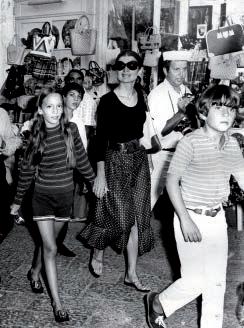
Coast 67
Capri
| The Divine
Jackie Kennedy on a stroll with her children
Left:
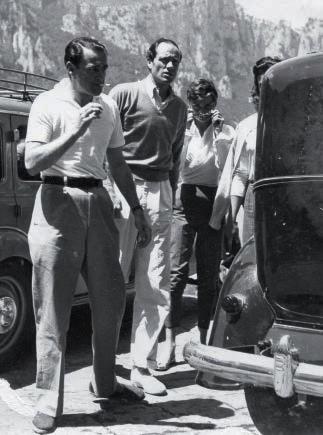

Right:
 divine
68 Capri | The Divine Coast
Above: Curzio Malaparte, in his villa on Capri.
Mel Ferrer with Audrey Hepburn
Princess Margaret as she’s leaving the island
divine
68 Capri | The Divine Coast
Above: Curzio Malaparte, in his villa on Capri.
Mel Ferrer with Audrey Hepburn
Princess Margaret as she’s leaving the island

Coast 69
Capri | The Divine
Valerio Di Domenico with Aristotele Onassis
Napoli, secondo me
NAPLES, FROM MY VIEWPOINT
text Giovanni Bogani photo Henny Garfunkel
Matteo Garrone. A Capri Hollywood per presentare Reality, il suo ultimo film

Matteo Garrone. At Capri Hollywood to present his new movie, Realty
Tutti pensano che sia napoletano, Matteo Garrone. Perché ha raccontato la Campania violenta, feroce e criminale in Gomorra, premiato a Cannes col Gran premio della giuria. Perché torna a raccontare Napoli, la Napoli dei sogni impossibili, di una voglia di riscatto che viene affidata al miracolo – anche se questo miracolo ha la forma di uno show televisivo – in Reality, anche questo premiato a Cannes, e in arrivo a settembre sugli schermi italiani. Uno dei film in corsa per rappresentare l’Italia agli Oscar sarà certamente il suo.Matteo, però, non è napoletano. E’ romano, figlio del critico teatrale Nico Garrone e della fotografa Donatella Rimoldi. Anche se dei napoletani ha l’apparente indolenza, e quel sorriso che sembra difenderlo da tutto. Ha anche quell’aria di non voler mai dire niente di speciale, quando parla. C’è chi ha detto che indossa un giubbotto antigiornalista. E forse ha anche ragione. Ma lo fa con stile. A Capri, al festival Capri, Hollywood, Garrone arrivò con uno dei suoi primi film, L’imbalsamatore. E magari ci tornerà, ora che la sua carriera ha preso un colpo d’ala straordinario. Signor Garrone, come racconterebbe Reality a chi deve ancora vederlo?
Non ci riuscirei. L’ho visto così tante volte che non riesco a giudicarlo. E poi, penso che qualsiasi spiegazione toglierebbe allo spettatore la sua, importantissima, libertà.
Qualcuno aspettava un film crudo, di denuncia sociale e politica, come Gomorra. Ma questo è un film del tutto diverso.
Sì, è diverso perché volevo liberarmi di Gomorra, dal blocco emotivo e psicologico che mi era venuto dopo quel successo, dopo tutti quei premi. Volevo un film piccolo, leggero, semplice. Ma in realtà, anche questa favola amara, racconta l’Italia: solo che la racconta in un altro
Everyone’s convinced that Matteo Garrone is Neapolitan. It’s because he told of the Campania region’s violent, fierce criminal side in Gomorrah, which earned the Grand Jury Prize at Cannes. It’s also because he’s back recounting Naples once more. This time, it’s a Naples filled with impossible dreams and the desire for redemption thanks to a miracle-even if the miracle comes in the form of a television show. Realitywhich was also an award-winner at Cannes-is coming to Italian movie houses this September. His movie is certainly in the running when it comes to representing Italy at this year’s Oscars. Matteo is not Neapolitan, however. He’s Roman and the son of theater critic Nico Garrone and photographer Donatella Rimoldi. Nonetheless, from the Neapolitans, he did get his seeming air of apparent indolence and a smile that’s capable of defending him from anything. He also gives the impression of never wanting to say anything special when he talks. There are those who say that he wears a journalist-proof vest. And maybe they’re right. Still-he does it with style. Garrone came to the island for the ‘Capri Hollywood Festival’ with his first movie L’imbalsamatore. Perhaps he will come again, now that his career has taken extraordinary flight. Garrone, how would you describe Reality to someone who hasn’t seen it yet?
“I wouldn’t be able to. I’ve seen it so many times that I can’t judge it, or see it from the outside. And then, I think that any explanation would rob the viewer of their own extremely important freedom.”
Some were expecting a raw film aimed at social and political protest like Gomorrah. But this film is entirely different.
“Yes, it’s different because I wanted to free myself from Gomorrah and from the emotional and physiological block I experienced after that success-after all those awards. I wanted a small movie that was light and simple. Yet, in reality, this
70 Capri | The Divine Coast cover story
 Capri | The Divine Coast 71
Matteo Garrone, born in Rome on October 15, 1968, is an Italian director, scriptwriter, movie producer and set designer
Capri | The Divine Coast 71
Matteo Garrone, born in Rome on October 15, 1968, is an Italian director, scriptwriter, movie producer and set designer
 72 Capri | The Divine Coast
The director walked away with the Grand Prix Special Jury Prize at the Festival of Cannes for Gomorrah in 2008 and Grand Prix Special Jury Prize for Reality in 2012
72 Capri | The Divine Coast
The director walked away with the Grand Prix Special Jury Prize at the Festival of Cannes for Gomorrah in 2008 and Grand Prix Special Jury Prize for Reality in 2012
modo. Racconta un’Italia in cui la televisione è diventata l’unico dio.
C’è una storia vera alla base della storia del film? Sì, una storia accaduta a Napoli. Anzi, le cose più bizzarre che ho messo nel film sono proprio quelle tratte dalla realtà.
Ci sono state delle voci, delle dichiarazioni da parte di alcuni personaggi, recentemente. Dicono che lei, per girare Gomorra, abbia dovuto pagare alcuni boss della camorra, per ottenere il loro permesso e lavorare in alcune zone...
Certo che no. Certo, avrò incontrato anche dei camorristi, durante i sopralluoghi del film, e magari durante le riprese. Se uno pensa che si possa raccontare quel mondo lì, standosene comodi a casa a leggere il giornale, buon per lui. In ogni caso, ho chiarito tutto con i magistrati.
Torniamo a Reality. Sembra di vedere molto Fellini nel suo film… Magari! Mi piacerebbe molto poter ricordare un maestro assoluto del cinema, italiano e non soltanto. Se penso a dei modelli di cinema, penso allo Sceicco bianco come a un mito assoluto. E poi Bellissima di Visconti certo che c’entra, con questo film. Il suo protagonista in Reality, Aniello Arena, è detenuto da vent’anni per omicidio. Ed è un attore straordinario. Che cosa l’ha spinta a utilizzarlo?
Lo volevo già per Gomorra, ma non era stato possibile lavorare con lui. Aniello è un attore del laboratorio teatrale di Armando Punzo, a Volterra, dunque ha un’enorme preparazione teatrale, non è un dilettante, anche se è in carcere da tanti anni. Questa sua condizione gli permette però di dare al personaggio un candore, un’innocenza legata al fatto di non conoscere il mondo dei reality, o di Cinecittà.

La location napoletana è molto importante. Napoli è una città straordinaria, ricca di contraddizioni, che conserva luoghi antichi, che ricordano le commedie di Eduardo. E il mio film è proprio una piccola commedia su un uomo comune, che desidera quello che tutti desiderano. Un Pinocchio moderno che insegue il sogno del successo facile in tv.
bitter fairytale is still telltale of Italy. It just speaks of it in another way. It spotlights an Italy where television has become the sole god.”

Is the movie based on a true story?
“Yes, it’s a story that happened in Naples. In fact, the most bizarre things I included in the movie are the ones taken from reality.”
There has been a bit of buzz lately, including declarations by some personalities who say that in order to film Gomorrah, you had to pay off some Camorra bosses, to get their permission and to work in some areas…

“Of course not. Certainly, I may have met some Camorra members while doing site inspections for the movie, and perhaps during filming. If a person thinks you can talk about that world, staying comfortably in your home reading the newspaper, well, good for him. In any case, I’ve clarified everything with the magistrates.” Let’s go back to Reality. It seems like there’s a lot of Fellini in your movie…
“Don’t I wish! I would really love to bring to mind an absolute master of cinema-Italian and not only. If I think about cinema’s models, I think of The white sheik as truly legendary. And then, there’s Visconti’s Bellissima which certainly has a lot to do with this movie.”
Reality’s star, Aniello Arena, is serving a twenty-year sentence for homicide. He’s an extraordinary actor, what pushed you to use him?
“I already wanted him for Gomorrah, but it wasn’t possible to work with him. Aniello was an actor from Armando Punzo’s Theatrical Lab in Volterra, so he has an enormous amount of theatrical training. He’s not an amateur, even if he’s been in prison for many years. Nonetheless, his condition allows him to give the character candor, an innocence linked to the fact that he isn’t familiar with the world of reality shows or Cinecittà.”
Naples as a location is very important. “Naples is an extraordinary city that’s full of contradictions. It still has old-style places that recall Eduardo’s plays. My movie is actually a small play-of-sorts about a common man who desires what everyone desires. He’s a modern Pinocchio who follows the dream of achieving easy success on TV.”
cover story Capri | The Divine Coast 73
The most bizarre things I included in the movie are the ones taken from reality
A few scenes from Realty, filmed by Matteo Garrone
Emozioni napoletane
NEAPOLITAN EMOTIONS
text Gianluca Coda
Renzo Arbore in tournée con L’Orchestra Italiana racconta la sua Capri Renzo Arbore, on tour with Orchestra Italiana, describes his Capri

A colloquio con Renzo Arbore, musicista, cantante, conduttore radiofonico e televisivo, ma anche dj e talent scout. Lo raggiungiamo durante il suo tour con l’Orchestra Italiana, nata oltre venti anni fa per celebrare il suo amore per la musica napoletana. Lo attende un’estate piena d’impegni che lo vedrà protagonista in piazze e teatri di tutta italia.
Perché nel suo programma non troviamo Capri?
Perché è sempre molto difficile organizzare serate sull’isola. Più volte ci siamo andati vicini, ma ancora non abbiamo trovato un accordo. La Certosa sarebbe il luogo ideale, se ne parla sempre, ma non c’è nulla di concreto.
Quali ricordi la legano all’isola? Ho studiato giurisprudenza a Napoli e venivo a Capri in gita per poter respirare l’aria sublime di questo posto meraviglioso. Non potevo permettermi nemmeno un’aranciata, ma ero felice ugualmente. Frequentavo tutte le taverne e in quegli anni ho imparato le canzoni del repertorio napoletano, anche le meno note. Ricordo la Taverna degli Amici, Settebello, O’ Guarracino dei fratelli Lembo. Ho persino suonato, sia al Pipistrello che al Number Two. Poi ci sono tornato dopo i successi ottenuti in radio e televisione, e con Luciano de Crescenzo abbiamo creato la prima rassegna di musica napoletana. Con Capri c’è un legame ancora più profondo, vero?
Verissimo! A Villa Pina, al tempo famosa sala di registrazione, scelta in seguito anche da Madonna e Mariah Carey, è stato registrato Napoli. Punto e a Capo, il primo album dell’Orchestra Italiana. Un’emozione unica vivere intensamente l’isola in quella occasione. Un aneddoto di quell’esperienza?
Ricordo che andammo a Marina Piccola per catturare il rumore delle onde del mare con un registratore e poi le utilizzammo come sottofondo di Maria – Marì.
Riconosce a se stesso il merito di aver riacceso l’interesse per la canzone napoletana in tempi non sospetti?
La canzone napoletana allora non era apprezzata da tutti, solo da un pubblico molto colto, molto ristretto. Per finto snobismo, forse per
A talk with Renzo Arbore, musician, singer, television and radio host, DJ and talent scout. We met him while on his tour with Orchestra Italiana, founded over twenty years ago to celebrate his love of Neapolitan music. He has a busy summer ahead of him, full of concerts throughout Italy’s major piazzas and theatres. Why isn’t Capri listed among the tour dates? Because it is very difficult to plan a concert on the island. We got close to doing it several times, but have not reached an agreement yet. The Certosa would be the ideal venue, there is much talk about it, but nothing is done. What are your dearest memories of the island? I attended law school in Naples and I used to come to Capri to take in the sublime air of this wonderful place. I couldn’t even afford a drink while I was there, but I was happy nonetheless. I frequented all the taverns and I learned all the songs of the Neapolitan repertoire, even the less-known ones. I recall the Taverna degli Amici, Settebello, the Lembo brothers’ O’ Guarracino. I even performed at both the Pipistrello and Number Two. Then, years later, when I began working in television and radio broadcasting, I came back to Capri and, with Luciano de Crescenzo, I created the first Neapolitan music festival.
You have forged an even deeper bond with Capri, haven’t you? Absolutely true! I recorded Napoli. Punto e a Capo, the first album by Orchestra Italiana, at Villa Pina, which, at the time, was a famous recording studio, used by Madonna and Mariah Carey too. It was a unique and unforgettable experience. Can you tell us something amusing about that experience? We went to Marina Piccola to capture the sound of sea waves on a recorder and then we used it as background music for Maria - Marì. Do you take the credit for having revived the interest in this music genre?
Neapolitan music was a niche product for a limited and cultivated audience. Out of snobbery and, perhaps, ignorance, it was considered to be old-fashioned. The album Napoli. Punto e a Capo re-
74 Capri | The Divine Coast music interview
 Capri | The Divine Coast
Capri | The Divine Coast
75
Renzo Arbore (born in Foggia on June 24, 1937), musician, singer, television and radio host
 76 Capri | The Divine Coast
He founded Orchestra Italiana in 1991, to promote and relaunch traditional Neapolitan music
76 Capri | The Divine Coast
He founded Orchestra Italiana in 1991, to promote and relaunch traditional Neapolitan music
ignoranza, era considerata fuori moda e non ascoltata. Con l’incisione di Napoli. Punto e a Capo si è avuto il rilancio di questo grande patrimonio artistico che era lì e alla portata di tutti.
Qual è il suo segreto?
L’improvvisazione! Da tutti i lavori che ho fatto, anche dal jazz, ho imparato l’arte dell’improvvisazione. È così che ho scoperto la vena umoristica che non sapevo di avere.
Dopo oltre trenta anni si emoziona ancora se ripensa al Pap’occhio?
Infinitamente, anche perché il film, che nel 1980 fu campione d’incassi con 5 miliardi di allora e 5° posto assoluto nella classifica annuale, fu sequestrato dopo tre settimane di programmazione. Confesso che allora ero tranquillo, perché con la censura non avrei visto il declino degli incassi e per me, che chiudevo sempre i miei programmi all’apice degli ascolti e del gradimento, era un gran successo. Poi ero forte dei miei studi di giurisprudenza che mi dicevano che non avevamo colpe, che l’accusa di vilipendio di religione di stato era assolutamente infondata.
Nel 1980 intuì il “vero” volto di Giovanni Paolo II. Intuimmo il suo amore per i giovani, la sua fisicità, il suo istrionismo, la sua simpatia. Il Pap’occhio è stato fatto con incoscienza, come anche le altre cose che allora proponevamo ed è diventato, e non potevo saperlo, un cult movie Negli anni ha avuto il merito di aver scoperto moltissimi talenti come Roberto Benigni, Giorgio Bracardi, Mario Marenco, Marisa Laurito, Nino Frassica, Milly Carlucci, Daniele Luttazzi e di aver valorizzato altri come Michele Mirabella, Luciano De Crescenzo. Come valuta i talent show di oggi?
launched this great artistic heritage, which was there, within everybody’s reach.
What is the secret behind your success?
Improvisation! By doing all the jobs I’ve done, including playing jazz music, I’ve learned the art of improvisation. I adore improvising. That is how I discovered my streak of humour, an aspect of myself that I brought into my acting too. Both Pap’occhio and FF.SS were shot by making even Benigni and Martin Scorsese improvise. After 30 years, are you still moved by the thought of Pap’occhio? Yes, very much, mostly because the film, which was a blockbuster hit that made millions and ranked fifth at the box office in 1980, was censored and banned after only three weeks of screening. However, I was unworried, as I knew that censorship would have not affected the takings, and, to me, the film was a great success, as it enjoyed the highest popularity rating. Furthermore, being confident of my law studies, I knew we were blameless, because the charge of insult to the established religion was totally baseless. In 1980, you revealed the “true” face of Pope John Paul II.
the Montreaux
I sensed his love for young people, his physicalness, his theatrical talent, his charm. We were unconscious of what we were doing with Pap’occhio, which became a cult movie, without anyone knowing nor expecting it.
Renzo Arbore is responsible for having discovered many talented people over the course of time such as Roberto Benigni, Giorgio Bracardi, Mario Marenco, Marisa Laurito, Nino Frassica, Milly Carlucci, Daniele Luttazzi and for having fostered the career of Michele Mirabella and Luciano De Crescenzo.



Non male. Prima dei talent show c’erano i no talent show, programmi in cui certe signorine diventavano famose facendo nulla o mostrandosi intraprendenti. Chi aveva talento non aveva ribalte. Oggi ci sono programmi che pur piegandosi alla logica del business offrono concrete opportunità ai giovani talenti. A cosa sta lavorando in questo periodo?
Sto rivedendo tutto il materiale video degli ultimi 30 anni per creare un mix giusto da mandare su un canale tematico satellitare che si chiamerà Renzo Arbore Channel e che partirà a breve. Lavoro assiduamente anche alla realizzazione di Umbria jazz, di cui sono presidente, per trovare e proporre continuamente nuovi gruppi e nuovi talenti, spinto dalla passione che nutro per questo genere musicale.
What is your opinion of today’s talent shows?
Fairly good. Before the talent shows, there were the no-talent shows, in which some young ladies became popular by doing nothing or by simply being enterprising. Young talented people were offered no opportunities. Today, they are given a chance, despite the business logic behind these shows.
What have you been working on lately? I’m going over all the video material of the past 30 years for a program that will be shown soon on a satellite thematic channel called Renzo Arbore Channel. I’ve been also very busy with the organization of Umbria Jazz, of which I’m president, in order to find and hire new groups and talented musicians, driven by the passion I’ve always had for this music genre.
music interview
From
Jazz Festival to the Royal Albert Hall to New York’s Carnegie Hall
Capri | The Divine Coast 77
Renzo Arbore and Orchestra Italiana



 From top clockwise: Andrea Bocelli with David Foster, Mariah Carey, Pascal Vicedomini with Lindsay Lohan and Forest Whitaker
From top clockwise: Andrea Bocelli with David Foster, Mariah Carey, Pascal Vicedomini with Lindsay Lohan and Forest Whitaker
Trampolino verso Hollywood
SPRINGBOARD TO HOLLYWOOD
Il Festival dà il La all’anno cinematografico degli States The Festival opens the States’ film season
Capri. Diciassette anni fa ha immaginato un festival di cinema che si svolgesse tutto nell’isola azzurra. Lo ha ideato, lo ha costruito. E adesso Capri Hollywood è un appuntamento importante nel panorama cinematografico, in uno dei luoghi più amati. “Tutto è nato l’estate del 1995 - dice Pascal Vicedomini, che organizza e dirige il Festival, che si svolge nei giorni intorno a Capodanno -. Ero a Capri, e vedevo che tanti personaggi del mondo del cinema ci venivano, attratti dalla bellezza dell’isola, era un continuo viavai di star. Ho pensato: un festival qui sarebbe perfetto. Ero al ristorante da Paolino, dissi al proprietario: Faccio ‘Capri, capitale di Hollywood’. Così è nato Capri, Hollywood. Quell’inverno, l’evento ha visto la
luce, con il regista Carlo Carlei e l’attore Matthew Modine come primi ‘padrini’ del battesimo. Il festival iniziò al Quisisana, in un weekend del Thanksgiving”. Pascal Vicedomini ha cinquant’anni, ed è giornalista per la Rai, specializzato in spettacoli, musica e cinema.
Da anni, la sua creatura più importante è questo festival, con il quale riesce a fare venire a Capri una quantità di attori, di registi, di star della musica e del cinema difficile da immaginare.
Quando è stata, a suo avviso, la svolta che ha trasformato Capri, Hollywood da piccolo festival a evento di grande prestigio?
Direi già dalla seconda edizione; quando, grazie a uno sponsor illuminato che mise mano al portafogli, ho potuto invitare Luciano Pavarot-
Capri. Seventeen years ago, he imagined a cinema festival that would take place entirely on the Isola Azzura—the azure island—which, throughout history, has always been beloved by emperors, artists and writers. Then, he developed it and made it into what it is today. At present, ‘Capri Hollywood’ is an important event on the cinematographic scene and one of the most-loved rendezvous for stars, including American directors, screenwriters and producers.
“It all began in the summer of 1995,” Pascal Vicedomini explains. He organizes and directs the festival which takes place around New Year’s. “I was in Capri and I saw how many people from the movie industry were attracted to the island’s beauty: Naomi Campbell, Jim Belushi—it’s a steady stream of stars. And I thought: a festival here would be perfect. I was at the restaurant Da Paolino and I told the owner ‘You know what? I’m going to make ‘Capri, the capital of
Hollywood’. That’s how Capri Hollywood came to be. That winter, the event saw the light of day with director Carlo Carlei and actor Matthew Modine as the inauguration’s first ‘godfathers’. That’s how the festival began, at the Quisisana, during a Thanksgiving weekend.”
Pascal Vicedomini is fifty-years old and he’s a RAI journalist, specialized in entertainment, music and cinema. For years, this festival has been his most important brainchild; thanks to the event, he has managed to welcome unimaginable celebrities to Capri including a slew of actors, directors, musicians and movie stars.
In your opinion what was the turning point that changed ‘Capri Hollywood’ from a small festival into a large prestigious event?
“I’d say that it happened during our second edition, thanks to an enlightened sponsor who provided me with funding so that I could invite Luciano Pavarotti, Gérard Depardieu and Harvey Keitel. Italians were
Capri | The Divine Coast 79 interview
movie
“You know what? I’m going to make Capri the capital of Hollywood”
text Giovanni Bogani
ti, Gérard Depardieu e Harvey Keitel. Gli italiani erano ancora scettici – considero Pavarotti una star internazionale: gli unici ad incoraggiarmi furono, da subito, Lina Wertmuller, il grandissimo Tony Renis e il compianto Gillo Pontecorvo. Alla terza edizione, vennero Dante Ferretti e Anthony Minghella, fresco di tutti gli Oscar che aveva vinto per Il paziente inglese. Il festival era diventato adulto. Chi ricordai più di tutti, fra i molti ospiti che ha avuto? Nel 2001 ricordo Faye Dunaway e Giancarlo Giannini, F. Murray Abraham, Gino Paoli, Ferzan Ozpetek, Laura Morante. Da lì fu tutto un crescendo, con Vanessa Redgrave, Pietro Scalia montatore da Oscar, il compianto ministro Tremaglia, all’indomani di un momento difficile come l’attentato a Nassirya contro gli italiani in Iraq. E ancora, Terry Gilliam, l’autore di Brazil, Christian De Sica… L’approdo alla Certosa di San Giacomo nel 2007, con Dennis Hopper a fare da padrino – un altro amico che mi manca moltissimo. Piano piano, Capri Hollywood si è consolidato come l’evento con cui inizia la corsa verso l’Oscar. Si svolge in quelle date – dopo Natale, intorno a Capodanno – perché vuole essere funzionale al momento più importante del cinema mondiale. Precede persino il Sundance e i Golden Globes: è l’evento di partenza della corsa verso l’Oscar.
Da qualche anno organizza anche Los Angeles, Italia. Che porta autori italiani nel centro del mondo del
cinema mondia Sì. Abbiamo fatto sbarcare decine di artisti a Los Angeles, da Bellocchio a Pupi Avati, da Maselli a Lizzani, passando per Mario Monicelli. Abbiamo fatto avere a Bernardo Bertolucci e ad Andrea Bocelli la stella sulla Walk of Fame a Sunset Boulevard. Insomma, c’è un grande ponte con il cinema americano. Tutto questo nasce da Capri, dall’istituto Capri nel mondo a cui hanno aderito da subito Tony Petruzzi, all’epoca proprietario dell’hotel La Palma, e Paola De Angelis, proprietaria dell’Hotel La Residenza a Capri. Quali momenti ricorda con più emozione?
L’arrivo di Luciano Pavarotti, nel 1996. Il giorno prima c’era stato un nubifragio, le navi non partivano.
Pavarotti non voleva andare in elicottero, con quel tempo poi. Ero disperato. Il giorno dopo, per miracolo, si placarono le acque. Luciano arrivò, e fu una giornata indimenticabile, con la folla che lo acclamava per l’amore che si prova per chi rappresenta veramente l’anima dell’Italia.
I luoghi di Capri che le star amano di più?
Durante l’inverno, a Capri si possono godere tutte le zone interne. Loro visitano le ville storiche romane, San Michele ad Anacapri, si lasciano affascinare da un paesaggio aspro, forte, bellissimo. Dalla roccia che è la vera forza dell’isola.
still skeptical—I consider Pavarotti an international star: the only ones who gave me encouragement right away were Lina Wertmuller and the late Gillo Pontecorvo. By the third edition, we welcomed Dante Ferretti and Anthony Minghella, fresh from all the Oscars he’d won for The English Patient. That’s when the festival became an adult.” Who do you remember the most out of all the guests you’ve had?
“In 2001, I remember Faye Dunaway and Giancarlo Giannini, F. Murray Abraham, Gino Paoli, Ferzan Ozpetek and Laura Morante. From there, things continued in crescendo with Vanessa Redgrave, Pietro Scalia, an Oscarlevel editor, and the late Minister Tremaglia, following a difficult moment like the Nassiriya attack against the Italians in Iraq. Then, there was Terry Gilliam, the author of Brazil, and Christian De Sica. We went to Certosa di San Giacomo in 2007 and Dennis Hopper was our ‘godfather’; he’s another friend I miss terribly. Little by little, Capri Hollywood established itself as the event that kicks off the race toward the Oscars. Its scheduled after Christmas, right around New Year’s, because it aims to serve the most important moment in the cinema industry. It even precedes the Sundance and the Golden Globes—like I said, it’s the initial event in the race toward the Oscars.”
For the past few years, you’ve also been organizing “Los
Angeles, Italia”. Its aim is to bring Italian authors to the forefront of the world-wide cinema industry.
“Yes, we’ve brought a few dozen artists to Los Angeles including Bellocchio and Pupi Avati, Maselli and Lizzani, not to mention Mario Monicelli. We got Bernardo Bertolucci and Andrea Bocelli their stars on Sunset Boulevard’s ‘Walk of Fame’. Overall, it’s about creating a bridge toward American cinema.
All of this sprang from Capri from the Capri Institute in the world. Tony Petruzzi, who at the time owned the La Palma Hotel, and Paola De Angelis, the owner of Capri’s Hotel La Residenza adhered to it right away.”
Which memories give you the biggest thrill?
“The arrival of Luciano Pavarotti in 1996. There had been a downpour the day before and the ships weren’t departing. Pavarotti didn’t want to come over by helicopter, especially in that weather. I was desperate. The next day, as if by a miracle, the waters became calm. Luciano arrived and it was an incredible day; the crowds cheered for him with a brand of love you can only feel for someone who truly represents the soul of Italy.”
Which spots in Capri do the stars love the most?
“During the winter, one can enjoy all of Capri’s internal spots. They visit its historic Roman villas, San Michele and Anacapri. They let themselves become enchanted by its sparse powerful landscape—the extreme beauty of it… enchanted by its crags; they’re the source of the island’s authentic strength.”
80 Capri | The Divine Coast
interview movie
“It even precedes the Sundance and the Golden Globe, it’s the initial event in the race toward the Oscars”
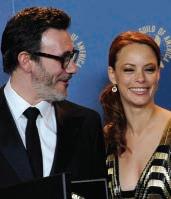

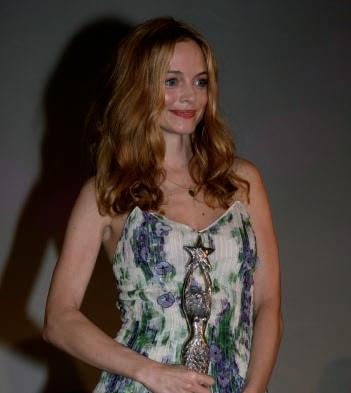



4 3 2 1 5 6
1. Samuel L. Jackson and Danny Glover 2. Heather Graham 3. Michel Hazanavicius and Bérenice Bejo 4. Lina Wertmuller and Dennis Hopper 5. John Malkovich 6. Dante Ferretti Pascal Vicedomini and Francesca Lo Schiavo
Mark Elliott Zuckerberg, born in White Plains on May 14, 1984, is the renowned founder of Facebook.
He got married last May and spent a few days on Capri to celebrate

Le vite degli altri
THE LIVES OF OTHERS
text Gianluca Coda
E le nostre. Come le ha cambiate il fenomeno Facebook. Parla il suo inventore, Mark Zuckerberg And our own. How the Facebook phenomenon changed our lives. Its inventor Mark Zuckerberg has the floor
Nel 2008 la rivista statunitense Forbes lo ha nominato "Il più giovane miliardario al mondo". Nel 2011 aveva un patrimonio netto di 17,5 miliardi di dollari, sceso a 14,7 miliardi nei primi mesi del 2012 a causa delle difficoltà legate al Nasdaq, l’indice dei principali titoli tecnologici della borsa americana. Mark Zuckerberg è co-fondatore e amministratore delegato di Facebook, società che ha visto il suo valore al momento della quotazione fissato alla cifra record di 104 miliardi di dollari, e ne possiede il 24% delle azioni. Aria dimessa, aspetto rapito da turista occasionale, zaino in spalla e smartphone a portata di mano. Il suo aspetto lo tradisce, e difficilmente ci riporta al "personaggio dell'anno 2010” della prestigiosa rivista Time, ma dietro gli occhiali da sole un po’ retrò si cela una delle menti informatiche più brillanti e creative del nostro secolo. Il 19 maggio ha sposato Priscilla Chan, sua fidanzata da circa 8 anni, e dopo una settimana eccolo qui, sulla nostra bellissima isola. Lo incontriamo all’uscita del ristorante “Da Giorgio” e complice l’atmosfera caprese, in una giornata dal clima più estivo che primaverile, ci concede qualche minuto del suo tempo.
Comprendiamo la voglia di riservatezza di un personaggio in vista come lei, ma dal fondatore del social network più importante del pianeta ci aspettavamo un annuncio diverso Quello che stiamo vivendo è un momento delicato per Facebook e non volevo attrarre l’attenzione con comunicati inerenti la nostra vita privata.
È stata una sorpresa anche per gli invitati?
Gli invitati, parenti più stretti e amici più intimi, erano pronti per festeggiare la laurea in medicina di Priscilla e non immaginavano assolutamente di dover assistere alla celebrazione del nostro matrimonio. È stato divertente leggere lo stupore sui loro volti.
Cosa vi ha spinto a scegliere l’Italia per il vostro viaggio di nozze?
La scelta di visitare il vostro splendido paese l’abbiamo presa quasi naturalmente. Tutti negli States amano l’Italia e quale occasione migliore per visitarla se non durante la luna di miele? La costiera amalfitana, Roma, Firenze e Venezia sono i posti che tutti sognano
In 2008, the American magazine Forbes nominated him ‘the world’s youngest billionaire’. By 2011, his net assets equaled 17.5 billion dollars, a figure that decreased to 14.7 billion during the first few months of 2012 due to difficulties linked to Nasdaq, the main index featuring technological titles on the American Stock Exchange. Mark Zuckerberg is co-founder and managing director of Facebook, a company that was initially quoted at the record-breaking value of 104 billion dollars. He currently owns 24% of its shares. There is a casual air about him and the enraptured look of the occasional tourist—he carries a rucksack on his back and a Smartphone within reach. His looks betray him; at a glance, it’s hard to imagine that he was ‘Person of the year 2010’ for the prestigious magazine Time. Still—behind his slightly vintage sunglasses, hides one of our century’s the most brilliant and creative computer science minds.
On May 19, Zuckerberg married Priscilla Chan, his girlfriend of eight years. And one week later, he showed up on our beautiful island. We met him on his way out of Ristorante ‘Da Giorgio’. An accomplice to Capri’s flair, the day felt more akin to summer than to spring and he offered us a few minutes of his time.

We understand how a high-profile person like you would want privacy, but from the founder of the most important social network on the planet, we expected a different kind of announcement. We’re experiencing a delicate moment for Facebook right now and we don’t want to attract attention with press releases regarding our personal life.
Was it a surprise for those who were invited as well?
The people invited—close relatives and friends—were ready to celebrate Priscilla’s graduation from medical school and they didn’t even dream of attending our wedding. It was fun to see the shock on their faces.
What made you chose Italy for your honeymoon?
The decision to visit your wonderful country came about almost naturally. Everyone in the States loves Italy and what better time to visit it than on one’s honeymoon? The Amalfi Coast, Rome, Florence and Ven-
Capri | The Divine Coast 83
interview technology
di vedere almeno una volta nella vita.
Il momento delicato di cui parlava Mark Zuckerberg sembra tutt’altro che finito. Quando ha fatto il suo esordio in borsa Facebook ha chiuso a solo 23 centesimi sopra il prezzo di apertura, mentre ci si attendeva una chiusura di 20 o 30 dollari più alta.
Molti sostengono che si sia evitato il peggio grazie all’intervento di Morgan Stanley, che per sostenere e stabilizzare il titolo ha acquistato circa 30-40 milioni di azioni. Cosa si aspetta dal futuro di Facebook?
I grandi fondi di investimento e le grandi banche finanziarie credono in società come la nostra e ci danno fiducia con i loro investimenti. Siamo solo all’inizio ed è normale che in un momento di forte contrazione economica ci sia un rallentamento e un po’ di diffidenza verso una nuova collocata. Quando Facebook era una società a capitali privati non era esposta come altre alla crisi, ma questa difficile situazione riguarda tutti.
Qual è il segreto di Facebook?
Facebook ha il compito di far comunicare le persone tra loro e fino a quando lo renderemo possibile, soddisfacendo i bisogni degli utenti e non deludendo le loro aspettative, avremo successo. L’importante è rispettare la mission e non allontanarsi dall’obiettivo. La voglia di comunicare è un valore universale e la gente lo sentirà sempre. Noi siamo un prodotto che appaga questa voglia e veniamo usati per questo.

Mark Zuckerberg ha aderito già da tempo al Giving Pledge, la proposta lanciata qualche anno fa da Bill Gates e Warren Buffett, circa la possibilità di lasciare gran parte del proprio patrimonio in beneficenza, iniziativa che sta riscuotendo sempre più successo tra i miliardari più in vista.


Nel suo futuro c’è la filantropia?
Lo sviluppo di piattaforme informatiche e la programmazione sono parte integrante della mia vita. Fino a quando sentirò gli stimoli giusti continuerò con il mio lavoro e al momento ho ancora tante idee da sviluppare e imminenti novità che riguardano Facebook.
La filantropia resta tuttavia un atto dovuto, sotto tutti i profili, morale, umano e anche economico, e certamente dedicherò in futuro tempo sempre maggiore a progetti che la riguardano.
Cosa le è piaciuto del suo viaggio in Italia?
Roma ci ha stregati. È una città fantastica, unica... La vera rivelazione è stata la costiera amalfitana, non pensavamo minimamente potesse essere così bella. Sembra disegnata dalla mano di un artista.
ice are all places everyone dreams of seeing at least once in their lives. The delicate moment Mark Zuckerberg was referring to seems far from over. When Facebook made its debut on the stock market, it closed just 23 cents above its opening price, whereas experts had expected the closing rate to be some 20 to 30 dollars higher.
Many people feel that the worst case scenario was avoided thanks to Morgan Stanley’s intervention, when he purchased about 30 to 40 million shares in order to support and stabilize the title. What can we expert in Facebook’s future?
Great investment funds and large financial banks believe in a company like ours and they place their trust in us through their investments. We’re only starting up, it’s natural for there to be a slow-down in a moment of tough economic contraction and a bit of distrust toward a new investment. When Facebook was a company based on private capital, it wasn’t as exposed to the crisis as other companies; nonetheless, this difficult situation involves everyone. What’s the secret of Facebook?
Facebook allows people to communicate with each other. And as long as we can make that possible while satisfying our clients’ needs without disappointing their expectations, we will be successful. The important thing is to respect our mission and not distance ourselves from this objective. The desire to communicate is a universal value that people will always feel. We are a product that satisfies this desire and this is why we’re used.
Some time ago, Mark Zuckerberg committed to the Giving Pledge, a proposal launched a few years ago by Bill Gates and Warren Buffet regarding the chance to leave a large portion of one’s assets to charity; the initiative is gaining increasing success among high-profile millionaires. Do you see philanthropy in your future? The development of computer platforms and programming are an integral part of my life. As long as I feel the right stimuli, I will continue my work and, at the moment, I still have a lot of ideas to develop and upcoming novelties regarding Facebook. Nonetheless, philanthropy is a duty from all points of view—whether morally, economically or on a human level. In the future, I will certainly dedicate more time to projects where it is involved. What did you like about your trip to Italy?
Rome enchanted us. It’s a fantastic, unique city. The Amalfi Coast was a real revelation for us, we had no idea that it would be so beautiful. It looks like it was drawn by an artist’s hand.
interview
technology
Mark Zuckerberg with his wife, on a boat and during a presentation
84 Capri | The Divine Coast
The Amalfi Coast, Rome, Florence and Venice are all places everyone dreams of seeing at least once in their lives





Peppe Servillo (15 ottobre 1960) cantante, attore, compositore e scrittore Peppe Servillo (October 15, 1960) is a singer, actor, composer and scriptwriter (ph. Masiar Pasquale)
 86 Capri | The Divine Coast
86 Capri | The Divine Coast
Musica per le sirene
MUSIC FOR THE SIRENS
text Teresa Favi
Tra i 50 appuntamenti al Festival di Ravello, quello del grande Peppe Servillo
The Ravello Festival’s fifty-some events includes one by the great Peppe Servillo

music interview Capri | The Divine Coast 87
Tutto ebbe inizio nell'estate del 1953 quando i “Concerti wagneriani nel giardino di Klingsor” (come diceva testualmente la copertina del programma di sala) presero avvio con due serate affidate all’Orchestra del Teatro di San Carlo diretta da Hermann Scherchen e William Steinberg. Ed è allora che Ravello, magico borgo affacciato come un balcone sulla Costiera Amalfitana, assunse l'identità di Città della Musica. Oggi il Festival di Ravello è considerato uno dei più importanti eventi italiani di portata internazionale, vero e proprio esempio di made in italy ben riuscito e all'avanguardia. Basti pensare alla recente costruzione dell'auditorium che può ospitare eventi anche nella stagione invernale.
L’edizione 2012, diretta da Stefano Valanzuolo, nei suoi due mesi di attività (23 giugno – 1 settembre) propone un cartellone di cinquanta spettacoli e grandi personaggi. Tra questi, Peppe Servillo, voce degli Avion Travel, che il 9 agosto al Belvedere di Villa Rufolo, regala ai cultori di Adriano Celentano Memorie di Adriano, uno spettacolo che coinvolge un manipolo di grandi jazzisti (Rita Marcotulli, Javier Girotto, Fabrizio Bosso, Furio Di Castri, Mattia Barbieri) e già si è fatto notare a Milano per le celebrazioni del cinquantennale del Clan. Servillo interprete, come lo vediamo a Ravello, si è arricchito grazie all’esperienza d’attore fatta negli ultimi anni, a teatro con il fratello Toni, in un recital sulle canzoni della Mala insieme a Ornella Vanoni - progetto esclusivo per il festival Mito - e al cinema con un film dei Manetti Bros. Vive a Roma ma il suo cuore è a Caserta dove è cresciuto.
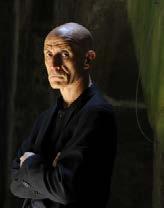
Qual è suo primo ricordo legato alla musica? Bella domanda, perché la mia risposta è molto personale. La prima cosa che ricordo è una canzone di Beniamino Gigli si chiama Ninna nanna della Vita, me la cantavano i miei genitori. La sua era una famiglia di musicisti? No, la mia famiglia - mio padre, mia madre, i miei fratelli - è stata una famiglia di grandi spettatori e ascoltatori di musica con una sana motivazione dettata proprio dalla cultura popolare. Quello che oggi è cultura di elite allora era cultura popolare. Parlando di musica e di ascolto, qual è il suo legame con il festival di Ravello?
Ho avuto tre esperienze bellissime legate a Ravello. Una molti anni fa con gli Avion Travel, poi una stupenda con mio fratello, nel 2010, per l’inaugurazione dell’auditorium che ha segnato il mio ritorno a teatro, e l’anno scorso con i Solist String Quartet con un concerto di canzoni classiche napoletane, la prima volta in cui affrontavo il repertorio napoletano, e sta per diventare un disco.
It all began in the summer of 1953 with ‘Wagnerian Concerts in Klingsor’s garden’ (as the original concert program read) when the Teatro di San Carlo’s Orchestra performed two evening concerts, directed by Hermann Scherchen and William Steinberg. It was then that Ravello, a magical hamlet overlooking the Amalfi Coast became known as ‘the City of Music’. Today, the Ravello Festival is considered one of Italy’s most important international events. It’s an authentic example of avant-garde made-in-Italy excellence that has gained noteworthy acclaim. A case in point is the town’s recentlybuilt auditorium, suitable for hosting events even during the winter season.
The 2012 edition, directed by Stefano Valanzuolo, is currently in full-swing. This two-month calendar (June 23 to September 1) proposes a program of fifty shows featuring top protagonists. Expect the likes of Peppe Servillo, Avion Travel’s singer, who will be performing at Villa Rufolo’s Belvedere on August 9; Adriano Celentano fans will delight in Memorie di Adriano, a show featuring notable jazz musicians like Rita Marcotulli, Javier Girotto, Fabrizio Bosso, Furio Di Castri and Mattia Barbieri. The show received ample acclaim in Milan during a celebration of the Clan’s fiftieth anniversary. Servillo the actor—as we see him in Ravello—has gained acting experience over the last few years, while on stage flanking his brother Tony during song recitals with Mala and Ornella Vanoni (this exclusive project was part of the ‘Mito’ Festival). Servillo also performed on the Silver Screen in a Manetti Bros film. He lives in Rome but left his heart in Caserta where he grew up.

What’s your first memory linked to music? That’s a good question because my answer is very personal. The first thing I remember is a song by Beniamino Gigli called Ninna Nanna della Vita, my parents used to sing it to me.
Do you come from a family of musicians?
No, my family—my father, mother and siblings—they were a great family of music listeners and performance-goers, with healthy motivations that sprang from popular culture. What’s an elite culture today, used to be popular culture.
Speaking of music and listening, what’s your connection to the Ravello Festival?
I’ve had three wonderful experiences linked to Ravello. One of them happened many years ago with Avion Travel. Then, I had an incredible time with my brother in 2010 during the auditorium’s inauguration that marked my return to the theater. And last year, I performed a concert with the Soloist String Quartet, performing
88 Capri | The Divine Coast
music interview
He debuted in 1980 with Avion Travel, as its singer and front-man
(ph. Roberto Villeumier)
Un casertano che affronta la canzone tradizionale napoletana, come lo fa?
Il fatto è che viene più ad artisti non napoletani di cimentarsi con la tradizione perché noi di provincia abbiamo sempre un certo timore reverenziale ad affrontare i classici. Ma a cinquant’anni era arrivato il momento di fare i conti con il paesaggio musicale che mi appartiene e l’ho fatto in compagnia di grandi artisti come i Solis. Penso sia uscita una bella cosa, ripescando anche brani poco noti, con grande rispetto della poesia e della napoletanità.
Ma che cos’è questa napoletanità?
Per me è una capacità di resistenza a tutto ciò che di cattivo porta la modernità quando è malamente intesa. Ed è una risorsa perché la si va a cercare proprio nel momento in cui si deve difendere la propria identità. Io trovo che a Napoli ci sia una cultura che resiste a volte anche in modo molto sano alla modernità, altre volte invece la affronta coniugandola e rileggendola in una chiave eccezionale. Questo secondo me è ciò che fa di Napoli una capitale.
Progetti per il prossimo anno?
Lavorerò con mio fratello a teatro. Debuttiamo in primavera con le Voci di dentro di Eduardo De Filippo. Un suggerimento per una Costiera experience firmata Peppe Servillo?
Beh, Furore, l’insenatura dove abitarono per qualche tempo Rossellini e la Magnani.
classic Neapolitan songs. It was the first time I’d ever done a Neapolitan repertoire and it’s about to become an album.
A Caserta-native braving traditional Neapolitan songs—how do you do it?

The fact is that its more common for non-Neapolitan artists to try their hand with this tradition because those of us who are from provincial towns always harbor a bit of reverential fear when it comes to performing the classics. Still—at age fifty, the time had come to come to terms with the musical landscape I belong to, and I did it in the company of great artists like Solis. I think that something beautiful came out of it. We even fished out lesser known songs, with great respect for poetry and the Neapolitan identity. What exactly is the ‘Neapolitan identity’?
For me, it’s the ability to resist all the bad things that modernity can generate when misunderstood. It’s a resource, because it’s something that’s sought out at a time when you need to defend your own identity. I find that Naples is a culture that sometimes resists modernity in a very healthy way. Other times, it faces modernity by combining with it and re-interpreting it from an excellent standpoint. In my opinion, that’s what makes Naples a true capital.
What are your plans for the upcoming year?
I’ll be working with my brother in theater. We debut in spring with Eduardo De Filippo’s Le voci di dentro. A suggestion on how to best experience the Coast, signed by Peppe Servillo?
Well, there’s Furore, the cove where Rossellini and Magnanani stayed for a while.
Capri | The Divine Coast 89
Autodidatta debutta nel 1980 con gli Avion Travel, di cui è cantante e front-man
Villa Rufolo’s Belvedere , main set of the Ravello Festival (ph. Roberto Villeumier)
divine style
Stile Capri
THE CAPRI STYLE
Eleganza, sobrietà, eccentricità nell’epoca aurea dell’isola tra pluralità e genius loci Elegance, simplicity, eccentricity in the golden age of the island amid plurality and genius loci
Esce per i tipi della Casa editrice la Conchiglia, il volume CAPRI Frammenti di uno stile, un ricco regesto fotografico che, scandito da un itinerario di figure nodali, di attitudes e stars cinematografiche e del fashion, di aristocratici, socialites e personaggi pittoreschi della mitografia locale, attraversa l’intera cifra stilistica generata da e per l’isola, lungo i diversi decenni del Novecento, spingendosi fino alla fine del secolo precedente. “Frammenti appunto- scrivono nella bella prefazione i curatori della pubblicazione, Riccardo Esposito e Ausilia Veneruso, i Diòscuri de La Conchiglia- come tessere di un puzzle scomposto; si prova ad unire parti diseguali cercando raccordi, legami, assonanze; si procede per tentativi e sbagli. Non è dato per ora conoscere il risultato, possiamo però essere sicuri che la composizione finale, se ricomposta, potrà trasmetterci un perduto equilibrio e, soprattutto, regalarci una chiave per interpretare un carattere peculiare dell’Isola; un carattere, una cifra nascosta, che vogliamo chiamare, per convenzione e azzardo, “Stile Capri”. Non è facile riannodare le fila molteplici e metamorfiche di questa tematica, insieme chiarissima, lampante e controversa. Si tratta di certo di un dialogo-confronto antitetico e complesso, dei tasselli di una trama al contempo osmotica e deflagrata, tra una pulsione alla basica astrazione mediterranea che rimedita radici e vestimentali d’imprinting ancestrale e l’apporto fondamentale e oltremodo peculiare dei tanti eccentrici, soprattutto internazionali, dei dandies sia al maschile che al femminile, delle avanguardie artistiche e culturali che, fin dalla seconda metà del XIX secolo, scelsero gli scogli capresi quali Parnaso d’appartenenza. Lo stile caprese va identificato e colto leggendo un mosaico, un caleidoscopio di immagini le più diverse e contrastanti tra loro. Eleganza, sobrietà, eccentricità, una terna di concetti che si dichiarano in valore assoluto già ai primi del XX secolo, quando l’Isola inizia ad attrarre un’umanità speciale e multiforme, dove si muovono intellettuali e artisti, doviziosi banchieri e industriali, aristo-
The book CAPRI Frammenti di uno stile, published by La Conchiglia, is a rich photographic showcase of the important figures, movie stars, great names of fashion design, aristocrats, socialites and local picturesque myths that left their indelible mark on the so-called Capri style in the late 1800s and throughout the 1900s. “They are fragments- as written in the lovely introduction by curators Riccardo Esposito and Ausilia Veneruso, the Dioscuri of La Conchiglia publications-, pieces of an undone puzzle; we strive to put different parts together and create links, bonds, assonances; we proceed by trial and error. We are unaware of the result so far, but we are certain that once the puzzle has been completed, it will restore the lost equilibrium and provide us with the key to the interpretation of the island’s special character; a character, a hidden characteristic that we wish to call, by convention and chance, the “Capri Style”.

It is far from easy to tie together the many and metamorphic strands of this theme, so very clear and yet controversial. They are the different stages and elements of a plot, parts of an antithetical and complex dialogue between Mediterranean origins and roots and the fundamental and extremely peculiar contribution of the many eccentric people, especially of foreign origin, of both male and female dandies, of the members of the art and cultural avant-garde movements who, since the mid-1800s, fixed their home on the island.
The Capri style is a sort of mosaic, a kaleidoscope of different and conflicting images. Elegance, simplicity, eccentricity are the key words describing Capri since the early 1900s, when it began to attract a special and varied humanity, intellectuals and artists, wealthy bankers and industrialists, sophisticated and provocative aristocrats, in addition to a bunch of exiles and flâneurs, all members of a variegated, affluent and fabulous melting pot. Capri and only Capri is the common denominator to all these personalized contri-
90 Capri | The Divine Coast
text Cesera Cunaccia photo courtesy Edizioni La Conchiglia
1. The actor Jane Russel, 1960 2. Elsa Martinelli, Christian De Sica and Odile Rubinosa 3.The fisherman Francesco Spadaro 1910


Maria Callas 1960


Galeazzo Ciano 1930 6. Claretta and Edwin Cerio, 1948 (ph. Gettyimmage) to the left, the cover of the book “Capri Frammenti di uno stile” published by La Conchiglia
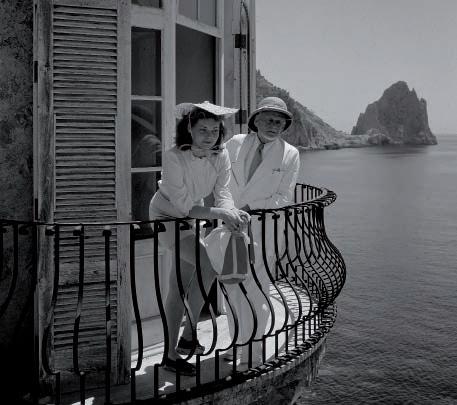

3 1 4 2 5 6
4.
5.
cratici sofisticati e provocatori, accanto a una faglia di esuli e flâneur, in un variegato, opulento e favoloso melting pot. E’ Capri e solo Capri il comune denominatore di tutti questi apporti squisitamente personalizzati, di queste autentiche “dimensioni mentali” da indossare, di questa appassionante semantica della rappresentazione di se stessi. Gli happy few dell’epoca d’oro entravano in una caratura di profonda empatia con l’Isola. Allo stesso modo, l’Isola si lascerà contaminare e trasformare da queste influenze di cultura, costume, di tic, fashion e manie, rigenerandosi a sua volta. E’ questo l’humus dove nei primi due decenni novecenteschi germoglia la composita complessione del cosiddetto “Stile Capri”, costantemente arricchito da ulteriori quote di stravaganza e di follia insulare. Ossia l’epoca aurea e leggendaria di una proto-dark lady come la marchesa Luisa Casati, del sulfureo e decadente Alex de Fersen, delle sperimentazioni sull’abito da parte dei Futuristi, dell’iconico pescatore Francesco Spadaro, dell’immacolato nordico chic della regina Vittoria di Svezia e di Axel Munthe. Poi, ecco gli anni Trenta e Quaranta stilizzati e sospesi dell’Arcitaliano Curzio Malaparte, testa imbrillantinata e lini abbaglianti. Ecco il vero neutotico glamour della coppia Edda Mussolini e Galeazzo Ciano, la fluttuante fragilità di Mafalda d’Assia, Chantecler, l’araldico profilo di Anna Grazioli di Sirignano, il dandismo dei giovani patrizi partenopei, la bellezza di Palma Bucarelli à la garçonne, l’allure rigorosa di Edwin Cerio e la solarità della giovanissima Claretta Wiedermann. Sul finire dei forties si affacciano alla scena gli stravaganti ragazzi aristo-blasé presi in giro da Totò, righe matelot, espadrillas, pappagallo in spalla, capitanati da Dado Ruspoli e Pupetto di Sirignano. Tra i Cinquanta e i ’70, Capri diviene una specie di piattaforma di comunicazione worldwide, l’oggetto del desiderio e il sogno collettivo di milioni di persone. I suoi item diventano punti di riferimento, indizi per accedere immediatamente ai suoi codici e al mito. Capri pants per Audrey Hepburn in Sabrina e per la mitica Jackie O’, una vera habituée anche fuori stagione, che non poco contribuirà a lanciare nel mondo pure il classico leggero sandalo caprese, reso prezioso e ornato di pietre e applicazioni . Quindi il talento di Emilio Pucci, che apre la prima boutique alla Canzone del Mare, complice l’amica Gracie Fields, nel1947. La divina Callas osa un pantalone nero in via Camerelle, dove nel 1955 compare una Greta Garbo dalla mirabile eleganza estiva décontractée. I ‘60 significano Irene Galitzine, Fabrizia Borghese, Brigitte Bardot, imbronciata e sublime, che cammina scalza ovunque, come fosse nella sua Saint Tropez. Tutta un’esperienza di singoli e gruppi non omologabile, un mosaico di frammenti, appunto, che confluisce in un solo grande e avvincente corpus immaginario e narrativo, che va a nutrire quell’unicum inimitabile ed eterno che è e sarà sempre l’Isola delle Sirene.
butions, to these genuine “mental dimensions” to be worn, of the fascinating semantics of self-representation. The Happy Few of this golden age experienced a state of deep empathy with the island. At the same time, the island was contaminated and deeply affected by these cultural and social influences, by these whims, little manias and trends, being regenerated in turn. This is the fertile ground on which, during the first two decades of the 1900s, the composite Capri Style germinated and flourished, constantly enriched by new additions of eccentricity and madness. That was the golden and legendary age of proto-dark lady Marchesa Luisa Casati, of the sulphurous and decadent Alex de Fersen, of the Futurists’ experimentation with clothing, of the iconic fisherman Francesco Spadaro, of the immaculate, North-European chic style of Queen Victoria of Sweden and Axel Munthe. Then came the thirties and forties of the 100% Italian Curzio Malaparte, all brilliantined hair and blinding white linens. Here comes the neurotically glamorous couple Edda Mussolini and Galeazzo Ciano, the fluctuating fragility of Mafalda d’Assia, Chantecler, the noble profile of Anna Grazioli di Sirignano, the dandyism of young, Neapolitan aristocrats, the boyish beauty of Palma Bucarelli, th e poise of Edwin Cerio and the radiance of the very young Claretta Wiedermann. In the late forties, the eccentric, sophisticated and nonchalant boys Totò made a parody of appeared on the scene: matelot stripes, espadrillas, a parrot on the shoulder, with Dado Ruspoli and Pupetto di Sirignano at the head of the party. Between the fifties and seventies, Capri became a sort of international communication platform, an object of desire, the collective dream of millions of people. Its signature items become a benchmark in the fashion field, a key to its codes and myth. Capri pants for Audrey Hepburn in Sabrina and for the legendary Jackie O’, a true out-of-season habitué, who will introduce the world to the typical Caprese sandal, covered with stones and appliqués. Then came the genius of Emilio Pucci, who opened his first boutique at the Canzone del Mare, with the help of friend Gracie Fields, in 1947. The divine Callas dared to wear black pants in Via Camerelle where, in 1955, the elegantly casual Greta Garbo made her appearance. The sixties are associated with Irene Galitzine, Fabrizia Borghese, Brigitte Bardot, pouting and sublime, barefoot wherever she went, just like in Saint Tropez.
The non-standardized experience of single individuals and groups, the fragments of a mosaic brought together in an imaginary and narrative corpus, which nourishes that incomparable and eternal unique specimen that is and will always be the Island of the Sirens.
92 Capri | The Divine Coast
divine style
Autentiche “dimensioni mentali” da indossare Genuine “mental dimensions” to be worn
Above: the Princess of Sirignano, Anna Grazioli.
On the left: Marchese Emilio Pucci facing his boutique in Capri 1952.


On the right: Brigitte Bardot in via V. Emanuele 1963

Creatività tutta italiana
CREATIVITY THAT’S COMPLETELY ITALIAN
La storia di Stefano Ricci, imprenditore e designer appassionato di una moda che esprime l’uomo in ogni suo aspetto The story of Stefano Ricci. An entrepreneur and designer who’s passionate about fashion that expresses man’s multi-faceted nature
Una grande emozione che ha sedotto gli oltre 600 invitati, in una cornice unica al mondo come il corridoio di ponente della Galleria degli Uffizi. Mai prima del 18 giugno scorso il museo più importante d’Italia aveva aperto le proprie porte a una sfilata. E quando i guerrieri Masai hanno intonato il loro inno, accompagnando il ringraziamento di Stefano Ricci agli ospiti provenienti da tutto il mondo, il gotha della moda internazionale ha tributato al designer fiorentino il massimo riconoscimento: il conferimento del Premio Pitti Immagine, la cui consegna è avvenuta l’indomani, alla Fortezza da Basso di Firenze, assieme al riconoscimento alla carriera per Burt Tansky, per decenni a capo dell'impero Neiman Marcus.

Da poche settimane Stefano Ricci è stato nominato alla presidenza del Centro di Firenze per la Moda Italiana, il vertice di quanto esprime la città dov’è nato il concetto stesso di made in Italy. Il tutto a coronamento del 40° anniversario di fondazione della società fiorentina. Un punto di partenza verso nuove aperture (entro la fine del 2012 saranno inaugurate otto boutique, altrettante nell'anno successivo), ma anche un momento di riflessione sul valore dell’italianità e del saper fare delle sue maestranze che è in netta controtendenza rispetto
a un contesto europeo che segna il passo.
Quaranta anni sono un bel traguardo volante per una società di moda, nata e sviluppata a Firenze ma con una forte vocazione internazionale.
Ho avuto la fortuna di nascere in una famiglia fiorentina e di vivere appieno la realtà di questa città. Firenze è un patrimonio dell’umanità. Ho amici che vivono lontano geograficamente parlando. E loro vedono Firenze non come Roma, Parigi o Londra che sono capitali, non come New York o Shanghai, ma come una realtà che è un concentrato di creatività e qualità della vita.
Tutto rigorosamente “fatto in Italia”.
Assolutamente. Prima di tutto per il nostro senso innato del gusto. Pariteticamente per l’abilità delle nostre maestranze e per assicurare un futuro anche occupazionale al vero made in Italy. Certo, in 40 anni di lavoro ne ho viste di tutti i colori.
Non ripercorriamo la storia della Stefano Ricci (entro la fine dell’anno uscirà un volume edito da Swan group)... ma se dovesse sintetizzare i cambiamenti più evidenti, da dove partirebbe?
Sono cambiate le regole della distribuzione. Milano ha certamente esaltato la Donna, ma ha ucciso la creatività maschi-
Great excitement won over 600 guests, thanks to the allure of a setting as unique as the West wing of the Uffizi Gallery. On June 18, for the first time ever, Italy’s most important museum opened its doors to welcome a fashion show. And when the Masai warriors started playing their anthem to accompany the thank-you speech Stefano Ricci shared with guests from all over the world, the elite circles of the international fashion scene paid tribute to the Florentine designer by awarding him the highest honor: the Pitti Immagine Prize. It was given to him the following day at Florence’s Fortezza da Basso, together with a ‘Career Award’ for Burt Tansky, who has headed the Neiman Marcus empire for decades.
A few weeks ago, Stefano Ricci was nominated President of the Florence Center for Italian Fashion, a top honor in the city where the Made-in-Italy concept was first created. All this was the crowning achievement flanking his Florentine company’s 40th anniversary. It’s a point of departure that will lead to new openings (eight new boutiques will be inaugurated by the end of 2012, followed by eight more the next year). Yet, it is also a moment of reflection about the value of the Italian identity and the knowhow of Italy’s worker—both of these aspects represent a clear countertrend compared to the European context which currently sets the pace.
Forty years is a high-flying achievement for a fashion company with a strong international vocation, that was founded and developed in Florence.
I was lucky to be born into a Florentine family and to have the chance to fully experience this city’s reality. Florence is a world heritage site. I have friends who live far away, geographically speaking. They don’t see Florence the same way they perceive Rome, Paris and London—as a capital. They don’t see it like they do New York or Shanghai. They consider it a realty that’s the essence of creativity and the quality of life.
Everything is strictly ‘Made in Italy’.
Absolutely. First and foremost, because of our innate flair for taste. And by the same token, because of the skill of our workers.
Then, there’s the aim of ensuring a future for authentic Madein-Italy industry, even in terms of employment. Undoubtedly, after forty years in the business, I’ve seen it all.
We won’t retrace the history of Stefano Ricci (by the end of the year, a new volume by the Swan group is scheduled for release). But if you were to sum up the most evident changes, where would you begin?
The rules of distribution have changed. Milan has certainly glorified Woman, yet it has killed male creativity. Pilot stores have played the role of pace-setters,
94 Capri | The Divine Coast
interview fashion
text Gianluca Tenti
An intense portrait of the entrepreneur Stefano Ricci, nominated president of the Florence Center for Italian Fashion

|
Coast 95
Capri
The Divine
le. I negozi pilota che facevano da apripista hanno imposto il blazer blu, il pantalone grigio, la scarpa color cacchetta, la bici nera... Non è certo questo lo stile delle mie collezioni. Anzi, lo considero un errore. Perché l’uomo è vanitoso, più della donna.

Quindi?
Questa intervista è realizzata per una rivista che si chiama Capri, simbolo di eleganza nella vacanza, di stile e di storia, dall’imperatore Tiberio fino a Curzio Malaparte, da Lenin che qui giocava a scacchi in periodi duri alla spensieratezza di Totò. Ecco, direi che Capri rappresenta un’isola elegante e sartoriale a suo modo. Con i suoi colori, le sue
salvata dai nuovi ricchi. Anche se i vecchi ricchi (sorride, ndr) li devo ancora vedere... Certo il mercato oggi è segnato dalle scelte delle Repubbliche russe e dalla Cina, dove sono arrivato 20 anni fa, e c’era molta curiosità sul made in Italy. Ricordo invece una riunione a Palazzo Vecchio, con un primo ministro italiano che ci proponeva di partecipare alla promozione delle nostre produzioni in Cina. Gli risposi: “Ha ragione, la Cina è in espansione, ma io sono già presente lì a vendere, non a produrre in maniera subdola e truffaldina”.
Difesa del made in Italy, valorizzazione della fiorentinità. Chi glielo ha fatto fare?
imposing the blue blazer, gray slacks, turd-colored shoes and black bicycles… That is certainly not my collections’ style. On the contrary, I consider all of that a mistake. Because man is more vain than woman. So?

This interview is for a magazine called Capri, a symbol of elegance when it comes to vacation spots. It’s been a symbol of style and history from as far back as Emperor Tiberius, and gone on to include Curzio Malaparte and Lenin, who played chess there in hard times. Not to mention Totò’s light-heartedness. So, I would say that Capri represents an island that’s elegant and sartorial in its own way. With its colors, its unique facets and its
tainly, today’s market is marked by the choices of the Russian republics and China, where I arrived 20 years ago; there was a lot of curiosity surrounding Madein-Italy products. On the other hand, I remember a meeting at Palazzo Vecchio with the Italian prime minister who suggested that we participate in a project promoting our products in China. I answered, ‘You are right, China is expanding, but I’m already part of the scene there, and I’m there to sell, not to produce in a way that’s underhanded and fraudulent”.


Defending Made-in-Italy products and enhancing the value of the Florentine identity. What’s the driving force behind your decision to do this?
peculiarità, le sue pertinenze. Sono il primo a dare credito all’eleganza napoletana che certo ha influenzato e continua a influenzare quella bella piazzetta che ha visto nascere molti amori. Ma credo che la vera unicità del luogo, parlando di moda, rimanga la spalla tipica, l’attaccatura finto trasandata, l’abito di lino. Quando la sartoria napoletana si è messa a inseguire l’identità milanese, dettata dai comunicatori...
C’è chi considera le sue collezioni votate solo al mercato dei nuovi ricchi. Cosa risponde?
Sfido chiunque a dire che l’industria maschile non è stata
Il rispetto per quello che Firenze può esprimere. Non solo parlo per la mia azienda. Ma anche per le altre eccellenze, nel vino, nel cibo, nella manifattura, in un certo tipo d’industria e di ospitalità. Spetta a noi saper tutelare le specificità del territorio e salvaguardarne il futuro. Quando abbiamo scelto di interessarci all’Antico Setificio Fiorentino, lo abbiamo fatto come tributo alla storia dei telai così amati dal marchese Emilio Pucci. Non è stato un investimento, ma un atto d’amore per un laboratorio di grande tradizione e qualità, in un quartiere dove i telai scandiscono il tempo nello stesso modo da oltre 200 anni.
assets. I’m the first to give credit to Neapolitan elegance as it certainly continues to influence that lovely piazzetta which witnessed the birth of many love stories. Yet, I believe in the place’s true uniqueness, in terms of fashion. May the typical shoulder line continue as a trend, along with the faux disheveled look and the linen suit. When Neapolitan tailoring started to follow the Milanese identity dictated by media communicators …. Some say that your collections only target the new rich. What’s your take on that?
I dare anyone to say that the men’s industry was not saved by the new rich. Even if I still have to see the old rich (he smiles)… Cer-
A respect for what Florence can express. I’m not just talking about my company, but about other forms of excellence, like wine, food, craftsmanship and certain types of industry and hospitality. It’s up to us to know how to safeguard the territory’s qualities and protect the future. When we decided to become interested in the Antico Setificio Fiorentino, we did it as a tribute to the history of those looms that were so well-loved by Marquis Emilio Pucci. It was not an investment—it was an act of love for a workshop with incredible tradition and quality, in a district where looms still mark the passage of time, just like they have for over 200 years.
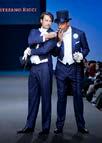
interview fashion 96 Capri | The Divine Coast
Fashion shows in Moscow and the first fashion show ever held at Florence’s Uffizi Gallery

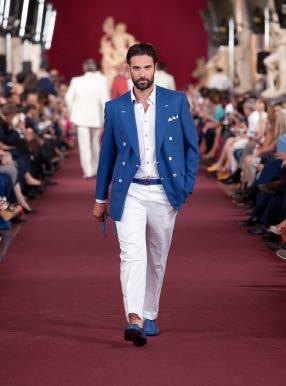
 A fashion show featuring Stefano Ricci’s models in the Uffizi Gallery’s West Wing
A fashion show featuring Stefano Ricci’s models in the Uffizi Gallery’s West Wing
97
Capri | The Divine Coast

98 Capri | The
Coast
Divine
L’Eden griffato
A DESIGNER EDEN
text Cesare Maria Cunaccia
Villa Chanel, la boutique effimera dell’estate caprese. Un’esperienza privata e avvolgente Villa Chanel, an ephemeral boutique. Private, intimate experience
Ha aperto a giugno, con un elegante cocktail dinner candlelight cui ha partecipato un gruppo di personalità capresi, di ospiti internazionali e alcuni prestigiosi habituées dell’isola delle Sirene, la Boutique effimera Chanel di Capri. Uno spazio elegante e onirico, nel segno rivisitato, suggestivo e lieve di un oriente fiabesco. Uno scrigno rivestito di specchi antichi dalle vibranti patine acquee e argentee, come accadeva negli antichi palazzi dei maharaja indiani e nei sofisticati boudoirs settecenteschi d’Europa. Nelle vetrine, vicino agli abiti, alle borse, ai gioielli, ecco le ultime creazioni di orologeria signées Chanel, les montres J12 e Première, come oggetti d’affezione e del desiderio, rarità da Wunderkammer, ex-voto emotivi protetti da campane di vetro poste su stele di pietra levigata dal tempo. Oltre al flagshipstore che il leggendario marchio di moda francese si è regalato per quest’estate 2012 al 14/b della celebre via Camerelle, l’arteria pulsante dello shopping locale, a soli due passi dall’Hotel Quisisana, l’approdo di Chanel sui Faraglioni ha significato anche una nuova esperienza, di forma più privata, meditata e avvolgente. Si tratta di Villa Chanel, che si cela nel verde e nelle macchie di colori fauve di un opulento edenico giardino mediterraneo, in una strada ombrosa e in declivio che incrocia via Camerelle in direzione della Certosa.
Villa Chanel è nata in una classica dimora caprese, muri candidi e volumi semplici e geometrici, archi e pergolati, miscelando il genius loci e il gusto “Cerio”, all’inconfondibile imprinting stilistico dell’immaginario della Maison. Altissime slanciate palme, grafiche chicas, fragranze lievi e penetranti di limoni e di aranci, cascate di gelsomini e cortine di bougainvillea lussureggiante, fontane chiocciolanti cosparse di corolle policrome, una casa che di certo la mitica Coco, appassionata della solarità mediterranea e strenua antesignana dell’abbronzatura a Deauville, al Lido di Venezia e sulla Côte, avrebbe non poco apprezzato.
Gli interni, ritmati dal tipico e arioso gioco di volte armoniche dell’architettura autoctona, si animano alle pareti di una tavo-
The Chanel Boutique in Capri opened in June, with an elegant candlelit dinner attended by a group of local personalities, international guests and prestigious habitués. An elegant and dream-like space, in an Oriental fairytale style atmosphere. A treasure box covered with old mirrors bearing the aqueous and silvery patina of time, like in the ancient residences of Indian maharajas and sophisticated eighteenth-century European boudoirs. In the windows, next to the dresses, jewelry and bags, the latest watches by Chanel, Les Montres J12 and Première, objects of desire, Wunderkammer rarities, votive offerings protected by bell glasses placed on stone polished by time. In addition to the flagship store that the legendary French fashion brand opened in summer 2012 in the famous Via Camerelle, the island’s main shopping street, one step away from the Quisisana Hotel, Chanel’s arrival in Capri coincided with a more private, pondered and intimate experience. We are talking about Villa Chanel, hidden behind the lush vegetation of a Mediterraneanstyle garden, on a shadowy and sloping street that crosses Via Camerelle in the direction of the Certosa. Villa Chanel is housed in a typical Caprese building, with snowwhite walls, simple and geometric volumes, vaults and pergolas, a blend of the genius loci, Cerio style and the French fashion maison’s signature style. High palm trees, delicate and penetrating aromas of lemon and orange trees, cascades of jasmines and curtains of luxuriant bougainvillea, fountains covered with polychrome corollas, a house that the great Coco, fond of Mediterranean radiance and sunbathing in Deauville, Lido di Venezia and on the Côte d’Azur, would have certainly enjoyed. The interiors, featuring the typical vaulting of the local architectural style, are painted in a palette of colors recalling the chromatic themes of the Paris-Bombay collection.
Capri | The Divine Coast 99
divine shop
lozza che corrisponde ai temi cromatici della collezione ParisBombay.


Una palette di zaffiro di Ceylon e blu oltremare, di turchese e acquamarina, di lapislazzuli e celeste. Poi, ai piedi di una morbida scala in ferro battuto, si innesta il canone chiaroscurale e speziato del rosa indiano e provenzale, che incornicia gli accessori e il prêt-à-porter della proposta Chanel per la primavera –estate 2012. Grossi bauli gessati e laccati, appena dischiusi, rivelano d’un tratto le seduzioni di un guardaroba irresistibile. Giacche da maharaja reinventate o realizzate in tweed - un autentico leitmotiv Chanel, rubato al tayloring maschile e frequentato fin dai primordi creativi dei roaring ’20 - robes preziosamente ricamate, bagliori d’argento siderale e d’oro vecchio, borse con manicigioiello o con piccoli specchi applicati quali convettori di luci, sortilegi e riflessi. Ancora il tweed, il velluto o il raso, sottratti alle mani sapienti delle premières d’atelier, vestono divani e sedute vintage, si accostano al segno essenziale di Arne Jacobsen, al rattan e agli acciai specchiati del design ’60 e ’70. Quindi ecco l’inserto bohémien dei tappeti sovrapposti, che coprono i pavimenti fino alla terrazza, accentuando il senso di continuità tra interno ed esterno. Citazioni da dolce vita della favolosa Capri dei ’50 e ’60, quella di Gracie Fields, di Dado Ruspoli e di Pupetto Sirignano, di Rita Hayworth e della Hollywood sul Tevere, per arrivare fino all’iconica apparizione di Jacqueline Kennedy Onassis, si intrecciano a quotation squisitamente made in Chanel, a memorie soffuse, dagli anni ’30 fino ai primi Cinquanta, della Villa in Costa Azzurra di Mademoiselle Coco, La Pausa, sulle alture di Cap Martin. Non mancano un padiglione dedicato ai profumi millesimati di chez Chanel, toilettes dorate sotto fitte chiome arboree, teli da spiaggia black & white dove campeggiano le due simboliche C della Maison, fauteuils e poltroncine in vimini per godersi il fresco, cuscini in tweed o in lamé devoré carta da zucchero, cosparso di tracce auree e svelte grafie nere.
Infine la meraviglia dei sontuosi gioielli della collezione ParisBombay, ornamenti per la fronte di spirito moghul, anelli, bracciali da bajadera, collane-plastron, monili per i piedi scintillanti di pietre, ornamenti da vere, sublimi e irraggiungibili maharani.
A palette ranging from Ceylon sapphire to ultramarine blue, turquoise and aquamarine, lapis-lazuli and light blue. At the foot of a light wrought-iron staircase are the light and shade effects and Indian and Provencal pinks that beautifully frame Chanel’s spring-summer 2012 accessories and prêt-à-porter collection. Large chalkwhite and lacquered trunks, barely opened to reveal the charm of an irresistible wardrobe. Contemporary or tweed Maharaja-style jackets- Chanel’s leitmotiv, stolen from men’s tailoring and coming straight from the roaring twenties, robes with precious embroideries, the glow of sidereal silver and gold, handbags with jewel-handles or with small mirrors reflecting lights and magic spells. More tweed, velvet and satin, coming from the skillful hands of dressmakers, used as upholstery on sofas and vintage armchairs, evocative of Arne Jacobsen’s essential style, of the rattan and bright steel of the design from the sixties and seventies. The Bohemian touch of overlapping carpets, covering the whole length of the floors up to the terrace, harmoniously connecting the interior and exterior. Memories of the dolce vita in the fabulous Capri of the fifties and sixties, that of Gracie Fields, Dado Ruspoli , Pupetto Sirignano, Rita Hayworth and Cinecittà, up to the myth of Jacqueline Kennedy Onassis, are closely intertwined with exquisite, made-in-Chanel quotations and soft memories from the thirties to the fifties of Mademoiselle Coco’s villa on the Côte d’Azur, named La Pausa, in the hills of Cap Martin. A pavilion is devoted to Chanel perfumes, decorated with golden dressing tables under thick foliage, black & white beach towels sporting the Maison’s signature Cs, wicker chairs to enjoy the cool breeze, tweed or lamé devorè dark blue cushions, dotted with golden marks and black writing. Last but not least, the wonderful and sumptuous jewelry from the ParisBombay collection, Moghul-style forehead ornaments, rings, oriental dancer bracelets, plastron necklaces, foot jewelry glittering with precious stones and ornaments worth of a sublime and unreachable Maharani.

divine shop 100 Capri | The Divine Coast
Villa Chanel, an ephemeral boutique amidst bougainvillea, fountains and windows featuring the latest clothes, bags and watches

 Capri | The Divine Coast 101
Villa Chanel was created within a typical Capri-style dwelling, in a street going from via Camerelle toward Certosa
Capri | The Divine Coast 101
Villa Chanel was created within a typical Capri-style dwelling, in a street going from via Camerelle toward Certosa
Glam Choise
Sovrapposizioni. Con lunghezze differenti. Meglio se in nero Overlapping. Withdifferentlengths. Better if in black
 Marta Innocenti Ciulli photo Andrea Varani make up and hair Paolo Baroncelli
Marta Innocenti Ciulli photo Andrea Varani make up and hair Paolo Baroncelli
CHRISTIAN DIOR
Pencil-skirt in pelle e cappotto 7/8 di tweed Leather pencil skirt and 7/8 length tweed coat Scarpe/shoes: Tod’s Pull e cintura/pull and belt: Christian Dior (previous page)
MIU MIU
Pantaloni e casacca di memoria Seventy. Convivono con pelliccia mood Quaranta Pants and seventies-style shirt. Paired with back-tothe-forties fur Borsa/bag: Prada
Scarpe/shoes: Miu Miu

Coast 103
Capri
| The Divine
BOTTEGA VENETA
Gonna profilata di pelle come il chiodo con zip. Sopra un cappottino smilzo con maniche al gomito
Leather trimmed skirt and zip-up jacket. Little coat with elbow-length sleeves Scarpe/shoes: Bottega Veneta
 104 Capri | The Divine Coast
104 Capri | The Divine Coast
CHANEL
Pantaloni ampi abbinati all’abito con apertura asimmetrica. Giacca con tasche e orli di lamé Loose-fitting pants and dress with asymmetrical opening. Jacket with pockets and lamé trimming Scarpe/shoes: Moschino Pull: Chanel

Coast 105
Capri
| The Divine
Giacca con inserto di tweed e lamé, top di velluto devoré stampato a rose. Jacket with tweed and lamé inlay, rose-patterned devoré velvet top Pantagonna/Divided skirt: Naska at Luisaviaroma
Scarpe/shoes: Céline at Luisaviaroma
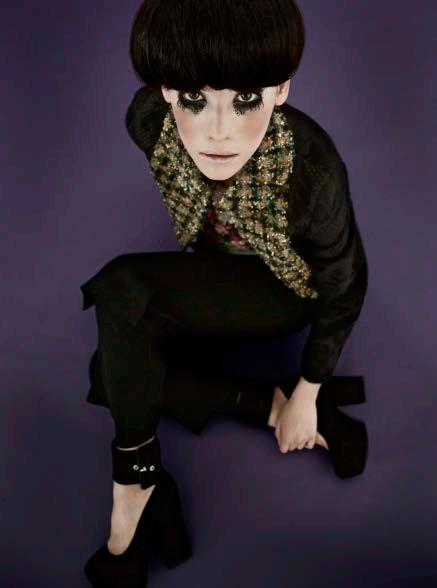 106 Capri | The Divine Coast
ANTONIO MARRAS
106 Capri | The Divine Coast
ANTONIO MARRAS
ERMANNO SCERVINO
Abito con gonna a pieghe e cappotto con piccolo collo, orli ricamati e piume
Dress with pleated skirt and coat with small collar, embroidered hems and feathers
Pants: Chanel Scarpe/shoes: Céline at Luisaviaroma

| The
Coast 107
Capri
Divine
MOSCHINO Sopra i leggings un abito vita bassa e una redingote doppiopetto A low-waisted dress and double-breasted redingote over the leggings
Scarpe/shoes: Moschino
 108 Capri | The Divine Coast
108 Capri | The Divine Coast
KRISTINA T
Micro gonna con zip, camicia di voile e coat di tweed con maniche al gomito Mini-skirt with zip fastening, voile blouse and tweed coat with elbow-length sleeves Scarpe/shoes: Tod’s
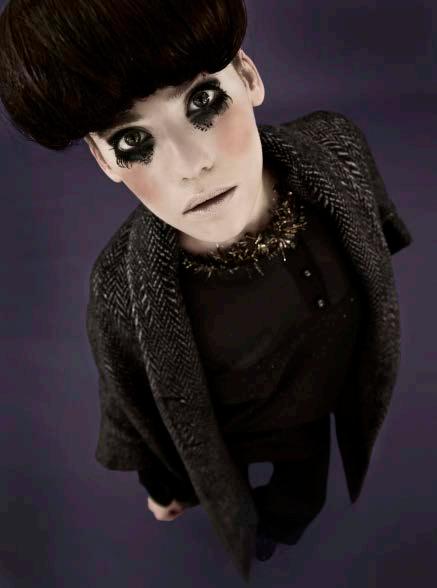
Coast 109
Capri
| The Divine
MARNI

Sopra i pantaloni un gilet lungo e una stola con pelliccia e tasche Long vest over the pants and fur stole with pockets Cintura e scarpe
Belt and shoes: Marni
110 Capri | The Divine Coast
PRADA Pantaloni con orli preziosi, camicia con collo rigido, gonna longuette, abito vita alta e gilet con applicazioni sul dietro
Pants with precious trimming, stiff-collared shirt, three-quarter length skirt, high-waisted dress and vest with appliqués on the back
Scarpe/shoes: Prada

| The
Coast 111
Capri
Divine



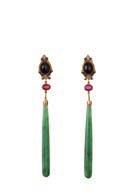

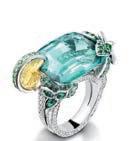
1 4 6 3 5 1. Bulgari 2. Piaget 3. Diego Percossi Papi 4. La Campanina 5. Chantecler 6. Pomellato 7. Faraone Mennella 112 Capri | The Divine Coast
si può
Verde che più verde non
Lo smeraldo. La giada. Comunque una pietra verde che si avvicini al colore dei tuoi occhi. The emerald, the Chakra of the heart. In any case, a green stone that is close to the color of your eyes. 2 AS GREEN AS POSSIBLE by Marta Innocenti Ciulli
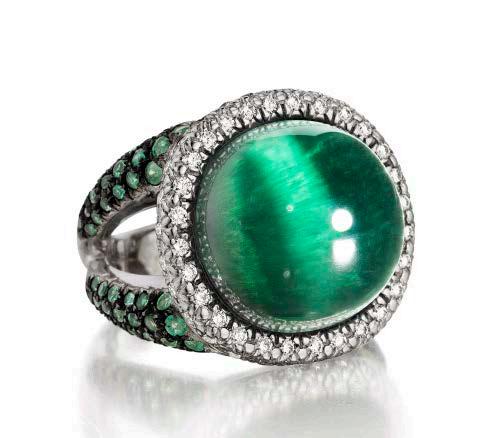 what’s cool
what’s cool
Firenze | Tuscany 113 7
fashion jewels Capri | The Divine Coast
113
Big game


cover story
114 Capri | The Divine Coast
Marta Innocenti Ciulli
Gucci
capri shopping



















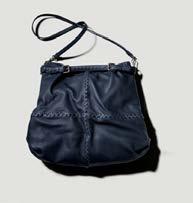

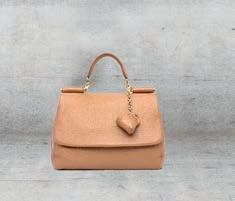





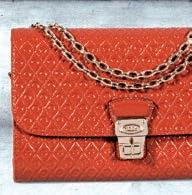




Coast 115
Capri | The Divine
Salvatore Ferragamo Prada
Hermes
Bottega Veneta
Dolce&Gabbana
Bottega Veneta
Dolce&Gabbana
Chanel Tod’s
Tod’s
Salvatore Ferragamo





Bally - www.bally.com

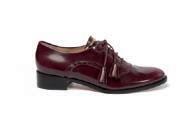
Finalmente le flatties. Per dandy-woman sempre in bilico fra i contrasti The flatties, at last! For the dandy-woman, always keeping her balance between the opposites
Cammina, Cammina

ON AND ON AND ON SHE WENT by Marta Innocenti Ciulli
Ermanno Scervino - € 540 - via D. Morelli, 19/21 - Napoli
Jil Sander - € 370 - at Della Martina - viale Ariosto, 4/b - Capri

Dolce&Gabbana - www.dolceegabbana.it

Max&Co - € 189 - www.maxandco.com

Salvatore Ferragamo - € 350 - via Oratorio, 1 - Capri


Roger Vivier - www.rogervivier.com


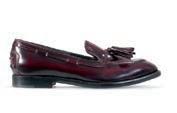

Marni - € 380 - www.marni.com




Tod’s - piazza Umberto I, 8 - Capri
Miu Miu - € 580 - www.miumiu.com
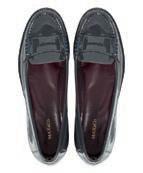
10 8 3 7 11 2 1 5 6 4 9
must have shoes
1
2.
3.
4.
5.
6.
7.
8.
9.
10.
11.
Capri | The Divine Coast 117
Fendi - € 460 - via Camarelle, 8/b - Capri

















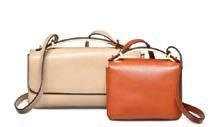

Capri | The
Coast 119 must
7 2 5 8 1 4 6 3 6 E’ la
It
Divine
have bags
borsa sportiva a tracolla con la patta grande tipo postina. Sarà il must dell’inverno
is the sports shoulder bag with postman-style fly-front closing. It is going to be this winter’s must have
by
1.
2.
3.
4.
5.
6.
7.
8.
Postina MESSENGER
Marta Innocenti Ciulli
Diane Von Fustenberg - € 1.018 - www.dvf.com
Fendi - € 950 - via Camarelle, 8/b - Capri
Vionnet - € 1.735 - www.vionnet.com
Bottega Veneta - prezzo su richiesta - www.bottegaveneta.com
Marni - from € 600 - www.marni.com
MiuMiu - prezzo su richiesta - at Della Martina - viale Ariosto, 4/b - Capri
Salvatore Ferragamo - €1.250 - via Oratorio, 1 - Capri
Hermès - € 4.500 - via Camerelle, 43 - Capri





Quadrato perfetto



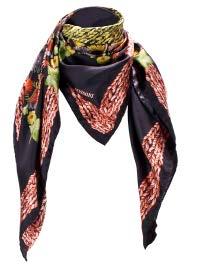


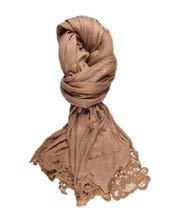

Capri | The Divine Coast 121
PERFECT
by
1. Blugirl - via Camerelle, 71a - Capri 2. Ermanno Scervino - € 540 - via D. Morelli, 19/21 - Napoli 3. Hermès - via Camerelle, 43 - Capri 4. Faliero Sarti - www.falierosarti.com 5. Marina Rinaldi - via Toledo, 119 - Napoli 6. Marella - via Toledo, 198 - Napoli 7. Missoni - via Camerelle, 57 - Capri 8. Salvatore Ferragamo - prezzo su richiesta - via Oratorio, 1 - Capri 7 2 5 8 1 4 6 3 6 L’ultimo
E ce
must have accessories
SQUARE
Marta Innocenti Ciulli
cult della stagione: il foulard.
ne vogliono tanti perché è quel piccolo tocco che ridefinisce il look This season’s latest trend: the scarf. But you need a lot of them: it’s the finishing touch to your look






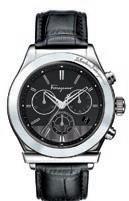


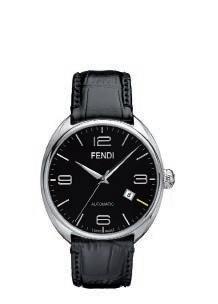
Capri | The Divine Coast 123 must have man 7 2 5 8 4 6 6 I più nuovi sono i modelli easyto-wear che si avvicinano all’orologio sportivo e optano per il black o white. The newest ones are the easy-towear sports-like models in the black and white version Presto che è tardi! SOON IT’S LATE! by Marta Innocenti Ciulli 1. Capri Watch - € 170 - via Camerelle, 21 - Capri 2. Emporio Armani - at Della Martina - viale Ariosto, 4/b - Capri 3. Chanel - € 5.500 - www.chanel.com 4. Fendi - prezzo su richiesta - via Camarelle 8/b - Capri 5. Just Cavalli Time - € 179 - via Vittorio Emanuele, 26 - Capri 6. Capri Watch - € 170 - via Camerelle, 21 - Capri 7. Hermès - € 12.100 - via Camerelle, 43 - Capri 8. Salvatore Ferragamo - prezzo su richiesta - via Oratorio, 1 - Capri
La stoffa dell’eccellenza
ONE WHO EXCELS
text Sabrina Bozzoni
Roberto Meneghesso e i designer outlet McArthur Glen: a scuola di successi Roberto Meneghesso and the Designer Outlet group McAthurGlen: a success story
Uomo distinto, animo gentile. Roberto Meneghesso è il country manager Italia di McArthurGlen Group, società leader in Europa nel settore del designer outlet retailing. Fautori di un’esperienza shopping alternativa, dove la frenesia del grande magazzino cede in passo alla squisita lentezza di piccole cittadelle della moda, dove ogni brand assume la sua indentità personale. Se la forza e la qualità sono nei numeri, i cinque Designer Outlet McArthurGlen in Italia godono di ottima salute. Oltre 726 milioni di euro di fatturato, più di 630 negozi per circa 130mila metri quadrati di superficie retail complessiva. Sono queste le performance di McArthurGlen e delle sue realtà italiane: Veneto Designer Outlet, Serravalle Designer Outlet, Barberino Designer Outlet, Castel Romano Designer Outlet e l’ultimo arrivato La Reggia Designer Outlet. Noi lo abbiamo incontrato. La chiave del successo della formula McArthurGlen? Il mix vincente di abbigliamento di lusso, a prezzi scontati dal 30 al 70% inserita in una calda familiarità delle strutture. Inventori di un concetto primo in Europa, quello di designer outlet retailing. Quale presupposto sta alla base?
Un’esperienza tout court che coinvolge il cliente fin dalla sua entrata. I nostri outlet sono piccole città, dove comodamente ci si lascia trasportare verso uno shopping rilassato, che non ha fretta. A completare l’offerta una ricca programmazione di eventi off, spettacoli musicali e culturali per rendere ancor più forte il legame col cliente.
Un luogo del cuore che la lega a Napoli?
Il fascino di Pompei e la sua meravigliosa storia In materia di stile, una donna è elegante se?
Indossa una bella scarpa col tacco.
Un prossimo progetto da svelarci?
Attualmente McArthurGlen ha sviluppato in Italia un totale di oltre 120.000 mq di superficie retail, che entro la fine del 2012 diventeranno 158.000 mq grazie a nuove fasi di ampliamento, come quello di Castel Romano e Barberino.
A distinguished, gentle man. Roberto Meneghesso is the Italian manager of the McArthurGlen Group, a leading company in Europe in the designer outlet retailing. They promote a different shopping experience where the mall shopping binge gives way to the nice slowness of these little towns of the fashion, where each brand can show up its own identity. If strength and quality are proved by numbers, the five Italian McArthurGlen Designer Outlet Stores enjoy a very good health. More than 726 million Euro sales, more than 630 stores on a retailing surface of more than 130 thousand square meters. These are McArtherGlen Italian numbers: Veneto Designer Outlet, Serravalle Designer Outlet, Barberino Designer Outlet, Castel Romano Designer Outlet and the newly born La Reggia Designer Outlet. We met Roberto Meneghesso. The secret of McArthurGlen’s formula?
The winning mix of luxury apparel brands offered with a discount from 30% up to 70% in a warm environment. You and your group are the inventors of a new concept for Europe, the designer outlet retailing. Which is the reason of your success?
A total experience which involves the customer immediately at the entrance . Our outlet centers are little towns where you are being taken into a relaxed shopping experience without any hurry. To complete the offer a rich program of special events, music and cultural shows to bind the customer even more. A place which ties you to Naples?
Pompei’s charm and its wonderful history.

Talking about style, a woman is elegant when she is? If she wears nice high-heeled shoes. A project that you can reveal us?
McArthurGlen developed more than 120.000 square meters of retailing surfaces which will become 158.000 square meteres by the end of 2012 thanks to some extensions of the Castel Roman and the Barberino centers.
124 Capri | The Divine Coast
interview fashion
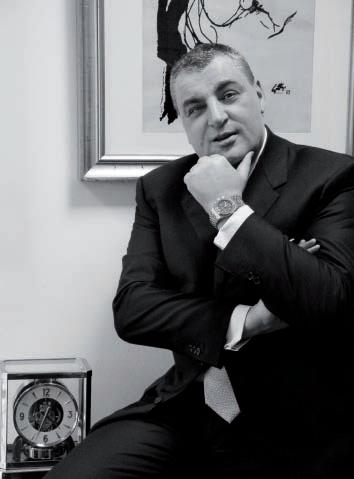
story
| The
Coast 125
Capri
Divine
Roberto Meneghesso is the country manager for Italy of McArthurGlen Designer Outlet
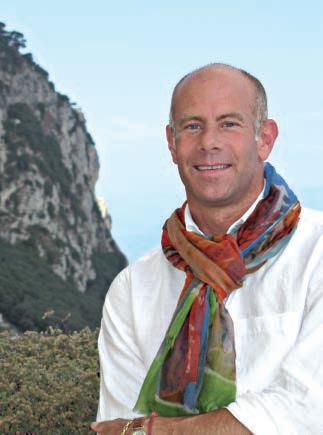 126 Capri | The Divine Coast
The great-grandson of Edwin Cerio, Federico Alvarez de Toledo (Brussels, 1964) is the creator of the Eco Capri project
126 Capri | The Divine Coast
The great-grandson of Edwin Cerio, Federico Alvarez de Toledo (Brussels, 1964) is the creator of the Eco Capri project
interview history
Eredità caprese
AN INHERITANCE FROM CAPRI text Cesare Maria
 Cunaccia
Cunaccia
Incontro con il nipote di Laetitia Cerio, Federico Alvarez de Toledo Meeting with the grandson of Laetitia Cerio, Federico Alvarez de Toledo
Federico Alvarez de Toledo è il nipote di Laetitia Cerio, poliedrica figura d’artista, madre di suo padre Fernando e a sua volta figlia del grande Edwin Cerio, scrittore, intellettuale, ricercatore, botanico, polemista, ambientalista avant la lettre, di certo il vero deus ex machina della Capri delle avanguardie novecentesche, durante il suo periodo di acme culturale. Nato a Bruxelles nell’aprile 1964, il primo viaggio verso l’isola degli avi per Federico Alvarez de Toledo data a soli tre mesi dopo essersi affacciato al mondo. A Capri, Federico, personalità affascinante, semplice e insieme sofisticata, un sorriso irresistibile e un’inossidabile allure, è legatissimo, dopo aver vissuto in tutto il mondo, in un itinerario esistenziale che, oltre al Belgio si snoda dal Brasile al Lussemburgo, poi in Francia, negli Stati Uniti, in Cina. Scuole primarie negli USA e un’immersione nella scena globale che l’hanno reso decisamente cosmopolita, seguendo la scia internazionalistica e ostinatamente libera caratteristica dei Cerio. Dal 1997 decide di lavorare soltanto per compagnie europee e di risiedere nel vecchio continente anche per stare più vicino a Capri. Tra i prestigiosi incarichi professionali spiccano quelli di Global Director of Retail per Villeroy & Boch e per Baccarat. L’avventura che ha appena intrapreso, Eco Capri, trae linfa dalla storia familiare, dopo aver scoperto un anno fa che il Centro Caprense stava preparando una mostra sull’attività artistica della nonna, Laetitia Cerio. Una sorta di sogno, per Federico, l’idea di reintegrarsi nel tessuto vivo dell’isola delle sirene. Federico contrariamente a tutti i luoghi comuni più abusati, dichiara di vedere e sentire Capri come un territorio di profonda, conscia solitudine. “Posso perfettamente trovare pace – conferma - tra la folla che gremisce la Piazzetta o nel solare santuario della nostra terrazza, a palazzo Cerio. Un luogo del cuore, sacrale e segreto, dove mi sento completamente al sicuro. Certe mattine, bevendo il caffé in un angolo della terrazza, mi pare proprio di essere la persona più fortunata al mondo. Si può dire che ho speso anni di vita osservando dalla terrazza il metamorfico teatro, la rappresentazione ondivaga, dinamica e frammentata che si svolge in Piazzetta, così come perdendomi nell’eterno immutabile profilo roccioso delle alture d’intorno.
Federico Alvarez de Toledo is the grandson of Laetitia Cerio, a multifaceted artist. Mother to his father Fernando, Laetitia is also the daughter of Edwin Cerio. Most certainly, he was the authentic deus ex machina of Capri’s twentieth-century avant-garde during the island’s cultural glory days. Born in Brussels in April 1964, Federico Alvarez de Toledo took his first trip to his grandparent’s native island just three months after his birth. Federico has a charming personality, managing to be simple and sophisticated at the same time. He is deeply linked to the island. After having lived in Belgium and all over the world, his existential journeys brought him to Brazil, Luxemburg, France, the United States and China. He attended primary school in the United States and his full-immersion within the global scene has made him decidedly cosmopolitan, boasting that international flair and willful free-minded character that has always distinguished the Cerio family. Since 1997, in sync with his family, he decided to solely work for European companies and to live in the Old World full-time, so that he could return to Capri more often. Federico Alvarez de Toledo has held various professional posts including that of Global Director of Retail for Villeroy & Boch and for Baccarat. Eco Capri, his newest adventure, takes its inspiration from his family’s history, after discovering one year ago that the Centro Caprense was preparing an exhibition on his grandmother Laetitia Cerio’s artistic activities. It was a dream-of-sorts for Federico—the idea of reintegrating himself as part of the island’s cultural fabric would give him the chance to give something back to the Island of the Sirens, even if was just a portion of what the island itself had given him. lf. Refusing to subscribe to overused cliques, Federico declares that he feels and perceives Capri to be a profound territory filled with conscious solitude, ‘I can perfectly find peace there,’ he confirms, ‘amidst the crowds that flock to the Piazzetta or while in the sunny sanctuary of our terrace overlooking Palazzo Cerio. ‘It’s a place that belongs to the heart—sacred and secretive, where I feel completely safe. On certain mornings, as I enjoy a cup of coffee in the corner of the terrace, I really feel as if I’m the luckiest person in the world. Yet, my most vivid image of Capri—or I should say ‘sound of Capri’—is the way its bell tower fatefully marks
Capri | The Divine Coast 127
Ma l’immagine, o meglio il suono caprese più vivido, emblematico e forte per me, rimane il fatale battere le ore del campanile, come fosse la pulsazione cardiaca, il respiro dell’isola intera. Mi stupisce sempre, fa parte del gioco, ma adoro osservare quanti cadono preda dell’amore per Capri, che fanno propria l’energia, l’inimitabile magia dell’isola”. Laetitia Cerio ricorre da protagonista nei ricordi. Non mancano nemmeno la mitica Gracie Fields con Boris, alla Canzone del Mare. “Mia nonna resta una delle persone che hanno esercitato un impatto fondamentale sul mio modo di vivere. La sua chiarezza mentale, la voce inconfondibile, la concentrazione interiore quando dipingeva, l’universo multiforme dei suoi disegni, la scelta precisa delle parole reperite nelle diverse lingue che possedeva, non sono cose che si dimenticano. Intorno ai vent’anni ho avuto la fortuna di poter condividere molte vacanze capresi da solo con lei. Durante i nostri lunch a Ca’ del Sole, composti di semplici cibi preparati con amore da Anna, mi impadronivo invariabilmente di qualche inedita tessera del puzzle della vicenda familiare e della storia isolana”. Ed ecco, infine, Eco Capri, un progetto che debutta sulla scorta della preparazione protrattasi per oltre un anno, della mostra su Laetitia Cerio al Centro Caprense, curata da Simona D’Angiola e Carmelina Fiorentino”. Eco Capri - continua Alvarez de Toledosi nutre della passione per la creatività caprese, si propone di promuovere persone, luoghi e idee secondo una modalità attuale.Vuole appunto essere l’eco dell’isola, questa è la visione, il filtro semantico del brand. Ogni singolo prodotto, ogni singolo concetto presentato da Eco Capri deve avere origine dal solco dell’eredità tematica caprese e catalizzare, provocare ulteriore amore verso l’isola. Ogni prodotto ha una storia da raccontare, un segreto da rivelare.
each hour. The sound of those bells are strongly emblematic for me, like the pulsing of the heart, the breath of the entire island’. Laetitita Cerio became a protagonist of his memories, dominating his memory and emotional background. The legendary Gracie Fields and Boris were not missing from the mix, as he thinks of them gathered at the Canzone del Marte. ‘My grandmother, Laetitia Cerio Alvarez de Toledo, remains one of the people who truly had a fundamental impact on how I live and view the world. Her mental clarity, her unmistakable voice, the inner concentration she had when she painted, the multi-faceted universe inherent in her drawings, the precision of the words she used in the different languages—those are things you never forget. When I was about twenty years old, I had the good fortune of sharing many prolonged vacations with her in Capri, just the two of us. During our lunches alone at Ca’ del Sole I would invariably claim some piece of the puzzle that made up my family’s past or the island’s history. Little by little, I started to understand what it meant to be a Cerio in Capri, both today and yesterday.’ And that’s how Eco Capri came to be. It’s a project that debuted alongside the year-long preparatory activities surrounding an exhibition on Laetitia Cerio at the Centro Caprense, curated by Simona D’Angiola and Carmelina Fiorentino. ‘Eco Capri feeds on a passion for Capri-style creativity. It offers itself up, intent on promoting people, places and ideas in current ways,’ continues Alvarez de Toledo. It aims to be the island’s echo, that’s our vision, the brand’s semantic filter. Each single project, each individual concept presented by Eco Capri has to originate from our inherited landscape and catalyze or rouse additional love for the island. Each product has a story to tell and a secret to reveal… ‘

128 Capri | The Divine Coast
“Every single product presented by the brand Eco Capri must originate in Caprese legacy”
Faraglioni, Capri






 Above: Anna Proclemer, Alberto Moravia and Enrico Prampolini, members of a contest panel in Marina Piccola
Below: Moravia and Elsa Morante at Villa Malaparte.
On the right the catalogue of the exhibiotion by Fondazione Il Rosaio
text Francesca Lombardi photo courtesy Fondazione Il Rosaio
Above: Anna Proclemer, Alberto Moravia and Enrico Prampolini, members of a contest panel in Marina Piccola
Below: Moravia and Elsa Morante at Villa Malaparte.
On the right the catalogue of the exhibiotion by Fondazione Il Rosaio
text Francesca Lombardi photo courtesy Fondazione Il Rosaio
Complice di una profonda trasformazione, Capri accoglie tra le due guerre le migliori menti del paese An accomplice of profound transformation, Capri welcomed the country’s brightest minds between the two world wars
«[…] rassicurante, in un’aria orientale di città araba, Anacapri si affacciava dietro una barriera di verdura con le sue terrazze bianche, il suo campanile, la cupola grigia della sua chiesa»: in un racconto del 1951 Alberto Moravia dipinge con queste parole Anacapri. Il racconto, è Luna di miele, sole di fiele e Capri emerge dalle parole di Moravia con tutto il fascino esotico di un luogo scelto per la fuga. Da cosa fuggiva Moravia?
Per capirlo bisogna andare a qualche anno prima. E’ datata 19 agosto 1937, una lettera spedita dall’hotel Windsor di Capri da Enrico Prampolini, pittore futurista frequentatore dell’isola da oltre 15 anni, all’amico Guglielmo Jannelli, figura di spicco del Futurismo Siciliano, dove per la prima volta si parla degli “amici di Capri”. Alberto Moravia e Elsa Morante, Palma Bucarelli, Toti Scialoja e lo stesso Prampolini, e poi dopo ancora Corpora, Capogrossi, Guttuso e un Malaparte leggermente più defilato, sono però più che semplici amici. In un periodo - quello fra le due guerre - di caduta degli ideali che avevano ispirato il fascismo, un gruppo di scrittori e pittori eleggono Anacapri come spazio mentale sul quale misurare il senso di una crisi morale e linguistica.
Nella letteratura come nelle arti visive. E’ proprio nella pittura che i cambiamenti nei linguaggi espressivi sono più macroscopici e Capri è lo scenario, anche appena accennato, di opere che al di là del loro valore artistico hanno il passo energico della svolta. Ritratto Di Asta Sondegaard Mazzarella di Giuseppe Copogrossi è il preludio alla svolta in senso astraente del pittore romano, che arriva a Capri negli anni ’40 con un solido e riconosciuto percorso alle spalle caratterizzato da una pittura tonale non immemore della tradizione metafisica.

Olympia«[…] reassuring, with the oriental air of an Arabian city, Anacapri looked out from behind a barrier of vegetables with its while terraces, its bell tower and the gray dome of its church»: This quote captures how Alberto Moravia depicted Anacapri in one of his stories in 1951. In his tale, Luna di miele, sole di fiele e Capri, Moravia evokes all the exotic charm of a place that’s chosen as an escape. But just what was Moravia escaping from? To understand, you’ve got to go back a few years. A letter, dated August 19, 1939, was sent from Capri’s Hotel Windsor by Enrico Prampolini, a futurist painter who frequented the island for more than 15 years, to his friend Guglielmo Jannelli, a top exponent of Sicilian Futurism. This letter makes the first recorded mention of ‘the friends of Capri’. We’re talking about Alberto Moravia and Elsa Morante, Palma Bucarelli, Toti Scialoja and even Prampolini himself, followed by Corpora, Capogrossi, Guttuso and Malaparte—the group, admittedly, was slightly more than just friends. During the years between the two world wars, the decline of traditional ideals inspired the rise of Fascism. It was in this context that a group of writers and painters chose Anacapri as a mental space where they could measure themselves up against the era’s moral and linguistic crises. This was true for both literature and the visual arts.
Painting was an art form where the changes affecting expressive language proved particularly macroscopic. Though the landscape was often only hinted at, Capri was a ready backdrop for works characterized by an energetic flair that went beyond their purely artistic value. Portrait of Asta Sondegaard Mazzarella by Giuseppe Copogrossi was, for example, a prelude to the Roman painter’s turning point and withdrawal. He had first arrived in Capri in the 1940s with a solid, widelyacclaimed artistic journey behind him; he had created tonal paintings that were not unmindful of the metaphysical tradition. Like him, an entire group of artists who had felt them-
Capri | The Divine Coast 131
divine
icon
Come lui, tutto un gruppo di artisti che si erano riconosciuti nel Futurismo e che ora ne seguivano da lontano il declino, grazie anche alla pesante ancora del Fascismo. Il dipinto di Capogrossi è interessante anche per la localizzazione di questo movimento anacaprese: Asta Sondegaard e il marito sono proprietari di un hotel in contrada Ceselle che diventa il fulcro fisico intorno al quale si concentra questo passaggio di menti e pensieri. Il fulcro morale è invece rappresentato da Alberto Moravia, legato a Capri da un legame non occasionale, perché l’isola, lontano da essere una semplice meta turistica, viene vissuta, da solo o con Elsa Morante, come luogo privilegiato per gli incontri intellettuali e la scrittura: qui nascono le principali opere moraviane e vengono ambientate storie e racconti. La mostra Tracce dell’isola 1936 -1956 Arti visive, cronache e letteratura tra Capri e Anacapri - promossa dalla neo-nata associazione Il Rosaio - ad Anacapri, al Museo Casa Rossa racconta questo periodo di storia, compreso tra la seconda guerra mondiale e la stagione della dolce vita, in cui Capri resta un’isola dove l’arte è di casa e i pittori, gli scrittori, i poeti, i fotografi, i registi che vi hanno soggiornato, danno vita a opere e a stagioni creative indimenticabili.
Un luogo, Capri, in grado di coniugare ricerca e mondanità, impegno e costume come pochi posti al mondo. Il percorso espositivo proposto dalla mostra nasce per approfondire aspetti diversi: dalla cronaca alle vicende della politica, dalle arti figurative alla letteratura. Le diverse informazioni e i differenti linguaggi – quadri e disegni, foto d’epoca, filmati d’archivio, brani di cinegiornali, servizi televisivi – formano un vero e proprio caleidoscopio di suoni e di visioni, intrecciandosi di continuo nel percorso espositivo, e conducendo il visitatore nello spirito di un’epoca e nel solco della sua trasformazione. Sede della associazione Il Rosaio, l’omonima casa caprese costruita da Edwin Cerio nel 1921 a partire da una struttura architettonica preesistente. Proprio in quella contrada Ceselle ad Anacapri, vocata da sempre a catalizzare le energie intellettuali dell’isola.
selves in sync with Futurism were now following its decline from afar, thanks, in part, to the heavy anchor of Fascism. Capogrossi’s paintings are especially interesting because of their context within the Anacapri movement: Asta Sondegaard and her husband owned a hotel in the Ceselle district which became the physical point of reference for this eclectic group of bright minds and their shared thoughts. Meanwhile, the movement’s moral fulcrum was represented by Alberto Moravia who was linked to Capri in an non-occasional way. To him, the island was far more than a simple tourist spot; whether alone or with Elsa Morante, he considered it a privileged place for meeting intellectuals or for writing. Moravia’s main works were created here and this is where he set various stories and narratives.
The exhibition Tracce dell’Isola (Island traces) (1936-1956): Visual arts, chronicles and literature from Capri and Anacapri is being organized by the newly-established association ‘Il Rosaio’. It is scheduled to take place at the Casa Rossa Museum in Anacapri. This noteworthy show spotlights a period in history that goes from World War II to the Dolce Vita era, when Capri became an island where art was the order of the day, becoming home to painters, writers, poets, photographers and directors, giving rise to works and unforgettable creative seasons.


Like few places in the world, Capri has always been a place that’s capable of combining research and worldliness, commitments and customs. The aim of this exhibition is to delve into various aspects like social columns and political occurrences, figurative arts and literature. Expect diverse information and different mediums—notebooks and drawings, vintage photos, archived video footage, newsreels and television reports that constitute an authentic kaleidoscope of sounds and views. These elements continuously combine during the exhibition’s itinerary, leading the visitor toward the spirit of an age and the journey toward its transformation. The ‘Il Rosario’ association has its headquarters in the house by the same name that Edwin Cerio built in 1921, on the foundations of a pre-existing architectural structure. It is located precisely in Anacapri’s Ceselle district, which has always acted as a catalyst for the island’s intellectual energies.

divine icon 132 Capri | The Divine Coast
The movement’s moral fulcrum was represented by Alberto Moravia who was linked to Capri in an non-occasional way


 Above: Alberto Moravia. Below: on the left Giorgio De Chirico and Enrico Prampolini, on the right Palma Bucarelli with Curzio Malaparte On previous page from left: Capogrossi with his daughter Olga, Palma Bucarelli and a group of friends with Prampolini, Moravia and Elsa Morante
Above: Alberto Moravia. Below: on the left Giorgio De Chirico and Enrico Prampolini, on the right Palma Bucarelli with Curzio Malaparte On previous page from left: Capogrossi with his daughter Olga, Palma Bucarelli and a group of friends with Prampolini, Moravia and Elsa Morante
Fammi a pezzi!
TEAR ME IN PIECES
text Francesca Lombardi
Maurizio Galimberti. Polaroid dal Capri Palace e dall’Isola Polaroids from the Capri Palace and the island

Claudia è bella come la Danae di Klimt, vortice di rosso dei capelli intorno al volo perfetto. Xavier Bardem è un fauno dei boschi, con due occhi che ti agganciano, centrali e ammalianti. Benicio Del Toro, Zeus: riflessi d’argento sui capelli ondulati, filosofico e rock con il grande anello nella mano intenta nei pensieri. I mosaici di Maurizio Galimberti sono arazzi di polaroid dove lo spazio e il tempo si annullano. Le sue opereantiche e contemporanee nello stesso istante –superano il vincolo dei 60 cm delle Polaroid. Come ci spiega lui stesso: “ In una polaroid riuscivo a ritrarre al massimo un volto, con questa tecnica riesco ad avvicinarmi quanto voglio”. Lucio Dalla, dopo aver visto i suoi lavori esordì dicendo “ Galimbo , mi devi fare a pezzi” . Il suo ritratto è diventato la copertina di un cd di Lucio. Lo abbiamo incontrato alla vigilia di una vacanza in Puglia, felice di aver concluso le foto per un libro in uscita a settembre – Extravagante, progetto legato alla sua Italia - e innamorato. Ci tiene a dirlo. La prima cosa che ti viene da chiedergli quando lo incontri è, se quando si trova di fronte a un soggetto, comincia a scattarlo e poi lo ricompone o ha delle vere e proprie visioni grazie alle quali immagina la figura finita. La seconda soluzione : “ Se scatto 70 polaroid compongo la figura con 70 polaroid, non scarto niente. Ho imparato a dividere lo spazio con la mente da ragazzino, quando mio padre m portava in cantiere con lui e mi faceva contare quanti cavalletti da ponteggi erano necessari per ogni metro quadrato. Ieri sera ero a cena con la mia compagna e senza farci attenzione
Claudia is as lovely as Klimt’s Danae, the red of her hair whirling around her perfect face. Xavier Bardem is a forest faun with two eyes that capture you—focused and haunting. Benicio Del Toro, Zeus: silver reflections shine in his wavy hair, a philosopher and rock, he wears a large ring and is lost in his thoughts. Maurizio Galimberti’s mosaics are Polaroid tapestries where time and space cancel themselves out. Ancient and contemporary at the same time, his works go beyond the Polaroid’s 60-cm limitations. As the artist himself explains, ‘In one Polaroid, I was able to capture one face at the most. With this technique, I’m able to get as close up as I want. After seeing his works, Lucio Dalla, started off by saying ‘Galimbo, you’ve got to tear me to pieces.’
His portrait became the cover for one of Lucio’s albums. We meet with him, just before his departure for a vacation in Puglia, happy to have finished up the photographs for a book that’s scheduled for release in September. It’s called Extravagante, a project linked to his Italy—the man’s in love and he’s keen on saying so. The first thing you feel like asking when you meet him, is if he starts taking pictures of a subject as soon as he comes upon it, recomposing the image later, or if he has authentic visions that allow him to imagine the finished figure right away. It’s the second option: “If I take 70 Polaroids, I compose the figure using 70 Polaroids; I don’t throw anything away.
I’ve learned to divide up space with the mind of a little boy, like when my father would take me to his work-
interview art 134 Capri | The Divine Coast
 Born in Como in 1956, Maurizio Galimberti grew up in Meda
Born in Como in 1956, Maurizio Galimberti grew up in Meda
riempivo i bicchieri di vino esattamente alla stessa altezza… ho questo rapporto innato con lo spazio.!”
Come è iniziata questa sua lunga storia di amore con le Polaroid?
Ho iniziato a scattare a15 anni, totalmente autodidatta. Scattavo in analogica, poi c’era la camera oscura…. Ma io ho dei problemi con il buio, non mi piace. Non lo dico spesso, ma sono stato adottato a 5 anni e il buio mi ricorda l’orfanotrofio. Poi ho scoperto le Polaroid. Mi hanno aperto un nuovo mondo di progettualità e una maniera diversa di pormi con la storia e con il tempo.
Come si è sentito quando ha chiuso Polaroid?
Sono andato a NY e ho comprato tutte quelle disponibili.In realtà sapevo che non sarebbe finita lì … infatti nel 2010 è arrivato Florian Kaps, che con il progetto Impossibile ha iniziato a produrre pellicole istantanee
Quali sono i punti cardine del suo lavoro?

Il ready made di Man Ray e la sua attualizzazione della storia; l’energia cinetica di certi quadri di Duchamp, come Il nudo che scende le scale… E a Capri?
Sono stato un anno fa, per due volte. Ho fatto un lavoro con la Fondazione Capri, esponendo le mie foto accanto a quelle di Herbert Litz . E’ come dire a un giocatore dell’Inter di fare una partita con Maratona e Pelè… E’ abituato a giocare in serie A ma è comunque una emozione. Poi ho conosciuto Tonino (Cacace , proprietario del Hotel Capri Palace,ndr), ci somigliamo fisicamene, in un’altra vita potremmo essere stati fratelli… Lui è legato ai suoi genitori, alla sua terra, ne è fiero. Mi ha mostrato il dipinto di una Madonna appartenuta alla sua famiglia. L’ho ri- fotografata alla mia maniera, rendendola contemporanea. Lui l’ha messa nel salone centrale dell’albergo. Mi ha molto lusingato.
shop and make me count how many tripod platforms were necessary for each square meter. Last night, I was at my partner’s house and without meaning to, I filled our wine glasses to exactly the same height…I have this innate relationship with space!”
How did your long-term love story with Polaroid begin?
I started taking pictures when I was 15—totally self-taught. I would shot analogically and then, there was the dark room. But I have problems with the dark; I don’t like it. I don’t say this often, but I was adopted when I was five years old—darkness reminds me of the orphanage. Then, I discovered Polaroid. It opened up a new world for me as far as projects were concerned and a whole different way of dealing with history and time. How did you feel when Polaroid closed down?
I went to New York and bought every single one I could find. In reality, I knew that things wouldn’t end there. In fact, in 2010 Florian Kaps arrived and thanks to the Impossible Project, he began producing instant film. What are the cardinal points of your work?
Man Ray’s Ready-made and his actualization of history; the kinetic energy inherent in some of Duchamp’s paintings like Nude descending a staircase…
And in Capri?
I was there twice, a year ago. I did a job for the Capri Foundation, exhibiting my photos alongside those of Herbert Litz. That’s like telling a player from Inter that they’re going to play a match with Maradona and Pelè… He may be used to playing in Series A, but it’s still a thrill. Then, I met Tonino (Cacace, owner of the Hotel Capri Palace). We look alike physically and, in another life, we could have been brothers… He’s connected to his parents and his land. And he’s proud of it.
He showed me a painting of a Madonna that once belonged to his family. I re-photographed it in my own way, making it contemporary. He put it in the hotel’s central hall. I found this very flattering.

136 Capri | The Divine Coast
His Polaroid mosaics are world-famous; since 1997, they have been a favorite on the art collectors’ scene
interview art
Above: the Madonna of Pompei was created by Galimberti for the Capri Palace and Margareth Madè. In the next page: several works by Galimberi: Lady Gaga, Johnny Depp, Xavier Bardem and New York

 138 Capri | The Divine Coast
ph. Irene Kung These photographs are shown at the exhibtion Mare Nostrum, until September 10 at Fondazione Capri
138 Capri | The Divine Coast
ph. Irene Kung These photographs are shown at the exhibtion Mare Nostrum, until September 10 at Fondazione Capri
Marenostrum
text Mila Montagni photo Ferdinando Scianna, Irene Kung
Un frammento di terra che attrae e racconta, che affascina e domina, l’isola di Capri, immersa com’è in un mare che è Mediterraneo e primigenio, nella sua bellezza di roccia e verde di profumi e contrasti. Un’isola che si ama e si narra da secoli attraverso parole, ma anche immagini come quelle che la Fondazione Capri ha raccolte in una mostra,tra le fotografie di due maestri di potenza iconografica quali Ferdinando Scianna e Irene Kung, che qui disegnano una Capri unica e (mai vista... A fragment of land that inevitably draws you to it and tells its story. The island of Capri both fascinates and dominates, immersed in a sea like the primordial Mediterranean, nestled amidst its crag-filled beauty and the green of its scents and contrasts. This island has been beloved and recounted for centuries through words and imagines, like those the Capri Foundation has gathered together from a collection of photographs by Ferdinando Scianna and Irene King. In their own way, these powerful iconic masters allow viewers to catch a glimpse of Capri in all of its uniqueness, like it has never been seen before.
Capri | The Divine Coast 139
capri art
 140 Capri | The Divine Coast
ph. Francesco Scianna, Capri 1984
140 Capri | The Divine Coast
ph. Francesco Scianna, Capri 1984
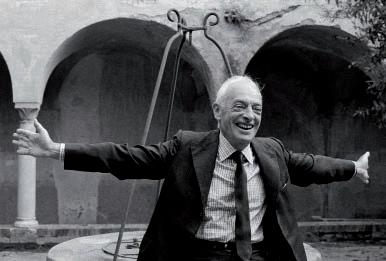

141
Capri | The Divine Coast
Above: ph. Francesco Scianna, Capri 1984
Below: ph. Francesco Scianna, Saul Bellow Capri 1984
Above:
Below: ph. Irene Kung, Certosa di San Giacomo

 142 Capri | The Divine Coast
ph. Irene Kung, Madonna del Soccorso - Villa Jovis
142 Capri | The Divine Coast
ph. Irene Kung, Madonna del Soccorso - Villa Jovis
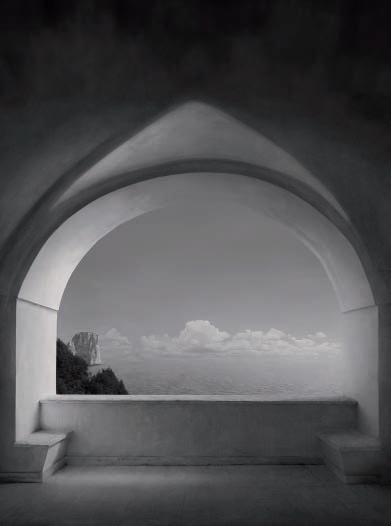
143
Capri | The Divine Coast
ph. Irene Kung, Certosa di San Giacomo
Le dimore del mito
THE HOMES OF MYTH text Tito Fiorani
Storia e passioni nelle case più belle di Capri History and passion in Capri’s most beautiful houses
Mirabile sintesi di bellezza e di storia Capri si offriva, negli anni a cavallo tra il XIX e il XX secolo, come meta privilegiata di artisti e sognatori, donne fatali e grandi peccatori. Molti decisero di fermarsi sull’isola per sempre, acquistando o costruendo semplici o sfarzose dimore. Tra questi, nel 1876, un ricchissimo medico, il colonnello sudista John Cly Mac Khowen. Giunto ad Anacapri acquistò un rudere, nei pressi di una vecchia torre Aragonese. Lo ingrandì di una serie di ambienti seguendo il gusto della “casa museo” all’epoca tanto in voga, e per soddisfare la sua passione per l’archeologia riunì nelle sale e nei cortili della Casa Rossa (così chiamata per il suo colore) una serie di reperti archeologici trovati nell’isola. Schiavista convinto, girava per il paese impugnando un frustino che non esitava ad usare. Ma compiva anche atti di grande generosità, quali il curare gratuitamente gli ammalati fornendo loro medicine, cibo e denaro. Tornato negli Stati Uniti fu ucciso in un bar di New Orleans, nel corso di una rissa. Sempre a Anacapri giunse, nel 1895, il medico svedese Axel Munthe. Pose gli occhi sulle rovine di una piccola cappella medioevale dedicata a San Michele e decise di acquistare il terreno e i ruderi. Chiamò la villa San Michele, in seguito scrisse l’omonimo romanzo che lo rese famoso. Nel 1910 a causa di seri problemi alla vista, fu costretto a ritirarsi nell’ombrosa Torre Materita che aveva fatto restaurare, affittando la troppo soleggiata villa San Michele a Luisa Amman, moglie del marchese Camillo Casati Stampa di Soncino. Costantemente tesa al superamento di ogni limite, la marchesa si lasciava andare ad ogni genere di eccentricità. Le furono attribuiti numerosi amanti, il più celebre dei quali fu Gabriele d’Annunzio. Con il suo modo di vivere riuscì nel giro di pochi decenni a dilapidare l’enorme patrimonio, tanto da trascorrere in miseria gli ultimi anni della sua vita. Avevano invece amministrato con saggezza i loro averi le “sorelle” Wolcott-Perry. Imparentate alla lontana ed entrambe orfane, Kate e Saidee erano diventate l’una il centro dell’esistenza dell’altra, condividendo appassionatamente il loro amore diverso. Sbarcate a Capri nel 1897, per una visita che doveva durare pochi giorni, furono talmente colpite dai luoghi che decisero di restarvi per sempre. A Marina Grande sorgeva una piccola costruzione con il tetto formato
A marvelous combination of beauty and history, Capri became a privileged Mecca for artists, dreamers, femme fatal and great sinners during the eighteenth and nineteenth centuries. Many decided to stay on the island forever, purchasing or building homes, both simple or lavish. A case in point is southern colonel John Clay Mac Khowen, an extremely wealthy doctor who came to Anacapri in 1876 and purchased dilapidated ruins near the old Aragonese tower. He renovated the building according to the housemuseum style in vogue at the time. Meanwhile, to satisfy his passion for archeology, he gathered a series of archeological ruins found on the island and placed them in the rooms and courtyards of the Casa Rossa, named for its color.
A die-hard slave driver, he travelled all over the country with his whip in hand—and he never hesitated to use it. Yet, he was also known for his great acts of generosity like treating patients for free as well as supplying them with medicine, food and money. Upon returning to the US, he was killed during a bar brawl in New Orleans. Another doctor arrived in Anacapri in 1895: the Swede Axel Munthe. As soon as he laid eyes on a small Medieval chapel dedicated to San Michele, he decided to purchase the land and its architectural remains. He called the villa San Michele and later wrote the novel by the same name that made it famous. In 1910, due to serious problems with his sight, he was forced to retire to the shadowy Materita Tower, which he had restored. He then rented the sunny Villa San Michele to Luisa Amman, wife of Marquis Camillo Casati Stampa of Soncino. Constantly intent on overcoming all limitations, the marquise surrendered to all sorts of eccentricities. She is said to have had numerous lovers, of whom Gabriele d’Annunzio was the most famous. Due to her lavish lifestyle, in just a few decades she proved capable of squandering her enormous patrimony—so much so, that she spent the last years of her life in poverty. Two people who, on the contrary, were able to sagely manage their assets were the Wolcott-Perry sisters. Distant relatives who were both orphaned, Kate and Saidee became the focal point of each other’s existence, sharing their unique brand of love in a passionate way. They arrived in Capri in 1897 for a visit that was supposed to last a few days, and they were so impressed by it that they decided to stay for the rest of their lives. On Marina Grande there was a small building with a delightful dome-like roof.
divine itineraries 144 Capri | The Divine Coast
Below:


|
Coast 145
Capri
The Divine
Above: Casa come me Malaparte
Villa San Michele
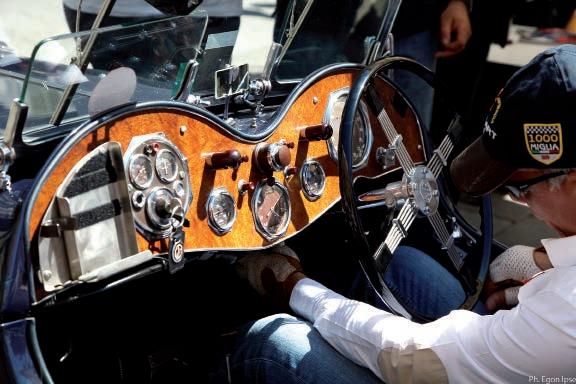
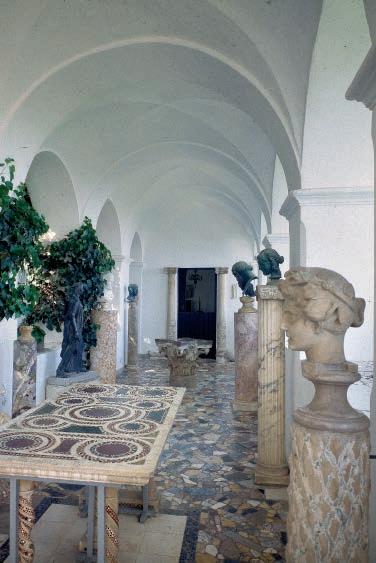



146 Capri | The Divine Coast 1. 6. Casa Rossa 2. 3. Villa San Michele 4. Casa come me 5. Villa Lysis Tito Fiorani is the author of the book “Le case raccontano”, published by La Conchiglia 3 1 2 4
da graziose cupole. Dopo una breve contrattazione acquistarono la casa, il terreno adiacente e la spiaggia sottostante. Cinque anni dopo era diventata una splendida villa, che le proprietarie chiamarono Torricella, perfetto esempio di stile eclettico, con decorazioni arabeggianti, torri e torrette, finestre bifore e merlature moresche, il tutto mescolato a qualcosa di gotico e di rinascimentale. Il più caro tra i loro amici capresi era stato un giovane poeta francese, il barone Jacques d’Adelsward Fersen la cui dimora, Villa Lysis, rappresenta oggi il più sublime monumento dell’effimero. Fuggito da Parigi nel 1904 dopo aver scontato una condanna a sei mesi di prigione per oltraggio alla morale e corruzione di minorenni, Jacques cominciò a frequentare l’isola divenuta stravagante colonia di residenti stranieri. Abbandonato il titolo di barone decise di presentarsi come il conte Fersen. Sull’isola acquistò un terreno nei pressi della villa di Tiberio, in località Lo Capo, e lì decise di costruire il suo eremo incantato, dove potersi ritirare, alla ricerca di quell’ispirazione poetica che troppo spesso gli faceva difetto. Affidò il progetto della villa allo scenografo ed incisore Edouard Chimot, raccomandandogli di costruire “qualcosa che non somigliasse a niente”. Per più di quindici anni tentò di scrivere poesie, continuando a dare feste, a fumare oppio e a fare uso di ogni genere di droga. Poco più che quarantenne decise di uscire di scena trovando finalmente nella morte quella coerenza che gli era mancata alla vita. Nessun prete volle benedire la salma.
In quegli anni il pittore tedesco Karl Willhelm Diefenbach si era stabilito a Capri ed aveva scelto di abitare alla fine di via Camerelle, proprio là dove la strada si biforca. L’elegante residence che sorge adesso in quei luoghi è ciò che resta di Villa Camerelle, la sua prima dimora caprese. Personaggio singolare, occhi chiari e penetranti, la barba e i capelli eternamente in disordine, vestito sempre di un saio calzava sandali anche d’inverno. Disdegnava il vino e il tabacco, non mangiava mai carne, predicava l’amore per la natura e per gli animali, il nudismo, la pace e la fratellanza, contornato da numerosi allievi con i quali condivideva la propria abitazione. Una parte delle sue opere, 31 tele e 5 sculture di gesso, sono oggi conservate nel museo che porta il suo nome presso la Certosa. Si tratta di tele enormi, chiuse in massicce cornici, di eccezionale forza espressiva. Un nuovo capitolo si aprì a Capri con Curzio Malaparte che realizzò sull’isola il suo sogno: incagliata fra le rocce del promontorio di Punta Massullo, a picco sul mare si erge la villa che lo scrittore chiamò Casa come me. E’ costituita da un grande salone, sulle cui pareti si aprono quattro finestroni da ciascuno dei quali si ammira un panorama diverso. Una scala esterna, a forma di imbuto conduce al caratteristico ed inimitabile tetto solarium, al centro del quale si staglia, tra tanto rosso, una bianca vela di muratura. Tra queste mura Malaparte scrisse le pagine più significative dei suoi libri più celebri, amò donne bellissime e famose, ospitò uomini illustri, ma subì anche l’onta di ben due arresti, per i suoi trascorsi fascisti. Personaggio camaleontico e cosmopolita Malaparte fu, nel corso della sua movimentata esistenza, vincitore e vinto, fascista e maoista, aristocratico e populista, ma soprattutto uno scrittore. La sua casa viene considerata un autentico capolavoro del razionalismo italiano.
After a brief negotiation period, they acquired the house, its adjacent land and the beach below. Before five years had passed, it was transformed into a splendid villa which the owners named Torricella. Its eclectic style featured Arabesque decorations, towers and turrets as well as mullioned windows and Moorish battlements. All of these elements were combined with a flair that suggested Gothic and Renaissance details. Their dearest friend in Capri was a young French poet, the baron Jacques d’Adelsward Fersen, whose home, Villa Lysis, represents a sublime monument to the ephemeral. Having escaped from Paris in 1904 after serving a six-month prison sentence for moral offenses and the corruption of minors, Jacques began frequenting the island which, by then, had morphed into an extravagant colony for foreign residents. He shed his title of baron and decided to present himself as Count Fersen. He purchased land on Capri, in Lo Capo, near the Villa di Tiberio and decided to build his enchanted hermitage there, where he could retire and search for the poetic inspiration that so often escaped him. Fersen entrusted the villa’s planning to set-designer and engraver Edouard Chimot, biding him to build ‘something that doesn’t look like anything’. For more than fifteen years, he attempted to write poetry, continuously hosting parties, smoking opium and using all kinds of drugs in hopes that they would help him face his life’s frightening contradictions. He had imagined a marriage that was worthy of his class, a diplomatic post and a brilliant literary career. Instead, he lived almost as a recluse, banned by the very aristocracy to which he belonged. Even his sister and beloved mother ignored him. Finally, just after he turned forty, he decided to seek, in death, the coherence he had failed to find in life. No priest conceded to blessing his corpse.
During that same era, German painter Karl Willhelm Diefenbach established himself in Capri and chose to live at the end of Via Camerelle, right where there’s a fork in the road. The elegant residence that still stands in that spot is all that’s left of Villa Camerelle, his first home in Capri. He was a unique person with clear penetrating eyes, perennially messy hair and an unkempt beard. Always dressed in a habit, he wore sandals even in winter. He disdained wine and tobacco and never ate meat. Instead, he professed a love for nature, animals, nudism, peace and fraternity. He was surrounded by numerous students with whom he shared his home. A part of his works—31 canvases and 5 gesso sculptures—are currently hosted at the museum bearing his name in Certosa. These enormous canvases are set in solid frames and exude exceptional expressive strength. A new chapter began in Capri with the arrival of Curzio Malaparte who crystallized his dream on the island. Nestled between the rocks of Punta Massullo, on a peak overlooking the sea, stands the villa that the writer called ‘Casa come me’ (House like me). It includes a large hall where each wall boasts four windows offering different views. A funnel-shaped external staircase leads to the inimitable solarium roof, a white walled silhouette amidst so much red. It was here that Malaparte wrote the most significant pages of his celebrated books. Here, he loved beautiful, famous women and hosted illustrious men. But it was here that he also got arrested because of his Fascist indiscretions. Over the course of his dynamic life, this chameleon-like, cosmopolitan figure was both winner and loser, fascist and Maoist, aristocrat and populist—but above all, Malaparte was a writer. His house is considered an authentic masterpiece of Italian rationalism.
divine itineraries Capri | The Divine Coast 147
Elegant and sumptuous dwellings, silent testimonials to Capri’s soul
 148 Capri | The Divine Coast
divine
Via Krupp
148 Capri | The Divine Coast
divine
Via Krupp
Bella. Ma come ci arrivo?
IT’S LOVELY, BUT HOW DO I GET THERE?
text Federico Carlucci
Sentieri e passaggi segreti per raggiungere a piedi le spiagge più belle Pathways and secret passageways for reaching the area’s most beautiful beaches on foot
Le grotte marine, i faraglioni dalle forme straordinarie, il verde della vegetazione sulle ripide pareti rocciose, gli incomparabili panorami, mix di natura e arte rendono Capri la più sognata e celebrata delle isole. Vero miracolo la combinazione di terra, cielo, mare e luce creata dalla natura in questo immenso scoglio che emerge dagli abissi. Dotata di calette incantevoli e scogliere possenti, l’isola offre stabilimenti balneari arroccati sugli scogli e alcuni accessi al mare da spiagge di sabbia. Il modo migliore per apprezzare il mare e l’impareggiabile scenario delle coste rocciose è un giro in barca, ma gli amanti della natura amano raggiungere gli angoli più inaccessibili dell’isola attraverso i sentieri più impervi, prima di rigenerarsi con una bella nuotata.
EST Partiamo dal versante da cui arrivano al mattino i primi raggi di sole. Qui la passeggiata più famosa è quella che conduce, tra sentieri e diverse centinaia di gradini, all’Arco Naturale, bellezza mozzafiato la cui denominazione deriva dalla sua particolare forma di ponte roccioso. Volta naturale di una cavità originariamente sotterranea che lo sgretolamento della roccia e la pendenza notevole hanno pian piano demolito e scoperto, l’Arco Naturale è da ammirare insieme al suo panorama della costiera amalfitana, dell’isola dei Galli, della costa salernitana e di quella calabra. Da qui parte un lungo percorso che conduce alla cala incorniciata tra la Grotta Bianca e Punta Masullo, su cui si erge fiera Villa Malaparte. Acque cristalline con pesciolini colorati, fondali rocciosi e sabbiosi ricchi di Poseidonia, insenature inattese e grotte stupefacenti dai riflessi color smeraldo ripagano i temerari che si avventurano lungo questo difficile percorso.
SUD
Proseguendo il nostro giro volgiamo a sud, dove ci attende la meraviglia artificiale più famosa dell’isola: via Krupp. Voluta dal magnate tedesco dell’acciaio stregato da Capri, da cui ha preso il nome, questa strada, che si adatta al costone roccioso con tornanti a gomito, possiede diverse deviazioni non molto agevoli che conducono alla grotta del Castigione e alla grotta dell’Arsenale, adiacente alla quale si espande l’omonima spiaggia, l’unica interamente libera di Capri. Ricoperta da un tappeto di
The sea caves, the Faraglioni in extraordinary shapes, the steep rock walls covered with lush vegetation, the incomparable landscape and the mix of nature and art make Capri the most sought-after and celebrated of the islands. The combination of land, sky, sea and light created by nature on this huge rock rising out of the depths of the sea is a true miracle. Dotted with lovely inlets and powerful cliffs, the island offers a selection of beach resorts perched on the rocks and some walkways to the sea through sandy beaches. The best way to take in the sea sights and the unique view of the rocky coastline is by boat, although nature lovers may enjoy reaching the island’s most inaccessible corners through impervious paths, before having a nice swim.
EAST
Let’s take off from the easternmost point of the island where the morning sun’s first rays shine. The area’s bestknown promenade is the one that leads, through paths and hundreds of steps, to the Natural Arch, a work of nature of breathtaking beauty whose name derives from its rock bridgelike shape. The natural vaulting of an underground cave that the crumbling of the rock and the steep incline have made visible over time, the Natural Arch is worth the walk to get there to enjoy the beautiful view of the Amalfi Coast, of the Galli island and of the Salerno and Calabria coastline. From there, a long and narrow path leads to the inlet between Grotta Bianca and Punta Masullo, on which Villa Malaparte proudly stands. Crystal-clear waters with colourful fish, rock and sandy beds rich in Poseidonia plants, unexpected coves and amazing emerald-green caves reward those who venture in.
SOUTH
By heading southwards we find the island’s best known manmade wonder: Via Krupp. Commissioned by the German industrialist from whom it got its name, this footpath, which twist and turns with the rocky ridge, leads to the Castiglione and

divine itineraries Capri | The Divine Coast 149
divine itineraries
ciottoli è bagnata da acque verde smeraldo e turchesi, con fondali a tratti sabbiosi e rocciosi. Meta di turisti e abitanti dell’isola è anche conosciuta come la spiaggia più amata da nudisti e naturisti.
OVEST
Il connubio perfetto tra una bellissima passeggiata e una nuotata rigenerante si raggiunge in questo versante dove si snoda l’itinerario dei Fortini Borbonici, che collega il faro di Punta Carena alla Grotta Azzurra e che può essere percorso indifferentemente in un senso o nell’altro. Le incursioni nel profondo mare di questo versante dell’isola sono molteplici e si possono effettuare lasciando il sentiero principale in più punti. Degni di menzione sono il bellissimo specchio d’acqua all’altezza della postazione di Tombosiello, non un fortino vero e proprio, ma un punto di avvistamento, dove si può godere della splendida vista su Cala del Limmo e sul faro. Una sterrata deviazione porta al mare e permette di godere di un angolo tra i più suggestivi e inaccessibili dell’isola. Tornati sul sentiero principale, continuando a scendere fino al Fortino del Pino, dopo circa 600 metri, e vari saliscendi fra rocce e macchia, si giunge al ponte di legno che attraversa il rio Rosola e conduce a Mesola. Qui un’altra deviazione conduce al mare. L’accesso è semplificato da una lunga scalinata, spesso utilizzata dagli amanti della pesca solitaria e riflessiva. Il sole splende fino al tramonto e in questa zona ci si sente davvero lontani dalla mondanità della celebre piazzetta. Dopo altri 600 metri si incontra il bivio per il Fortino di Mezzo, che si raggiunge procedendo verso il mare per circa 250 metri. Altro disegno sublime di madre natura, questo scorcio dell’isola spesso si ammira con un giro in barca, ma arrivandoci a piedi si gode di una prospettiva del tutto nuova e percorrere la deviazione che conduce alla scogliera sottostante è una tentazione irrinunciabile.
Il Fortino di Orrico è l’ultimo che si incontra se si sceglie di percorrere il sentiero in questo senso. Siamo a poche centinaia di metri dalla Grotta Azzurra, in corrispondenza della curva sovrastante Punta dell’Arcera. La bellissima scogliera che ci divide dalla grotta più famosa del mondo è molto frequentata dagli amanti dei tuffi d’altura, disciplina molto pericolosa ma praticata a livello amatoriale da diversi abitanti dell’isola.
NORD
La spiaggia di Palazzo a Mare, nota oggi col nome di Bagni di Tiberio, è situata nella parte settentrionale dell’isola di Capri. E’ suggestiva e rinomata in quanto vicino ad essa, in riva al mare, si trova l’antica residenza preferita da Ottaviano Augusto, ancora denominata Palatium. Nei dintorni gli affascinanti resti di un grande impianto edilizio romano con porti, acquari e strutture imperiali. Si tratta di una pittoresca spiaggetta di ghiaia scura mista a sabbia, sovrastata da una alta scogliera che protegge anche le antiche vestigia. Il mare è bellissimo, di un turchese brillante, cristallino e trasparente, con fondali che diventano piuttosto alti velocemente. E’ raggiungibile via mare, con barche private o dalla spiaggia di Marina Grande con un servizio di motobarche, ma gli amanti della natura preferiscono raggiungerla via terra, partendo sempre da Marina Grande, nei pressi della Chiesa di San Costanzo, con una bella passeggiata di circa 30 minuti attraverso vigne e limoneti dagli scenari unici.
Arsenale caves, next to which is the only public beach in Capri. It is covered with pebbles, while the sea water is emerald green and turquoise and sandy and rock beds alternate. Crowded with both tourists and locals, it is the most popular beach among nudists and naturists.
WEST
The perfect combination of taking a lovely walk and having a regenerating swim is achieved on this side of the island where the Fortini Borbonici trail, which connects the lighthouse of Punta Carena and the Blue Grotto, can be accessed and travelled through from both directions. The sea is accessible from several points on this side of the island by venturing off the beaten path. One of the area’s main sights is the Tommbosiello, a fortress-like observation point offering a beautiful view of Cala del Limmo and the lighthouse. From there, a footpath leads to the sea and to one of the island’s most inaccessible but loveliest corners. By heading back to the main path and down to the Fortino del Pino, at a distance of about 600 meters, through the ups and downs of rock and Mediterranean scrub, we reach the wooden bridge that crosses over the Rosola stream and leads to Mesola Here, another path leads to the sea. Access is made easier by taking a long flight of steps, often used by solitary fishing lovers. Here the sun shines until sunset and one feels far removed from the glitter and glamour of the famous piazzetta. After about another 600 meters, you come to a fork leading to the Fortino di Mezzo at a distance of about 250 meters seawards. Another natural wonder, this side of the island is best enjoyed by boat, but a walking tour offers new scenic views and taking the fork that leads to the rock below proves to be an irresistible temptation. Fortino di Orrico is the last fort you find if you travel through the path in this direction. The Blue Grotto is just a few hundred meters away, near Punta dell’Arcera. The beautiful cliff that separates us from the world’s most famous grotto is frequented by cliff divers, among whom are several islanders.
NORTH
The Palazzo a Mare beach, better known by the name of Bagni di Tiberio, is located on the northern side of Capri. Nearby, on the seashore, stands Emperor Octavianus Augustus’s favorite dwelling, still called Palatium. The surrounding area houses the remains of an ancient Roman building, featuring ports, aquariums and imperial structures. All around, a lovely beach of dark shingle and sand, with a high cliff towering above and protecting the ancient remains. The sea is beautiful, the color of bright turquoise, crystal-clear and deep. The beach is accessible via sea, by private boats or from the Marina Beach by motorboat, but nature lovers may prefer going by land, leaving from Marina Grande, near the Church of San Costanzo, by taking a nice 30-minute walk weaving through a unique landscape of vineyards and lemon groves.
150 Capri | The Divine Coast
Calette nascoste e angoli inaccessibili da raggiungere a piedi Hidden alleys and inaccessible corners-to get to on foot
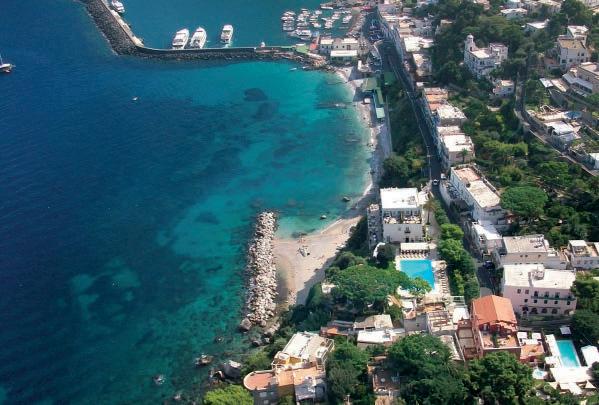

itineraries
151
Capri | The Divine Coast
Above: Arco Naturale
Below: Marina Grande









 154 Capri | The Divine Coast
divine itineraries
Capri | The Divine Coast 155
divine itineraries
154 Capri | The Divine Coast
divine itineraries
Capri | The Divine Coast 155
divine itineraries
Come Ulisse
JUST LIKE ULYSSES
Il fascino incantato dello Scoglio delle Sirene The enchanted charm of Scoglio delle Sirene
La posizione, è di quelle che tolgono il fiato. Marina Piccola, un’insenatura compresa tra le rocce a strapiombo del Castiglione e i contrafforti del Monte Solaro. Di fronte, i faraglioni. E’ qui, sullo Scoglio delle Sirene, una lingua di roccia che si immerge nel mare come la prua di una barca, che nell’Ottocento i pittori approdavano per ritrarre uno dei paesaggi più belli di Capri. Nel Novecento Gelsomina Vinaccia e il marito Vincenzo Mellino contribuirono alla sua fortuna turistica con un ristorantino entrato nel mito dell’isola frequentato da re e marajià.
Oggi, nella stessa incredibile location, con una splendida vista sulla baia di Marina Piccola a due passi dai Faraglioni, l’attività è portata avanti dalla famiglia Fiore che propone una cucina familiare, genuina ma sempre molto curata e attenta alla tradizione. Lo Scoglio delle Sirene è in realtà un luogo da vivere per tutta la giornata: grazie alla sua particolare morfologia, è l'unico stabilimento balneare sulla roccia che si protende nel mare e beneficia di una piacevole brezza marina anche nelle giornate più calde e afose. Il ristorante, dislocato su una accogliente sala interna, una luminosa veranda e due splendide terrazze abbracciate dal mare, propone una cucina che si basa sui sapori della tradizione mediterranea con specialità di pesce fresco e verdure di stagione. Da assaggiare assolutamente la pezzogna all'acqua pazza, le specialità a base di crostacei e frutti di mare, la zuppa di pesce con scorfano e pomodorini, le polpette di melanzane e gli inimitabili ravioli alla caprese ripieni di caciotta e parmigiano. Da qui è possibile prenotare e organizzare un giro completo dell’isola, il modo migliore per ammirare appieno gli scorci più suggestivi della costa caprese, visitare le splendide grotte e concedersi un bagno rilassante lontano dalle spiagge affollate. Su richiesta vengono effettuate gite e trasferimenti per la Costiera Amalfitana, Marina del Cantone (Nerano), Positano, Amalfi. Non può mancare la parte dedicata allo shopping: una graziosa boutique di articoli per il mare, accessori moda, abbronzanti e cosmetici in genere. Lasciatevi avvolgere qui dalla magica atmosfera notturna, quando la luce della luna accarezza la superficie del mare e tutta la cornice diventa di una bellezza unica.

What really takes your breath away is its location. Marina Piccola, a resort nestled between the precipices of Castiglione and the buttresses of Monte Solari. Located just opposite the Faraglioni. We’re talking about Lo Scoglio delle Sirene, the Sirens’ Rock—a strip of land that immerses itself into the sea as if it were a boat’s bow; during the 1800s, painters would gather here, intent on capturing one of Capri’s loveliest views. In the 1900s, Gelsomina Vincaccia and her husband Vincenzo Mellini contributed to making the area a top tourist spot thanks to their little restaurant, which has since become an island legend—and a haunt for kings and maharajas.
Today, in the same incredible location with a splendid view of the Marina Piccola bay, just steps from the Faraglioni, business continues to be booming. Managed by the Fiore family, the restaurant offers genuine family-style cuisine that’s always carefully prepared with an eye for tradition. In reality, Lo Scoglio delle Sirene can be enjoyed throughout the day, thanks to its unique set-up. It’s the only beach resort on the rocks that extend into the sea, and it benefits from a pleasant marine breeze even during the hottest, muggiest season. The restaurant includes a welcoming internal room, a bright veranda and two marvelous terraces embraced by the sea. Its cuisine spotlights flavors from the Mediterranean tradition with specialties made with fresh fish and seasonal veggies. Make sure to try their bronze bream all’acqua pazza and their shellfish seafood specialty or rock fish soup with cherry tomatoes. Otherwise, sample their eggplant balls and unforgettable Capri-style ravioli stuffed with soft cheese and parmesan. From here, you can reserve and organize a complete tour of the island. It’s the best way to fully admire the most suggestive views of Capri’s coastline, visit its stunning grottos or take a relaxing swim far away from more crowded beaches. Outings and transportation to the Amalfi Coast, Marina del Cantone (Nerano), Positano and Amalfi are available upon request. Guests won’t want to miss a bit of great shopping at the local boutique—a delightful spot for beachwear, fashion accessories, tanning supplies and cosmetics in general. Let yourself be swept up in the spot’s magical nighttime atmosphere when the moonlight caresses the sea and the whole setting is pervaded by a unique brand of beauty.
156 Capri | The Divine Coast divine itineraries
Lo Scoglio delle Sirene è un luogo da vivere tutta la giornata, grazie alla sua particolare morfologia Lo Scoglio delle Sirene can be enjoyed throughout the day, thanks to its unique set-up





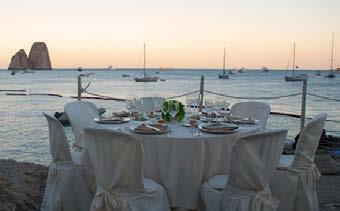
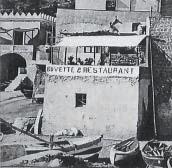
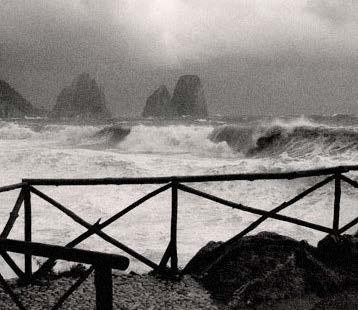
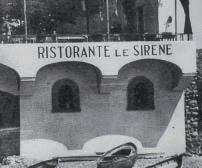




| The Divine Coast 157
Capri



WEEKENDIN ISCHIA THE DIVINE COAST FASHION F/W 2012-13: GLAM CHOISE INTERVIEWS RENZO ARBORE MARK ZUCKERBERG PEPPE SERVILLO ART VALERIO DI DOMENICO MAURIZIO GALIMBERTI TRACCE DELL’ISOLA MARE NOSTRUM ITINERARIES INACCESSIBLE BEACHES THE HIDDEN AMALFI COAST MADE IN TUSCANY WEEKEND MAREMMA INTERVIEWS MARGHERITA BUY STEFANO ACCORSI ROBERTO CAVALLI STEFANO RICCI FERNANDO BOTERO PIERFRANCESCO FAVINO ANDREA BATTISTONI FABRIZIO PLESSI 13 VENETIANS PALACES VILLAS OF BRENTA PIOMBI PRISON WEEKENDDIVENEZIA www.gruppoeditoriale.com
IschIa


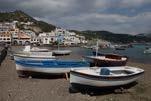
Fra tante belli cose c’ha criato/ ‘o Padreterno ‘ncopp’ a chesta terra,/ na cosa ha fatto che nce s’è spassato:/ immiez’ a nu golfo nu pezzullo ‘e terra da Ischia Mia! di Antonio De Curtis
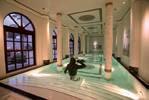 text Alessandra Lucarelli photo Luca Moggi - New Press
text Alessandra Lucarelli photo Luca Moggi - New Press
Above: the Pescatori’s Island, near the Ischia Port.
Below: Forio, the cultural center of the Ischia Island


L’isola della poesia
THE ISLAND OF POETRY
Tra panorami da sogno e wellness a cinque stelle Dream landscapes and five star wellness centers
Ischia la vulcanica, perla del golfo di Napoli che si affaccia sul mar Tirreno insieme alle sorelle Capri e Procida, è un’isola dalle mille sfaccettature che vanta, oltre ad incredibili bellezze naturali, una grande varietà di proposte per vivere qualche giorno da sogno. Suddivisa in diversi comuni, se quello di Ischia rappresenta il centro commerciale dell’isola dove perdersi tra numerose boutique, negozi arti-

Ischia, the volcano island, the pearl of the Naples Gulf in the Tyrrhenian sea together with its sisters Capri and Procida, is an island with thousands peculiarities. Besides its incredible nature it offers a big variety of amenities to live a dream vacation. It is divided into various boroughs of which Ischia represents the commercial center where you can lose yourself in thousands boutiques, workshops, and luxury
gianali e spa deluxe, Forio può essere definito quello culturale, preferito negli anni Cinquanta dai celebri uomini dello spettacolo come Luchino Visconti, Pierpaolo Pasolini, Liz Taylor e Richard Burton, o personaggi della cultura come Elsa Morante o Alberto Moravia, giusto per citarne alcuni. Il litorale di Forio, grazie alle sue continue rientranze e sporgenze, consente la balneazione non solo sulle lunghe spiagge,
spas. Forio is the cultural center; in the fifties it was the favorite place of movie stars such as Luchino

Visconti, Pier Paolo Pasolini, Liz Taylor and Richard Burton, and writers such as Elsa Morante and Alberto Moravia, just to name a few. Because of Forio’s broken and indented coast, it is possible to enjoy the sun either on the long sand beaches or in secluded small places: from here you can eas-
ma anche in luoghi appartati: da qui con poca fatica si può raggiungere Zaro o, in località Panza, la baia di Sorgeto che per la presenza di pozze d’acqua calda è una meta suggestiva in qualsiasi stagione per un bagno di notte. Ma quali sono le mete imperdibili per una giornata sull’isola? Iniziate con una colazione al Bar Calise: aperto alla fine degli anni Sessanta nella sede attuale di piazza degli Eroi, oggi è un luogo di ritrovo dove recarsi, oltre alla mattina, per un ape-
ily reach Zaro, or Sorgeto bay in Panza, which is a suggestive place to visit in every season for a night swim due to its warm water pools. Which are the places you must not miss if you spend one day on the island?
You must start with a breakfast in Bar Calise; it was open at the end of the Sixties in Piazza degli Eroi and it is a popular meeting point for an aperitif or to taste one of its delicious desserts. You can choose among 50 different cakes and

ischia life Capri | The Divine Coast 161
Forio
Bar Calise
Judith
Forio is the cultural center; in the fifties it was the favorite place of movie stars
ritivo e soprattutto per gustare uno dei suoi splendidi dessert: oltre 50 tipi di torte ed una vasta scelta di pasticceria fresca e biscotteria. Approfittate di una bella giornata di sole per fare un po’ di shopping: da Judith, importante realtà locale per l’abbigliamento d’eccellenza che nei punti vendita di Ischia, Lacco Ameno e Sant’Angelo propone le collezioni di Brunello Cucinelli e Ralph Lauren, o da La Caprese più, del caprese doc Ernesto Federico che fin dai primi anni ’80 ha sviluppato con la sua famiglia un autentico impero della moda, concentrando ad oggi in ben dieci punti vendita i brand più in voga nella più grande catena di negozi dell’isola. Ancora Il Pellicano, a Sant’Angelo d’Ischia, o i gioielli firmati La Corallina. Terminate la mattinata al mare: ai Giardini Poseidon Terme, un’oasi di pace di sessantamila
an incredible variety of pastries and cookies. You can spend some time shopping in Judith, the important fashion store of the Island with boutiques in Ischia, Lacco Ameno and Sant’Angelo. It proposes the collections of Brunello Cuccinelli and Ralph Lauren. Or you can shop in La Caprese owned by the Capri doc Ernesto Federico: in the beginning of the eighties he started this family run business which became a true empire of fashion with its ten stores where you can find the trendiest fashion brands.
Or Il Pellicano, in Sant’Angelo d’Ischia, and the exclusive jewelry La Corallina Then you can go to the beach to the Giardini Poseidon Terme, a haven of peace of sixty thousand square meters which represents an ideal combination for a thermal therapy and a vacation on the sea: twenty two thermal



mq che rappresenta un’ideale combinazione di cure e vacanze in riva al mare: ventidue piscine curative, spiaggia privata attrezzata, sauna, gruppi Kneipp, percorso circolatorio giapponese, oppure il Parco Negombo, nella baia di San Montano, uno dei bacini più ricchi e fertili di pozzi termali dell’isola. Il Mezzatorre Resort & Spa, a pochi passi dalla splendida villa appartenuta al regista Luchino Visconti, dispone di una Spa con piscine termali e di una beauty farm dotate delle più moderne tecniche per un benessere a cinque stelle. Ancora, da Gardenia, adagiato nella baia di Cartaromana, dove il benessere è accompagnato da ottime proposte enogastronomiche e dalla suggestiva vista del Castello Aragonese, e ancora la Spa dell’Hotel Manzi. Per un aperitivo scegliete I Giardini Ravino a Forio, dove si danno appuntamento i bon

pools, private beach, sauna, Kneipp facilities, Japanese circulatory parcours, or the Parco Negombo in San Montano Bay, one of the richest thermal wells of the island. The Mezzatorre Resort & Spa, a few steps away from the beatiful villa which belonged to Luchino Visconti, offers a Spa with thermal pools and a modern beauty farm, a real luxury wellnes center. Besides the wellness center in Gardenia, which overlooks the Cartaromana Bay, you will be delighted with its excellent cuisine, the wide wine selection and the beautiful view of the Aragonese Castle. The Spa of the Hotel Manzi is also worth mentioning. For an aperitif you can choose the I Giardini Ravino in Forio, where the bon vivants and the gourmets meet to enjoy the jazz concerts which are organized under the stars. Or in the nearby gardens of La
vivant gourmet amanti del verde e della musica visto che in estate vengono organizzati concerti jazz sotto le stelle, oppure nei vicini giardini de La Mortella, capolavoro paesaggistico creato dalla moglie di uno dei più importanti musicisti inglesi del Novecento, William Walton. Restando in zona Ischia, Un attimo di vino: osteria, enoteca di ricerca. Numerosi i ristoranti dove fermarsi a cena. Tra i migliori, i pluripremiati Il Mosaico dell’hotel Terme Manzi, condotto dallo chef Nino Di Costanzo. La cucina di Libera Iovine, chef del ristorante Melograno a Forio o quella proposta nei due ristoranti dell’hotel 5 stelle Mezzatorre Resort & Spa di Ischia: il ristorante Chandelier, raffinato e intrigante, e il ristorante Sciuè Sciuè, che si affaccia sui celebri tramonti del mare di Ischia e sulla piscina. Ancora, il Giardino Eden o Zi’ Nannin A mare

Mortella, a landscape masterpiece created by the wife of one of the most important English musician of the twentieth century, namely William Walton. If you stay some more time in Ischia you can have dinner at Un attimo di vino, nice restaurant and refined wine shop
There are many other restaurants where you can stop for dinner: among the best ones the award-winning Il Mosaico of the Terme Manzi Hotel, run by the chef Nino Di Costanzo. The cuisine of Libera Iovine, the chef of the Melograno restaurant in Forio or the two restaurants of the five star Mezzatorre Resort & Spa Hotel Ischia: Chandelier, refined and intriguing, and Sciuè Sciuè, from which you can look of the popular Ischia’s sunsets. Other famous restaurants are the Giardino Eden and Zi’ Nannin A mare
ischia life 162 Capri | The
Coast
Divine
Mezzatorre
Giardini Ravino
Un attimo di vino
Ischia
Ischia






4 2 1 3 5 6 1. A view of Ischia Porto 2.6. Forio 3. Ischia Ponte 4. Giardini La Mortella, Forio 5. Villa Manzi, Casamicciola Terme
L’altra faccia della costiera
THE OTHER FACE OF THE AMALFI COAST
 text Nicky Swallow photo Luca Moggi
text Nicky Swallow photo Luca Moggi
Il sorprendente e incantevole entroterra da scoprire abbandonando la strada lungo il mare e salendo in collina The suprising and enchanted inland parts to discover when you leave the seafront and you drive uphill
La penisola sorrentina si protende verso il Mar Tirreno come un dito puntato e bitorzoluto, con le sue coste frastagliate che costituiscono uno dei tratti costieri più spettacolari al mondo e il suo entroterra montagnoso formato dai calcarei Monti Lattari. Un affascinante mix di stili di vita sofisticati, jet-set chic e semplici e rurali caratterizza la leggendaria costiera amalfitana e a un tiro di schioppo dai super yacht e hotel a cinque stelle esistono altre, più semplici realtà. In cima alle colline, intorno a paesini precariamente abbarbicati, i contadini coltivano piccoli appezzamenti di terra a ripidi pendii terrazzati, mentre le mogli fanno i formaggi e i vignaioli lavorano in condizioni estreme per produrre vini Costa d’Amalfi Doc. La maggior parte dei turisti si limita a percorrere la strada costiera, ma coloro che sono disposti a deviare verso le colline saranno ripagati dalla vista sensazionale, da temperature più miti e dalla sensazione di essere lontani dalla strada battuta dai turisti. Dopo colazione alla deliziosamente vecchio-stile Pasticceria Pansa ad Amalfi, prendete la SS 163 ovest e seguite le indicazioni per Agerola. La strada vi conduce attraverso il borgo di Conca dei Marini, con le sue casette bianche sparpagliate, e il Monastero di Santa Rosa, un grande ex-convento che domina questo tratto di costa dalla sua posizione elevata su una roccia affiorante. Le suore che vi risiedevano erano famose per la loro produzione di sfogliatelle di Santa Rosa, una dolce prelibatezza locale, ma ora le loro celle sono state trasformate in stanze e suite di un hotel di lusso i cui giardini terrazzati sembrano sospesi tra il mare e il cielo.
Passata Conca, la strada comincia a salire e una serie di stretti tornanti che si snodano intorno a torreggianti pareti di roccia grigia lascia intravedere in lontananza il mare azzurro sottostante. Tutt’intorno, muri a secco sor-
The Sorrentine peninsula juts into the Tyrrhenian sea like a knobbly, pointing finger, its rugged shores blessed by some of the most spectacular coastal scenery in the world and its mountainous interior formed by the limestone Monti Lattari. An intriguing mix of sophisticated, jet-set chic and simple, rural lifestyle characterises this legendary costiera Amalfitana and a mere seagull’s spit from the super-yachts and the five-star hotels, other, much simpler realities exist. High up in the hills, around precariously-stacked hill villages, farmers cultivate small plots of steeply terraced land while their wives make cheeses and wine makers work in extreme conditions to produce DOC Costa d’Amalfi wines. Most visitors to the area stick to the coastal route, but anyone willing to branch off into the hills will be rewarded by dramatic scenery, cooler temperatures and a sense of being way off the beaten tourist trail. After breakfast at delightfully old-fashioned Pasticceria Pansa in Amalfi, take the SS 163 west and then follow the signs to Agerola. The road takes you through the sprawling whitewashed village of Conca dei Marini, passing the Monastero di Santa Rosa, a huge ex-convent that dominates this stretch of the coast from its lofty position on a rocky outcrop. The resident nuns were once famous for producing sfogliatelle di Santa Rosa, a sweet local delicacy, but these days their cells are occupied by the rooms and suites of a luxurious new hotel whose spectacular terraced gardens seem suspended between sea and sky.
Beyond Conca, the road begins to climb, a series of switchback bends weaving around towering grey rockfaces revealing glimpses of the increasingly distant azure sea below. All around, dry stone walls support vertical terraces planted with lemons, vines and neat rows of vegetables, to a background of extraordinary views. With its
164 Capri | The Divine Coast
divine itinerary
Above: a view of the rural community of Tramonti.
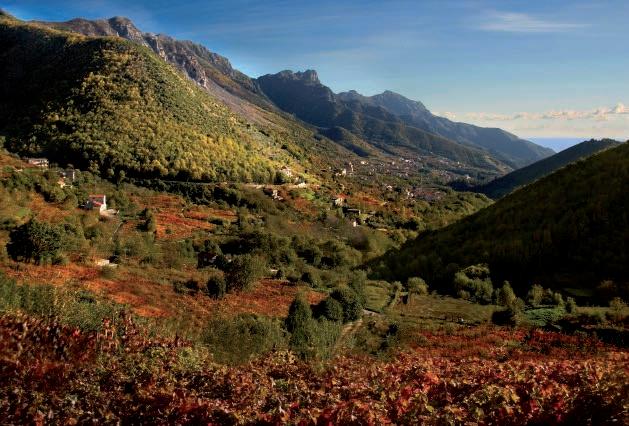
Below: Marisa Cuomo’s vineyards on the mountainsides of Furore

165
Capri | The Divine Coast
divine itinerary
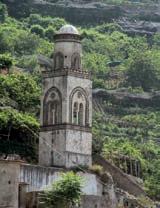
reggono terrazzamenti verticali di limoni, viti e ordinate file di ortaggi su uno sfondo straordinario. Con la sua area comunale che si estende tra i 250 e 600 metri s.l.m., sorge il borgo frastagliato di Furore, noto per i pomodorini del Piennolo che si possono ammirare appesi ai soffitti dei ristoranti locali e per i suoi molti murali contemporanei. E’ chiamato il paese che non c’e’ perché non ha un vero centro. Ci sono un paio di chiese antiche che vale la pena visitare se avete la fortuna di trovarle aperte: la chiesa di Sant’Elia Profeta (sotto il paese), che custodisce un prezioso trittico del XV secolo della Madonna con Santi di Angelo Antonello, e la chiesa di San Giacomo dell’XI secolo decorata con affreschi della scuola di Giotto.
Gli enofili dovrebbero prenotare una visita alla azienda Gran Furor Divina Costiera di Maria Cuomo, che produce i prestigiosi vini Costa d’Amalfi Doc, ricchi di sapori del mare e del sole, ricavati da vigne coltivate in condizioni estreme su terrazzamenti quasi verticali di muri a secco, alcuni dei quali situati a 650 metri s.l.m.
In una zona dove la scelta dei ristoranti è molto limitata, Ristorante Bacco (di fronte all’azienda vinicola) è una raffinata scoperta. Agguantate un tavolo sulla terrazza panoramica, godetevi la vista del mare e ordinate le tipiche linguine alla colatura di alici e frittura del golfo accompagnati da una bottiglia ghiacciata del premiato Fior d’Uva di Cuomo. Oltre Furore, si estende il fertile altopiano di Agerola abitato da piccole comunità contadine e racchiuso da un anello di cime montagnose rivestite di boschi di castagni e punteggiate di pini: con i loro tetti spioventi, le case sembrano quasi alpine. Agerola è famosa per la sua ottima produzione di formaggi come l’ovoide Provolone del Monaco e fior di latte fatti con il latte delle mucche agerolesi, marroni e dagli occhi dolci. Ci sono diversi caseifici nella zona, ma molti sono ormai industrializzati. Per assaggiare il formaggio come si faceva una volta, cercate Naclerio a Pianillo, una piccola azienda agricola a conduzione familiare con spaccio dove madre, padre e figlio producono formaggio con il latte delle loro mucche. San Lazzaro è la cittadina più graziosa e dalla sua Punta si gode la vista spettacolare della costa da Capri fino alla penisola del Cilento. Il vicino castello diroccato di Lauritano offre altre viste mozzafiato. Sebbene dobbiate ritornare in giù lungo la strada costiera e risalire di nuovo via Maiori (con una fermata obbli-
municipal area that extends between 250 and 600 metres above sea level lies the rugged, sprawling little town of Furore, famous for the piennolo tomatoes that can be seen hanging from the ceilings of many local restaurants and its many contemporary painted murals. This ‘paese che non c’e’ is so-called because eit has no real centre. There are a couple of ancient churches that are worth a visit if you are lucky enough to find them open: the church of Sant’Elia Profeta (below the town) houses a precious 15th century triptych of the Madonna and Saints by Angelo Antonello while the 11th century church of San Giacomo is decorated with frescoes from the school of Giotto.
Oenophiles should book a visit to Marisa Cuomo’s Gran Furor Divina Costiera winery which produces much-lauded DOC Costa d’Amalfi wines, rich with the tastes of sea and sun, in extreme conditions from vines grown on almost vertically terraced dry stone walls, some as high as 650 metres above sea level.

In an area where eating options are very limited, Ristorante Bacco (opposite the winery) is something of a gourmet find. Bag a table on the panoramic terrace, drink in the sea views and order exemplary linguine alla colatura di alici and frittura del golfo accompanied by a chilled bottle of Cuomo’s award-winning Fior d’Uva.
Beyond Furore lies the fertile upland plain of Agerola inhabited by a series of small farming communities and enclosed by a ring of mountain peaks carpeted in chestnut woods and dotted with pine trees: with their pitched roofs, houses here seem almost Alpine. Agerola is famous for its production of delicious cheeses such as the ovoid Provolone del Monaco and fior di latte made from the milk of brown, soft-eyed agerolese cows. There are plenty of caseifici in the area, but many are now industrialised: for a taste of how things used to be done, seek out the Naclerio family’s small farm and shop in Pianillo where mother, father and son make cheese from their own cow’smilk. San Lazzaro is the prettiest town and from its Punta, there are spectacular views of the coast that stretch from Capri all the way to the Cilento peninsula. The nearby ruined castle of Lauritano offers more jaw-dropping panoramas. Although you have to drive back down to the coast road and up again via Maiori (with an obligatory stop off for
166 Capri | The Divine Coast
High up in the hills, around precariouslystacked hill villages, farmers cultivate small plots of steeply terraced land
San
Giacomo church in Furore
Minorvecchio

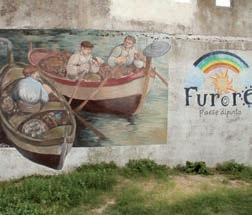



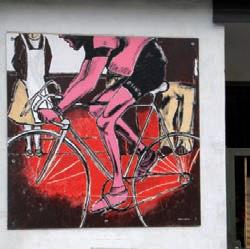






Capri | The Divine Coast 167 1.Furore 2.Tramonti 3. Donkeys along the street to Agerola 4. Tabernacle along the track of the gods 5. Sheeps in Agerola 6. Minori’s landscape 7. A vineyard in Agerola 8. A painting in Furore 9. Furore’s church 10. Monti Lattari’s uphill road 11. Agerola’s stone 12. Marisa Cuomo’s vineyards Agerola is famous for its production of delicious cheeses such as the ovoid Provolone del Monaco and fior di latte made from the milk of brown, soft-eyed agerolese cows 1 2 3 7 8 9 10 11 12 6 4 5
gatoria alla pasticceria Sal de Riso a Minori per una fetta di torta di pere e ricotta), la sparpagliata comunità rurale di Tramonti (da intra montes: tra le montagne) sorge ad est di Agerola in linea d’aria e la vita qui sembra ancora più distante dallo scintillio della costa. Un’altra zona agricola fertile, è famosa per i suoi vini Doc ottenuti con varietà autoctone quali Piedirosso, Tintore, Aglianico e Ginestra da una manciata di piccoli produttori come la famiglia Apicella, tra i primi a produrre vino alla fine degli anni Settanta e le cui cantine a Capitignano sono aperte al pubblico. Tra quelli che contano nel mondo del vino locale c’è anche Gaetano Bove della Tenuta di San Francesco. Se prenotate un giro delle vigne e cantina, vi sarà offerto un delizioso pranzo con la famiglia. Da Tramonti, la strada sale verso Valico di Chiunzi, il passo di montagna un tempo controllato da un imponente castello, ora ridotto a una sola torre in via di sgretolamento. A 676 metri, il valico offre viste spettacolari della piana di Pompeii, del Vesuvio e, più in là, di Napoli. Dopo una sosta veloce per una rinfrescante granita di limone artigianale dal venditore con Ape alla rotonda, potete cominciare la vostra discesa tra i boschi verso la costa via Ravello. Una veloce deviazione per Scala è un buon modo per finire la giornata: questo avamposto, un tempo potente, della Repubblica di Amalfi è una gioiello sonnacchioso il cui Duomo del XII secolo custodisce un monumento funebre trecentesco per Marinella Rufolo nella cripta.

a slice of torta di pere e ricotta at Sal de Riso’s famous pastry shop in Minori), the scattered rural community of Tramonti (intra montes, or between the mountains) lies just east of Agerola as the crow flies and life here feels even more cut off from the glamour of the coast. Another fertile agricultural area, it is famous for its DOC wines which are made from autochthonous grape varieties such as Piedirosso, Tintore, Aglianico and Ginestra by a handful of small producers such as the Apicella family who pioneered wine making in the area in the late 1970s and who welcome visitors to their cantine in Capitignano. Another mover and shaker of the local wine world is Gaetano Bove at the Tenuta di San Francesco. If you book a vineyard and cellar tour, you will also be given a deliciously rustic lunch with the family.
From Tramonti, the road climbs up to the Valico di Chiunzi, the high mountain pass that was once guarded by an imposing castle, now reduced to a single, crumbling tower. At 676 metres, the valico offers spectacular views over the plain of Pompeii and Vesuvius to Naples beyond. After a quick stop for a refreshing homemade granita di limone from the vendor with his Ape van at the roundabout, you can start the forested descent down to the coast via Ravello. A quick detour to Scala is a good way to end the day: this once-powerful outpost of the Amalfi Republic is a sleepy gem of a town whose 12th-century Duomo houses a 14th century funerary monument for Marinella Rufolo in the crypt.
168 Capri | The Divine Coast
From Punta San Lazzaro, there are spectacular views of the coast that stretch from Capri all the way to the Cilento peninsula
A view from Furore

story
169
Capri | The Divine Coast
A view of San Giacomo church in Furore
Cibo per l’anima
FOOD FOR THE SOUL
text Sabrina Bozzoni
Viaggio nei più bei resort dell’isola, e nei loro ristoranti Travelling the island in quest of the secret behind its loveliest resorts, in their restaurants
Capri. Apri gli occhi e vedi il Salto di Tiberio. A destra, oltre la punta della Penisola Sorrentina, il profilo del Vesuvio porta dritto a Napoli e poi fino a Ischia. Dietro le fanno da guardia i Faraglioni. Vista e rivista, abitata, sognata, osservata dal mare risplende. E’ l’isola prescelta dagli dei, dagli imperatori e dagli uomini. Verso sud, lo sguardo si perde nel turchese Tirreno, fino a scoprire altri lidi, meno affollati, più nascosti e ricchi di angoli segreti. In mezzo sorgono senza disturbare eleganti e raffinati Hotel e Resort, dove il lusso si sposa con la buona cucina e dove, come in un sogno, è possibile nutrire il corpo, ma anche l’anima. Il nostro viaggio parte da Marina Grande dove incontriamo un resort noto in tutto il mondo come una delle location più esclusive dell’isola, il J.K. Place Capri ci invita nel suo JKitchen Lounge & Restaurant, dove l’accoglienza raffinata e familiare tutta Made in Capri, pervade ogni piatto in uno stile semplice che mette insieme i dettagli raffinati dello Chef Flavio Astarita alla tradizionale gustosa semplicità della cucina caprese, in un’atmosfera rilassante e solare. Piatto consigliato: fusillo fresco con alici, pinoli e menta, a pochi passi il ristorante Ziqù di Villa Marina Capri Hotel & Spa. Ricavato dalla pietra grezza e affacciato su uno dei tratti più scenografici del golfo di Napoli, quello di Marina Grande, rappresenta la perfetta armonia tra tradizione locale e gli antichi segreti di famiglia, offrendo piatti unici, rivisitati in chiave contemporanea dal tocco dello chef Nunzio Spagnolo. Piatto consigliato: salmone marinato alla barbabietola con yogurt magro e granita d’ananas. Sulla via che conduce a Villa Jovis, arroccato nel cuore dell’alto villaggio si nasconde il resort a cinque stelle Capri Tiberio Palace Hotel&Spa, dove sorge la Terrazza Tiberio. Il menù è basato su una forte identità mediterranea, centrata sulla qualità e stagionalità degli ingredienti, e interpretata dalle abili mani dello chef caprese Marco Iaccarino. Piatto consigliato: paccheri di Gragnano con ragu’ di pescatrice, cacio e pepe. All’Hotel Punta Tragara il prelibato riferimento è Monzù, romantico ristorante a lume di candela dove si prediligono eleganza e intimità. Lo chef Arcucci, propone i piatti storici della cucina tipica tradizionale Caprese e
Capri. You open your eyes and the first thing you see is the sheer cliff known as Salto di Tiberio. To the right, beyond the Cape of the Sorrentine Peninsula, the profile of the Vesuvius leads straight to Naples and then Ischia. Off the island stand the Faraglioni, keeping guard over Capri. Seen again and again, inhabited, dreamt and read about, Capri shines brightest from the sea. It is the island chosen by the gods, emperors and the lesser mortals. Southwards, the gaze drifts away to settle down on the turquoise waters of the Tyrrhenian sea, unveiling hidden, less-known corners where elegant and sophisticated hotels and resorts offer excellent food nourishing both body and soul.
Our tour starts in Marina Grande, where we find a worldfamous resort and one of the island’s most exclusive venues, J.K. Place Capri and its JKitchen Lounge & Restaurant, whose refined and yet welcoming atmosphere pervades every dish prepared by Chef Flavio Astarita, a mix of sophisticated details and traditional Caprese cooking. The must-try: fresh fusilli with anchovies, pine nuts and mint. A few steps away is the Ziqù restaurant of Villa Marina Capri Hotel & Spa. Built of stone and offering one of the most spectacular views of the Gulf of Naples, that of Marina Grande, the restaurant is a perfect blend of local cuisine and secret family recipes with a creative twist by chef Nunzio Spagnolo. The must-try: beetroot-marinated salmon with low-fat yoghurt and pineapple granita
Along the road leading to Villa Jovis is the five-starred resort Capri Tiberio Palace Hotel&Spa and Terrazza Tiberio restaurant The menu is based on the use of top-quality and seasonal ingredients and Mediterranean-style dishes artfully prepared by Caprese Chef Marco Iaccarino. The must-try: Gragnano paccheri with angler-fish sauce, cheese and pepper. The Hotel Punta Tragara’s restaurant
170 Capri | The Divine Coast food itineraries



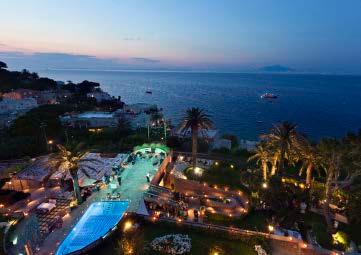


3 1 4 2 5 6 1. Ziqù - Villa Marina Capri Hotel & Spa 2. Terrazza TiberioCapri Tiberio Palace Hotel&Spa 3. Monzù - Hotel Punta Tragara 4. JKitchen Lounge & Restaurant - J.K Place Capri 5. Rendez-Vous - Quisisana 6. L’Olivo - Capri Palace Hotel & Spa
1.8. JKitchen Lounge & Restaurant - J.K Place



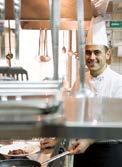

2.3. Terrazza di Lucullo - Hotel Caesar Augustus

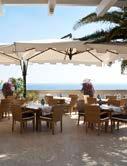
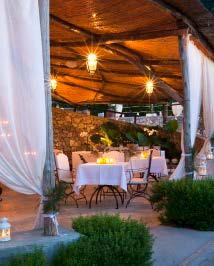

4.5. Terrazza Tiberio - Tiberio Palace Hotel&Spa
6.7. Ziqù - Villa Marina Capri Hotel & Spa



Napoletana, con ingredienti freschissimi e di stagione. Il ristorante, oltre alla sala interna e la veranda panoramica, dispone di spazi all’aperto con una bellissima vista mare per romantiche cene a lume di candela. Piatto consigliato: risotto al limone su tartare di gamberi. Giungiamo al Rendez-Vous, uno dei luoghi dedicati al cibo dell’Hotel Quisisana. Legni scuri, pregiate bottiglie di vino sospese nel vuoto e la grande vetrata su Via Camerelle dominano la sala del ristorante che propone una serie di menu per accompagnare i diversi momenti della giornata. Piatto consigliato: linguine al sugo di polpetielli. Terminiamo il nostro viaggio ad Anacapri. Su uno strapiombo a 300 metri sul mare Capri Hotel Caesar Augustus offre una delle viste più spettacolari tra gli alberghi dell’isola di Capri e la Terrazza di Lucullo è il suo fiore all’occhiello per la ristorazione. Attrice e regista di un menù ben concepito è la cucina mediterranea, fatta di semplicità, freschezza e passione come quella di Eduardo Vuolo, Chef che ha saputo reinventare i piatti tipici della tradizione con un pizzico di fantasia e creatività. Il risultato è un menù che esalta i sapori e delizia il palato. I limoni di Capri, l’olio extra vergine d’oliva, le erbe, i pomodori e le verdure di stagione che crescono nell’orto dell’hotel sono gli ingredienti essenziali. Piatto consigliato: scialatiello dell’isola felice. Infine il Capri Palace Hotel&Spa con il suo ristorante stellato Michelin L’Olivo, una cucina attenta, dagli ingredienti magistralmente selezionati che segue un’impostazione non usuale, abbandonando la regola della suddivisione tra antipasti, primi, secondi, ma dividendo le portate per ingredienti principali “i pesci” “le carni” “le verdure” “le pasta e il riso” – così da lasciare libero l’ospite di scegliere la sequenza che preferisce. Sotto la guida dell’executive chef Andrea Migliaccio, entriamo nell’universo meraviglioso del cibo fatto qualità e di eccellenza. Piatto consigliato: mosaico di mare.

is Monzù, the ideal place for romantic, candlelit dinners in an elegant and intimate setting. Chef Arcucci prepares traditional Caprese and Neapolitan dishes with fresh and seasonal ingredients. The restaurant, in addition to the indoor room and panoramic veranda, offers outdoor seating with breathtaking view of the sea for romantic candlelit dinners. The must-try: lemon-flavoured risotto with shrimp tartare. Next stop is the Quisi, the Hotel Quisisana’s restaurant, where one can enjoy the sophisticated version of traditional Mediterranean cuisine either indoors or on the romantic terrace. The must-try: bread, butter and anchovies with puntarelle and black truffle. Our tour ends in Anacapri. Perched on a cliff at 300 meters above sea level is Capri Hotel Caesar Augustus, offering one of the most spectacular views of Capri and the lovely restaurant Terrazza di Lucullo. Mediterranean cuisine with a touch of creativity added by Chef Eduardo Vuolo.
Caprese lemons, extravirgin olive oil, herbs, tomatoes and seasonal vegetables grown in the hotel’s garden are the basic ingredients used. The must-try: scialatiello pasta. Last but not least, the Capri Palace Hotel&Spa and its Michelin-starred restaurant L’Olivo, featuring the use of carefully chosen ingredients artfully prepared and presented in the menu, which is not divided into courses but rather into “fish”, “meat”, “vegetable” and “pasta and rice” sections, leaving the customer free to choose the succession of dishes. Under the supervision of Chef Andrea Migliaccio, we enter a world of top-quality and excellent food. The must-try: sea mosaic.
172 Capri | The Divine Coast
food
1 6 7 8 2 3 4 5
itineraries




 by Francesco Battesimo, Romana D’Angiola
by Francesco Battesimo, Romana D’Angiola
RESTAURANT
CAPRI
AL GERANIO
Viale Matteotti 8, ph. 081.8370616
Immerso nel verde del Parco Augusto, vista mozzafiato propone un’ottima cucina mediterranea ed internazionale. Tra i cult, paccheri allo scoglio, la Calamarata con tartufi di mare, parmigiano e basilico, ravioli alla caprese, il pescato del giorno.
Immersed in the lush greenery of Parco Augusto, diners can enjoy a breathtaking view and excellent Mediterranean and international cuisine. Some of its best-loved dishes include Paccheri allo Scoglio seafood pasta and Calamarata tube-pasta topped with sea truffles, parmesan and basil, not to mention Ravioli alla Caprese and the catch of the day.
AL GROTTINO
Via Longano 27, ph.081.8370584
Ristorante storico di Capri nei pressi della famosa Piazzetta con una suggestiva vetrina che espone verdure di stagione e pesci. Una tradizione di cordialità ed ospitalità che si tramandano nel tempo dal 1937. Ottimi gli scialatielli con fiori di zucchine e gamberetti. Historical Restaurant near the famous Piazzetta with an amazing window that shows fresh vegetables and fish. A tradition of hospitality and courtesy that hand on in the time since 1937. Excellent the fresh pasta with courgette flowers and shrimps.
AURORA
Via Fuorlovado 18, ph 081.8370181
A due passi dal cuore dello shopping e dalla famosa Piazzetta, ottima cucina in ristorante d’atmosfera, come la Pizza all’acqua come entré e il filetto di pezzogna in crosta di patate con scarola farcita. Two steps from the heart of the shopping centre and the famous Piazzetta, excellent cooking in a characteristic restaurant. Water Pizza as an entrée and filet of “pezzogna” (a type of sea bream) in potato with stuffed chicory, are a speciality.
CAPRI’S
Via Roma 33, ph 081.8377108
A pochi metri dalla famosa Piazzetta di Capri con vista sul porto di Marina Grande. Da non perdere le linguine fra’ diavolo.
Near the famous Capri Piazzetta, a new restaurant with views of the port of Marina Grande. The “linguine fra’ diavolo” a must.
CAPRICORNO
Via Longano 3, ph 081.8376543
Nuovissimo ristorante nel cuore di Capri, rappresenta una sintesi perfetta fra tradizione ed innovazione, sia negli ambienti che nelle proposte gastronomiche. Sulla grande griglia nella cucina a vista, vengono preparate specialità di pesce e di carne.
The newest restaurant in the heart of Capri. The atmosphere and food are a perfect blend of tradition and innovation. Fish and meat specialties are prepared on the big barbecue in the open kitchen.
DA GIORGIO
Via Roma 34, ph 081.8370898
Fantasia e cura in cucina con splendida vista sul porto di Marina Grande. Si consiglia il pesce al sale e la pizza alla caprese. Imagination and careful cooking in this restaurant with splendid views of the port of Marina Grande. Try the fish with salt and “caprese” pizza.
DA PAOLINO
Via Palazzo a Mare 11, ph 081.8376102
Particolarissimo ristorante con tavoli sotto una fitta limonaia. Ottimo per antipasti e dessert, cucina prettamente campana. Aperto solo a cena. Si consiglia la prenotazione.
A very particular restaurant with tables set in a lemon grove. Excellent hors d’oeuvres and desserts. Country cooking. Open only in the evening. Advance booking advisable.
E’ DIVINO
Via Sella Orta 10a angolo via Fuorlovado, ph 081.8378364
Un sofisticato angolo di degustazione che si avvale della competenza di Romano, collaudata conoscenza isolana nel campo dell’enogastronomia. Un punto di riferimento della cultura del bere, sempre frequentato da una raffinata clientela. A sophisticated wine tasting bar run by the skilful Romano, a well-known local wine and food connoisseur. A point of reference for wine lovers, always crowded with a refined clientele.
EDODE’
Via Camerelle 81, ph 081.8388242
In un ambiente di qualità nel cuore dello shopping caprese. Cucina mediterranea. Eccellenti gli gnocchetti profumati al limone con vongole veraci e broccoletti. Quality restaurant in the central shopping area of Capri. Mediterranean cooking. Excellent “gnocchetti” with lemon, clams and broccoli.
FARAGLIONI
Via Camerelle 75, ph 081.8370320
Elegante e accogliente con le sue sale interne e le caratteristiche capannelle esterne lungo via Camerelle, dove ci si sente realmente protagonisti di un film d’altri tempi.
Elegant and warm restaurant, with several rooms inside and the typical outdoor huts along Via Camarelle, which make you feel like a movie star of the past.
JKITCHEN
Via Prov. Marina Grande 225 ph 081.8384001
Il ristorante dello splendido J.K. Place. Proposte creative e sorprendenti legate dal fil rouge della cucina mediterranea, sapientemente elaborate dallo chef Flavio Astarita.
The restaurant of the splendid JK Place. Creative and surprising proposals with the fil rouge of Mediterranean dishes, clever elaborations by the chef Flavio Astarita.
LA CAPANNINA
Via Le Botteghe 12, ph 081.8370732
Tra i ristoranti più prestigiosi e caratteristici nel centro di Capri dal 1931. Cucina tipica caprese curata in ogni singolo dettaglio dalla famiglia De Angelis . La specialità tipica sono i calamaretti ripieni. One of the most prestigious and characteristic restaurants in the centre of Capri, opened in 1931 and run by the De Angelis family. Typical Capri cooking. Speciality: stuffed squid.
LA FONTELINA
Via Faraglioni, ph 081.8370845
In un luogo magico, ai piedi dei Faraglioni, il ristorante dello stabilimento balneare offre una cucina internazionale a base di prodotti locali e pesce preparati a regola d’arte. Aperto solo a pranzo. Si consiglia la prenotazione.
Set in magical surroundings at the foot of the Faraglioni, this historic, resort restaurant offers international cooking using local products and perfectly prepared. Only open lunchtimes. Advance booking advisable.
LA SAVARDINA
Via Lo Capo 8, ph 081.8376300
Un’oasi di tranquillità ai piedi di Villa Jovis, la dimora preferita di Tiberio, dove poter gustare la cucina tipica. Da provare la mozzarella cotta nelle foglie di limone. An oasis of tranquility at the foot of Villa Jovis, the favorite house of Tiberius, with typical local cooking. Try the cooked mozzarella cotta with lemon leaves.
LE GROTTELLE
Via Arco Naturale, ph 081.8375719
Sosta ideale prima della passeggiata del Pizzolungo, nelle immediate vicinanze dell’Arco Naturale. Accoglie gli ospiti nelle fresche sere d’estate sulla terrazza, con piatti tipici mediterranei, in particolare i ravioli alla caprese.
A perfect place to stop before walking along the Pizzolungo, near the Arco Naturale . Guests are welcomed on the terrace in the fresh summer evenings with typical Mediterranean dishes: ravioli “Caprese” a speciality.
LO SFIZIO
Via Tiberio 7/E, ph 081.8374128
Annalisa e Costanza offrono un menu basato su specialità locali e piatti di pesce. Forno a legna e girarrosto per polli allo spiedo lo rendono un‘ottima alternativa per una serata in compagnia, o per una sosta prima di continuare la passeggiata per il centro storico. Annalisa ad Costanza offer a menu based on local specialties and fish dishes. A wood-burning oven and chicken on the spit make it the ideal place for an informal dinner with friends or a quick stop before taking a downtown stroll.
MICHEL’ANGELO
Via Sella Orta 10, ph 081.8377220
In un ambiente caldo ed accogliente Michel’Angelo integra un raffinato ristorante con un sofisticato bar dal design minimale, interpretando in chiave moderna la lunga tradizione gastronomica isolana.
Set in a warm and welcoming atmosphere, Michel’Angelo is a combination of a refined restaurant and a minimalist-style bar offering local cuisine in a modern version.
174 Capri | The Divine Coast GUIDE DIVINE GUIDE DIVINE GUIDE GUIDE DIVINE GUIDE DIVINE GUIDE GUIDE DIVINE GUIDE DIVINE GUIDE GUIDE DIVINE
MONZÙ
Via Tragara 57, ph 081.8370844
I Monzù - storpiatura dialettale del francese “Monsieur”- erano i nomi dei grandi cuochi che lavoravano presso le corti delle famiglie aristocratiche napoletane tra il XIII ed il XIX secolo. Lo chef Arcucci propone i piatti storici della cucina tipica tradizionale.
“Monzù” dialect mangle of the French “Monsieur” they were the names of the great chefs that worked in the courts of important aristocratic Neapolitan families between the XIII and the XIX century. The chef Arcucci, proposes typical traditional historic dishes.
SCIALAPOPOLO
Via Gradoni Sopramonte 6/8 ph 081.8379054
Dall’antica tradizione caprese della tarantella e dal famoso bar di via Vittorio Emanuele, chiuso nel 2008 dopo 50 anni di storia, nasce questa trattoria nel cuore del centro storico, in una traversa della famosa via Le Botteghe.
This trattoria set in the heart of the historic center, in a side street of the famous Via Botteghe, was born from the ancient Caprese tradition of the tarantella and the renowned bar of Via Vittorio Emanuele, closed down in 2008 after fifty years of activity.
TORRE SARACENA
Via Marina Piccola, ph 081.8370646
Protetto da una piccola insenatura nella baia di Marina Piccola, il ristorante dell’omonimo stabilimento balneare è uno dei preferiti dagli abitué dell’isola e non. Sulla terrazza di fronte ai faraglioni è possibile assaporare le specialità di mare e i superbi primi cucinati dallo chef Domenico Guarracino. Nestled in a small inlet in the Marina Piccola bay, the restaurant of the bathing establishment having the same name is one of the favorites of Carpi’s habitués. While enjoying the view from the terrace overlooking the Faraglioni, one can taste excellent fish and pasta dishes prepared by chef Domenico Guarracino.
TERRAZZA TIBERIO
Via Croce 11/14, ph. 081.9787111
All’interno del resort cinque stelle Capri Tiberio Palace Hotel&Spa, il nuovo ristorante propone un menù basato su una forte identità di cucina regionale mediterranea curato dal grande chef Marco Iaccarino.
In the five star resort Capri Tiberio Palace Hotel&Spa resort, the new restaurant offers a menu based on a strong Mediterranean regional identity thought by the great chef Marco Iaccarino.
VILLA VERDE
Vico Sella Orta 6, ph 081.8377024
Dalla tipica cucina mediterranea con una buona scelta di pizze cotte nel forno a legna, il menu spazia dalle specialità di mare ai gustosi piatti della tradizione locale. In un ambiente friendly , la simpatia di Francolino irrompe contagiosamente. Typical Mediterranean cooking with a good choice of pizzas cooked in a woodburning oven. The menu includes a wide range of seafood and tasty local dishes. Friendly atmosphere and welcoming host.
ZIQÙ
Via Prov. Marina Grande 191 ph 081.8376630
E’ la proposta del Villa Marina Capri Hotel&Spa. Il ristorante esalta la purezza dei sapori viaggiando tra sperimentazione e riscoperta delle radici: ogni piatto diventa scultura per lusingare gli occhi e sedurre il palato. Ziqù dispone di un romantico portico per cene a lume di candela.
Is the proposal of Villa Marina Capri Hotel&Spa. The restaurant exalts the pureness of tastes among experimentation and discovering of the routes: in order for every dish to become a creation to tempt one’s eyes and seduce one’s palate. Ziqù has a romantic portico for candle lit dinners.
ANACAPRI
DA GELSOMINA
Via Migliera 72, ph 081.8371499
Ambiente a conduzione familiare e cucina locale. Nella macchia mediterranea a 30 minuti dal centro. Ottimi i ravioli alla caprese ed il pollo al mattone.
Family run restaurant with good local cooking. In the midst of the Mederranean maquis, 30 minutes from the centre. Excellent ravioli caprese with chicken.
DA MAMMA GIOVANNA
Via Chiusarano 6, ph 081.8372057
Immersa nel verde dei suoi alberi di limoni e di ulivo offre ai suoi ospiti piatti tipici capresi abbinati ad una buona scelta di vini campani e nazionali. Situata nella campagna di Anacapri, è facilmente raggiungibile sia a piedi, sia con un servizio di navetta. Annalisa and Costanza serve a menu based on local specialities and fish dishes. The wood-burning oven for pizza and roasting jack make it an
ideal venue for an evening out with friends or for a stop before a walk downtown.
IL CUCCIOLO
Nuova Trav. Veterino 50, ph 081.8371917 Spettacolare vista sul golfo di Napoli e specialità di mare. Eccellente selezione di antipasti a base di salmone scozzese e, da non perdere, i pennoni con funghi porcini e cozze. Spectacular views of the Gulf of Naples. Seafood specialities. Excellent selection of hors d’oeuvres with salmon from Scotland and, not to be missed, “penne” pasta with porcini mushrooms and mussels.
IL RICCIO
Via Gradola 4-6, ph 081.8371380
E’ il Ristorante e Beach Club del Capri Palace Hotel & Spa, nato dalla ristrutturazione dello storico Add’‘O Riccio. L’anima semplice e marinara del luogo non è stata alterata e la cucina è quella verace del mare nostrum. Pochi fronzoli e sapori autentici. It’s the Capri Palace Hotel & Spa’s Restaurant and Beach Club, resulting from the renovation of the famous Add’‘O Riccio. The light and healthy cooking based on local fish dishes is still the same. No frills and just true flavours.
RAGU’
Via Capodimonte 14, ph 081.9780111
Per coloro che prediligono un ristorante più informale, il nuovo Bistrot Ragù del Capri Palace Hotel & Spa è la scelta ideale. E’ situato sulla splendida terrazza panoramica del Bar degli Artisti, completamente ristrutturata.
For those who like a more informal restaurant, the new Ragù Bistrot of the Capri Palace Hotel & Spa is the ideal choice. The restaurant is situated on the magnificent panoramic terrace of the Bar degli Artisti, which has been completely refurbished.
L’OLIVO
Via Capodimonte 14, ph 081.9780111
Il ristorante L’Olivo dell’Hotel Capri Palace & SPA è l’unico sull’isola di Capri a vantare due Stelle Michelin. L’arte del giovane chef Andrea Migliaccio e del suo team consiste nella ricerca di una cucina che interpreti in chiave moderna i sapori della tradizione del territorio. The only Restaurant on the isle by the Capri Palace Hotel and Spa which boasts two Michelin stars. The young brilliant chef Andrea Migliaccio and his team elaborate the Mediterranean ele-
ments on the territory in a very innovative and light way.
LA RONDINELLA
Via G. Orlandi 295, ph 081.8371223
Nel centro di Anacapri, tradizionale ristorante locale condotto con passione dalla famiglia Pane da diversi decenni. Da provare le Linguine alla “Ciammurra” con alici fresche.
In the centre of Anacapri, a traditional, local, restaurant run by the Pane family. Linguine “Ciammurra” with fresh anchovies are an absolute must.
LE ARCATE
V.le De Tommaso 24, ph 081.8373325
Ambiente accogliente, menù molto variegato ed ottima selezione di vini. Squisita la pasta fatta in casa in tutte le sue sfumature.
Welcoming atmosphere, varied menu and an excellent selection of wines. Exquisite home-made pasta, in all its forms and varieties.
LIDO DEL FARO
Loc. Faro-Punta Carena ph 081.8371798
Sullo splendido versante meridionale, sul mare di Punta Carena, ambiente confortevole e ricco di atmosfera per occasioni particolari e indimenticabili. Da consigliare totani e patate.
On the splendid south side, on the Punta Carena sea, a comfortable and atmospheric restaurant, ideal for special, not-to-be-forgotten occasions. Totani fish and potatoes - a must.
MATERITA
Via G. Orlandi 140, ph 081.8373375
Pizzeria sempre affollata e ottima cucina mediterranea con una graziosa terrazza fiorita che si affaccia sul sagrato della Chiesa si S. Sofia. Ottimi gli scialatielli con fiori di zucchine e vongole. Very popular Pizzeria with excellent Mediterranean cooking. A delightful terrace, full of flowers, overlooking the church of S. Sofia . Excellent “scialatielli” (a type of tagliatelli pasta) with courgette flowers and clams.
LA TERRAZZA DI LUCULLO
Via G.Orlandi 4, ph 081.8373395
E’ il fiore all’occhiello della ristorazione del Caesar Augustus Hotel. Affidato alle sapienti mani dello chef Giuseppe Resta, regnano protagonisti il Mediterraneo e i sapori della Campania. It is the feather in the cap of the Caesar Augustus Hotel. In the hands of the skilled chef Giuseppe Resta, protagonists are the Mediterranean and the tastes of Campania.
Capri| The Divine Coast 175 GUIDE DIVINE GUIDE DIVINE GUIDE GUIDE DIVINE GUIDE DIVINE GUIDE GUIDE DIVINE GUIDE DIVINE GUIDE GUIDE DIVINE
AMALFI
LA CARAVELLA
Via Matteo Camera 12 ph 089.871029
La cucina de La Caravella è basata su prodotti di terra e di mare, orientali e occidentali. Riscopre le vecchie ricette di Amalfi, riproponendole in una versione più fantasiosa, esaltando i sensi e i gusti del territorio.
The cuisine of the “La Caravella” is based on Eastern and Western, Sea and Land products, it rediscovers the old recipes of Amalfi, representing them in a more fantastic version, exalting the senses and the tastes of the territory.
DA GEMMA
Via Frà G. Sasso, 10 ph 089.871345
Nel centro di Amalfi, a pochi passi dal Duomo, questo ristorante è un’opzione eccellente per assaporare le migliori ricette locali e internazionali in un’atmosfera casual. Ottima selezione di vini. In the centre of Amalfi, few steps from the Duomo, this restaurant is an excellent option to taste the best of the local and international recipes in a smart casual atmosphere. Very good wine selection.
LIDO AZZURRO
L.mare dei Cavalieri 5 ph 089.871384
Questo ristorante, situato sul lungomare di Amalfi, è un luogo perfetto per gustare e scoprire le tipiche ricette locali, sempre più difficili da trovare sulla costa di Amalfi. Lido Azzurro ha raggiunto il suo successo grazie alla generosa ospitalità della famiglia che lo gestisce. This restaurant, located on the sea-side of Amalfi, is a perfect place to taste and discover typical local recipes that are becoming harder to find in other restaurants on the Amalfi Coast. Lido Azzurro has enjoyed its success thanks to the generous hospitality of the family that owns it.
ATRANI
A PARANZA
Via Trav. Dragone 1, ph 089.871840
Chiuso il giovedì. Aperto tutti i giorni dal 15 giugno al 15 settembre. Situato nel piccolo centro, un piccolissimo posto accogliente dove assaggiare solo i più freschi piatti a base di pesce secondo le originali ricette locali. Closed on thursday. Open daily from 15th june untill 15th september. Located in the small centre, a tiny and
warm place where to taste only the freshest sea-food dishes according to the original local recipes.
CETARA
ACQUA PAZZA
C.so Garibaldi 38, ph 089.261606
Situato in uno dei più tipici villaggi di pescatori della costa campana, questo è il luogo ideale per persone che amano una cucina semplice dal forte sapore di mare. Sitauated in one of the most typical fishing villages of the Campanian coast, this is the ideal place for people who love simple cousine of good strong sea flavours.
SAN PIETRO
Piazza S. Francesco 2, ph 089.261091
Ristorante locale dove assaggiare le ricette della costa e le sue specialità come le linguine alla colatura di alici, tonno fresco e piatti a base di pesce serviti in un’atmosfera classica e elegante. Importante scelta di olii di oliva e vini regionali. Local restaurant where to taste the real strong coastal recipes and specialities as “linguine alla colatura di alici”, fresh tuna and seafood served in an elegant and classic atmosphere.
ISCHIA
BRACCONIERE
Via Falanga 1 Serrara Fontana ph 081.999436
Specialità coniglio di produzione propria. Situato in montagna, molto rustico e molto ben frequentato, soprattutto in estate, quando l’isola è piena o fa molto caldo. Rabbit is a speciality here, situated in the mountains, very rustic and very popular, above all in the summer when the island is hot and crowded.
DAL PESCATORE
P.tta Marina, ph 081.904262
Mondano, frequentato da vip e frequentatori abituali dell’isola. Very worldly, a favorite with VIP and island abitué.
MAIORI
CAPO D’ORSO
Via D. Taiani, ph 089.877022
Situato su una scogliera, questo luo-
go è famoso per la splendida vista e la gustosa pasta fatta a mano, come i ravioli con diversi tipi di ripieno, gli Scialatielli, i laccetti e portate di pesce fritto e grigliate miste. Located up on a rock, this place is famous for the beautiful view and the tasteful homemade pasta dishes as ravioli with various fillings, scialatielli, laccetti and fried fish courses and mixed grills.
TORRE DEI NORMANNI
Via D. Taiani 4, ph 089.877100
Gestito dalla famiglia Proto, in una posizione mozzafiato che si affaccia sul golfo di Salerno, questo ristorante è famoso per le specialità locali preparate esclusivamente con pesce fresco del giorno e pasta fatta a mano accompagnata dalle più importanti etichette di vini. Il pontile di proprietà privata offre la possibilità di arrivare direttamente con la barca.
Owned by the Proto Family, in a breathtaking position overlooking the gulf of Salerno, this kitchen is famous for the local specialities prepared only with daily fresh fish and hand-made pasta accompanied with the most important wine labels. The private property dock offers the possibility to arrive at the restaurant by boat.
NERANO
AL CANTUCCIO
Via Marina del Cantone ph. 081.8081288
Tipica trattoria a conduzione familiare, una buona soluzione per assaporare le ricette mediterranee; pasta e pane fatti a mano. Typical family run trattoria is a good solution to taste the Mediterranean recipes; home-made pasta and bread.
MARIA GRAZIA
Via Marina del Cantone ph 081.80811011
In una piccolissima spiaggia, questa trattoria a conduzione familiare serve semplici piatti a base di pesce, gustosi e genuini. Gli spaghetti alle zucchine, un must della costiera, furono inventati dalla proprietaria.
In a tiny pebble beach, this familyrun trattoria serve simple, genuine and tastefull fish dishes. A must of
the coast, gli spaghetti alle zucchine, was invented by the owner.
LO SCOGLIO
P.zza delle Sirene 15, ph 081.8081026
Specialità di mare servite su una splendida palafitta nella baia di Marina del Cantone. Si possono trovare i ricci di mare crudi.
Seafood specialities served on the splendid palafitta in the bay of Marina del Cantone. It is also possible to try raw sea urchins.
QUATTRO PASSI
Loc Nerano - Via Vespucci, 13/N
Massalubrense - ph 081.8082800
Piatti a base di pesce fresco sono preparati ogni giorno grazie al lavoro dei pescatori della Marina del Cantone. Segnalato dalla guida Michelin è il luogo ideale per un’indimenticabile esperienza gastronomica: ricette locali, ampia selezione di formaggi locali e più di 1200 etichette di vini. Fresh sea-food dishes prepared every day according to the work of the fishermen of Marina del Cantone. This Michelin-starred restaurant is the ideal place for an unforgettable gastronomic experience : sumptuous local recipes, large selection of local cheeses and more than 1200 wine labels.
TAVERNA DEL CAPITANO P.zza delle sirene 10/11 ph 081.8081028
Uno dei più importanti ristoranti della zona, segnalato dalla guida Michelin, affacciato sul mare, questo ristorante è il luogo ideale per gustare i migliori piatti a base di pesce fresco, con il miglior servizio. Ottima cantina.
One of the most important Michelinstarred restaurants of the area, overlooking the sea, this kitchen is the ideal place to enjoy the top of the fresh-fish dishes with the best service.
PAESTUM
DA NONNA SCEPPA
Via Laura, ph 0828.851064
Vicino ad uno dei più importanti siti archeologici campani, questo luogo offre abbondanti piatti del Cilento, con un’enfasi sugli ingredienti locali. Close to on of the most important Campanian archelogical sites, this place offers hearty Cilento dishes, with an emphasis on prime local ingredients.
176 Capri | The Divine Coast
GUIDE DIVINE GUIDE DIVINE GUIDE GUIDE DIVINE GUIDE DIVINE GUIDE GUIDE DIVINE GUIDE DIVINE GUIDE GUIDE DIVINE
LE TRABE
Via Capo di Fiume 1 Capaccio (SA), ph 0828.724165
Incantevole complesso del diciannovesimo secolo, situato in un’oasi naturalistica protetta dove si può assaggiare la cucina del territorio, con piatti diversi ogni settimana, realizzati con ambizione e grande cura. La sera è disponibile anche una gustosissima pizza.
Enchanting complex of the nineteenth century located in a protected naturalistic oasis where to taste a kitchen of the territory that changes weekly, realized with ambition and great cure. In the evening time also tasteful pizzas are available.
POSITANO
BUCA DI BACCO
Via Rampa Teglia 4, ph 089.875699
Sulla spiaggia centrale di Positano, questo luogo è una perfetta combinazione di decorazioni incantevoli, scelta eccellente di cibo e vini vedute spettacolari. Located on the central beach of Positano this place is a perfect combination of charming decor, excellent choice of food and wines and spectacular views.
LA CAMBUSA
Piazza Vespucci 4, ph 089.875432
Situato sulla spiaggia, questo ristorante è famoso per le varietà di pesce tenute nel ghiaccio proprio all’entrata del ristorante. Piccoli calamari con le acciughe, insalata di polpo e mozzarella fatta in casa sono i pezzi forti.
Down to the beach, this reataurant is famous for fish, a huge variety of which languishes on ice just inside the entrance. Baby squid with anchovies, “insalata di polpo” ad homemade mozzarella are highlights.
MAX
Via dei Mulini 22, ph 089.875056
Nel centro di Positano, una galleria d’arte con antichi, dipinti del diciottesimo secolo e con un arredamento antico supporta un cibo eccellente con oltre seicento diversi tipi di vino che offrono la miglior rassegna del vino italiano. In the centre of Positano it can be found inside an art gallery with old painting of eigtheen century and
old fornitures to support an excellent food and with over six hundred different type of wine that give you the best panoramic of the italian wine.
PRAIANO
IL PIRATA
Via Terramare, ph 089.874377
Con una vista spettacolare sulla costa, questo posto nel mare offre piatti tipici della tradizione locale. Da non perdere il risotto ai frutti di mare. With a spectacular view towards the coast, this place is right on the water and offers the typical dishes of the local tradition.
PROCIDA
CRESCENZO
Via Marina Chiaiolella 33, ph 081.8967255
Cucina semplice e con preparazioni al momento che si basa esclusivamente sul pesce, con ricette che partono dalla vecchia scuola della Signora Vincenza fino a arrivare a abbinamenti terra mare, ottenuti da un’attenta analisi effettuata dai cuochi. Simple cooking with dishes prepared there and then with fresh fish and recipes dating back to the old school of Signora Vincenza and now often representing the unity of land and sea.
GORGONIA
Via Marina Corricella 50, ph 081.8101060
Situato nella Corricella, la marina più antica di Procida, caratteristica e suggestiva, sembra un piccolo presepe che si specchia nel mare.
Il ristorante affaccia sul porticciolo seicentesco e offre freschissime specialità di mare.
Situated in the Corricella,the oldest marina of Procida, characteristic and suggestive, like a jewel, it is reflected in the sea. The restaurant overlooks the seventeenth century port and offers super fresh seafood specialities.
RAVELLO
CARUSO/BELVEDERE
Piazza San Giovanni del Toro 2 ph 089.8588801
Il ristorante è rinomato per una serie di servizi per soddisfare ogni occasione. La cucina tradizionale napoletana e piatti tipici regionali sono, ovviamente, la specialità. The restaurant is renowed for a range of dining facilities to suit every occasion Traditional Neapolitan cuisine and regional Italian dishes are, of course, the speciality.
CUMPA’ COSIMO
Via Roma 44, ph 089.857156
Ristorante a conduzione familiare, a pochi passi dalla cattedrale, offre un cordiale benvenuto in due semplici ma attraenti sale da pranzo. This family-run restaurant a few steps from the cathedral square offers a cordial welcome in two simple but attractive dining rooms.
GARDEN
Via Boccaccio 4, ph 089.857226
Sulla scogliera, con panorama mozzafiato, questo ristorante offre la miglior cucina regionale in un’atmosfera amichevole.
Up on the cliff with breathtaking panorama, this restaurant offers the best of regional cuisine in a friendly atmosphere.
IL FLAUTO DI PAN
Via Santa Chiara 26, ph 089.857459
Il ristorante dell’Hotel Villa Cimbrone offre ai propri clienti deliziosi piatti preparati con i prodotti genuini dell’orto. The restaurnat of the Hotel Villa Cimbrone offers its clients delicious dishes prepared with genuine products of the vegetable garden.
ROSSELLINIS
Via San Giovanni del Toro ph 089.818181
Aperto solo a pranzo, con un’ eccellente cucina moderna, questo luogo offre un’importante selezione di vini.
Opened only for lunch, with an excellent modern cuisine this place offers an important selection of wines.
VILLA MARIA
Via S. Chiara 2, ph 089.857255
Raccomandato dalla migliori guide gastronomiche; i piatti sono serviti in sale eleganti e nel suggestivo giardino, ombreggiato da maestosi tigli, dove lo sguardo è catturato dall’incantevole territorio circostante.
Well-recommended by the best gas-
tronomical guides; meals are served in elegant halls or in the suggestive garden, shaded by stately lime trees, where the glances are marvellously captured by the enchanting surrounding landscape.
RECOMMONE
CONCA DEL SOGNO
Via San Marciano, 9 - Nerano ph 081.8081036
Sulla strada per Nerano, in una bellissima spiaggia privata, questo ristorante casual offre un eccellente menù a base di specialità di pesce accompagnate da grandi etichette di vini locali.
On the way to Nerano, in a beautiful private bay, this casual restaurant offers an excellent menu of the best sea-food specialities accompained by great local wine labels.
SANT’ AGATA SUI DUE GOLFI
DON ALFONSO
Corso Sant’Agata 11/13 ph 081.8780026
Sale e salette bianchissime dove risaltano arredi d’epoca, lampadari in vetro di Murano e maioliche. Alta cucina, cultura, terra, mare, e prodotti deliziosi.
The pure whiteness of the halls, which makes the antique furniture stand out, the Murano glass chandeliers, and the hand-painted majolicas. Haute cuisine, culture, land, sea, and delicious produce.
SCALA
DA LORENZO
Via Fra’ G. Sasso 4, ph 089.858290
Nonostante non sia proprio vicino al mare, questo ristorante è conosciuto per un’eccellente scelta di piatti a base di pesce. A conduzione familiare
Despite the location not very close to the sea, this restaurant is well known for excellent choices of fish food. Family run restaurant.
Capri| The Divine Coast 177
GUIDE DIVINE GUIDE DIVINE GUIDE GUIDE DIVINE GUIDE DIVINE GUIDE GUIDE DIVINE GUIDE DIVINE GUIDE GUIDE DIVINE
HOTEL
CAPRI

Canasta
Via Campo di Teste, 6 ph 081.8370561 fax 081.8376675 www.hotel-canasta.com
Capri Tiberio Palace
Via Croce, 11-15 Ph. 081.9787111 Fax. 081.8374493 www.capritiberiopalace.it
Casa Morgano
Via Tragara, 6 ph 081.8370158 fax 081.8370681 www.casamorgano.com
Gatto Bianco
Via V.Emanuele, 32 ph 081.8370446 fax 081.8378060 www.gattobianco-capri.com
Grand Hotel Quisisana Via Camerelle, 2 ph 081.8370788 fax 081.8376080 www.quisisana.com
J.K.Place
Via Prov. Marina Grande, 225 ph 081.838 4001 fax 081.837 0438 www.jkcapri.com
La Certosella Via Tragara, 13/15 ph 081.8370713 fax 081.8376113 www.hotelcertosella.com
La Minerva Via Occhio Marino, 8 ph 081.8370374 fax 081.8375221 www.laminervacapri.com
La Palma Via V. Emanuele, 39 ph 081.8370133 fax 081.8376966
www.lapalma-capri.com
La Residenza Via F.Serena, 22 ph 081.8370833 fax 081.8377564 www.laresidenzacapri.com
La Scalinatella Via Tragara, 8 ph 081.8370633 fax 081.8378291 www.scalinatella.com
Mamela Via Campo di Teste, 8 ph 081.8375255 fax 081.8378865 www.hotelmamela.com
Punta Tragara Via Tragara, 57 ph 081.8370844 fax 081.8377790
www.hoteltragara.com
Villa Marina Via Provinciale Marina Grande 191 tel 081.8376630 fax 081.8374079, www.villamarinacapri.com
ANACAPRI
Capri Palace Hotel & Spa
Via Capodimonte, 14 ph 081.9780111 fax 081.8373191 www.capripalace.com
Caesar Augustus Via G.Orlandi, 4 ph 081.8373395 fax 081.8371444 www.caesar-augustus.com
NAPOLI
Chiaja
Via Chiaia 216 ph 081.415555 fax 081.422344 www.hotelchiaja.it Excelsior
Via Partenope, 48 ph. 081.7640111 fax. 081.7649743 www.excelsior.it Majestic
Largo Vasto a Chiaia, 68 ph 081.416500 fax 081.410145 www.majestic.it

Romeo
Via Cristoforo Colombo 45 ph. 081.0175 fax. 081.0175999 www.romeohotel.it
Royal Continental Via Partenope, 38-44 ph 081.2452068 fax 081.7645707 www.royalcontinental.it Micalo’



Riviera di Chiaia, 88 ph 081.7617131 www.micalo.it
Grand Hotel Parkers
Corso Vittorio Emanuele, 135 ph 081.7612474 fax 081.663527 www.grandhotelparkers.it
Grand Hotel Santa Lucia
Via Partenope 46 ph 081.7640666 fax 081.7648580 www.grandhotelsantalucia.it Vesuvio
Via Partenope, 45 ph. 081.7640044 fax. 081.7644483
www.vesuvio.it Villa Ocsia Via Don Morosino 89 San Giorgio a Cremano (Na) Tel 081.7714033 Fax 081.2141897 www.villaocsia.it
SORRENTO
Cocumella
Via Cocumella, 7 ph 081.8782933 fax 081.8783712 www.cocumella.com Grand Hotel Excelsior Vittoria Piazza Tasso, 34 Tel. 081.8071044 fax 081.8771206 www.exvitt.it Hilton Sorrento Palace Via S. Antonio n. 13 ph 081.8784141 fax 081.8783933 www.sorrentopalace.it La Minervetta Via Capo, 25 ph 081.8774455 fax 081.8784601 www.laminervetta.com Grand Hotel La Pace Via Tordara, 1 ph 081.8074775 www.ghlapace.com Parco dei Principi Via Rota, 1 ph 081.7644614 fax 081.7645707 www.grandhotelparcodeiprincipi.net Relais Blu
Via Roncato, 60 ph 081.8789552 fax 081.8789304 www.relaisblu.com
POSITANO
Ca’ Pa’ Casa Privata Via Rezzola località Torre Grado ph 089.874078 fax 089.8131119 www.casaprivata.it Le Sirenuse Via C.Colombo, 30 ph 089.875066 fax 089.811798 www.sirenuse.it Hotel Palazzo Murat Via Mulini, 23 ph 089.875177 fax 089.811419 www.palazzomurat.it ll San Pietro di Positano via Laurito, 2
ph 089.875455 fax 089.811449 www.ilsanpietro.it
AMALFI
Santa Caterina
S.S. Amalfitana, 9 ph 089.871012 fax 089.871351 www.hotelsantacaterina.it
RAVELLO
Caruso
Piazza San Giovanni del Toro, 2 ph 089.858801 fax 089 858 806 www.hotelcaruso.com Palazzo Sasso Via San Giovanni Del Toro, 28 ph 089.818181 fax 081.858900 www.palazzosasso.com Palumbo Via S. Giovanni del Toro, 16 ph 089.857244 - fax 089.858133 www.hotelpalumbo.it Villa Cimbrone via S.Chiara, 26 ph 089.857459 fax 089.857777 www.villacimbrone.com
ISCHIA
Albergo San Montano Via Monte Vico ph 081.994033 fax 081.980242 www.sanmontano.com Mezzatorre Resort&Spa Via Mezzatorre, 23 - Forio D ́Ischia ph 081.986111 fax 081.986015 www.mezzatorre.it Punta Molino Lungomare C. Colombo, 23 ph 081.991544 fax 081.991562 www.puntamolino.it Regina Isabella Piazza Santa Restituta, 1 ph 081.994322 fax 081.900190 www.reginaisabella.it
178 Capri
Coast GUIDE DIVINE GUIDE DIVINE GUIDE GUIDE DIVINE GUIDE DIVINE GUIDE GUIDE DIVINE GUIDE DIVINE GUIDE GUIDE DIVINE
| The Divine

















































 Monsieur e Spirito di Vino. Ha vinto numerisi premi giornalistici.
Riccardo Esposito Born in Capri. He has founded and runs, with his
Monsieur e Spirito di Vino. Ha vinto numerisi premi giornalistici.
Riccardo Esposito Born in Capri. He has founded and runs, with his








 Gianni Mercatali, communication expert, journalist,
book stores which she runs between Capri, Anacapri and Rome. She
Gianni Mercatali, communication expert, journalist,
book stores which she runs between Capri, Anacapri and Rome. She








































































 A SACRED AND PROFANE MIX
text Teresa Favi
A SACRED AND PROFANE MIX
text Teresa Favi




























































 Chicco Coda, Elena Moretti
Carlo and Stella Imò
shotonsite
Capri | The Divine Coast 55
Anna Seidensticker, Gianluca Fontani, John Genovese
Paolo Romanazzi, Eleonora Pieroni
Manuel Vanni, Nathalie Magnusson
Nicole Triunfo, Dario Castiglio
Vittoria and Simone Tincolini, Lorenzo Ristori, Ilaria Raffaelli
Cosimo Lepore, Michela Meccariello, Bianca Esposito
Carolina Federico, Cettina Caputo
Valeria Fiore, Matteo Parigi Bini, Giovanna Rei, Alex Vittorio Lana
Lucia and Alessandro Vivarelli
Valeria Fiore, Natalie Kriz
Presentation of the new issue of Capri the Divine Coast to the Capri Tiberio Palace. Sandals custom made by the craftsman Fiore for all the guests
Chicco Coda, Elena Moretti
Carlo and Stella Imò
shotonsite
Capri | The Divine Coast 55
Anna Seidensticker, Gianluca Fontani, John Genovese
Paolo Romanazzi, Eleonora Pieroni
Manuel Vanni, Nathalie Magnusson
Nicole Triunfo, Dario Castiglio
Vittoria and Simone Tincolini, Lorenzo Ristori, Ilaria Raffaelli
Cosimo Lepore, Michela Meccariello, Bianca Esposito
Carolina Federico, Cettina Caputo
Valeria Fiore, Matteo Parigi Bini, Giovanna Rei, Alex Vittorio Lana
Lucia and Alessandro Vivarelli
Valeria Fiore, Natalie Kriz
Presentation of the new issue of Capri the Divine Coast to the Capri Tiberio Palace. Sandals custom made by the craftsman Fiore for all the guests













 Margareth Henriquez, Romain Cans
Margareth Henriquez, Antonio Sersale
Dani del Secco D’Aragona, Oliviero Rainaldi
Margareth Henriquez, Emilia Paglicci Reattelli
Patrick and Tasmin Johnson, Raimonda Gaetani, Antonio and Carla Sersale
Charles and Costanza Peugeot, Maria Marigliano Caracciolo, Laure Peugeot
Paolo Romanazzi
Simone D’Aniello, Fabrizio and Valentina Pascucci
Cocktail party on the Orianda vintage sailing ship and dinner at La Fontelina, exclusively for Krug, with view of the Faraglioni
shotonsite
56 Capri | The Divine Coast
Patrick and Tasmin Johnson, Jane Cardani
Giuseppe Ferrajoli
Giuseppe Duva, Francesca Terragnia
Margareth Henriquez, Romain Cans
Margareth Henriquez, Antonio Sersale
Dani del Secco D’Aragona, Oliviero Rainaldi
Margareth Henriquez, Emilia Paglicci Reattelli
Patrick and Tasmin Johnson, Raimonda Gaetani, Antonio and Carla Sersale
Charles and Costanza Peugeot, Maria Marigliano Caracciolo, Laure Peugeot
Paolo Romanazzi
Simone D’Aniello, Fabrizio and Valentina Pascucci
Cocktail party on the Orianda vintage sailing ship and dinner at La Fontelina, exclusively for Krug, with view of the Faraglioni
shotonsite
56 Capri | The Divine Coast
Patrick and Tasmin Johnson, Jane Cardani
Giuseppe Ferrajoli
Giuseppe Duva, Francesca Terragnia













 Nadia Knorpp, Dario Castiglio
Ferruccio De Lorenzo, Louise Von Celsing
shotonsite
Capri | The Divine Coast 57
Ugo Colombo, Simona Ventura
Chicco Coda, Marianna Lembo
Marco Moraci,Veronica Maya
Beatrice Mozzi, Ferruccio De Lorenzo
Antonella Buti, Giuseppe De Lorenzo, Lucrezia Buti
Ferruccio De Lorenzo, Roy Capasso, Lola De Paola, Giuseppe De Lorenzo
Fiona Swarovski, Guido Lembo
Giorgio Paladino, Isabella Giansante
Orazio and Giampiero Rispo
Pippo and Ercole Santonocito
Simone Casiglia,Giacomo Nicolodi
Nadia Knorpp, Dario Castiglio
Ferruccio De Lorenzo, Louise Von Celsing
shotonsite
Capri | The Divine Coast 57
Ugo Colombo, Simona Ventura
Chicco Coda, Marianna Lembo
Marco Moraci,Veronica Maya
Beatrice Mozzi, Ferruccio De Lorenzo
Antonella Buti, Giuseppe De Lorenzo, Lucrezia Buti
Ferruccio De Lorenzo, Roy Capasso, Lola De Paola, Giuseppe De Lorenzo
Fiona Swarovski, Guido Lembo
Giorgio Paladino, Isabella Giansante
Orazio and Giampiero Rispo
Pippo and Ercole Santonocito
Simone Casiglia,Giacomo Nicolodi













 shotonsite
58 Capri | The Divine Coast
Kai Margrander, Roberto Faraone Mennella
Susanne Thun
Patricia Gucci, Gregory Lee
Gabriella Migliore, Filippo Verani Masin
Paolo Fiorillo, Matilde Carli, Mariella Fiorillo
Alexander Werz, Luca Lanzoni
Amedeo Scognamiglio, Luca Zingaretti
Susanne Thun and Hamish Bowles
shotonsite
58 Capri | The Divine Coast
Kai Margrander, Roberto Faraone Mennella
Susanne Thun
Patricia Gucci, Gregory Lee
Gabriella Migliore, Filippo Verani Masin
Paolo Fiorillo, Matilde Carli, Mariella Fiorillo
Alexander Werz, Luca Lanzoni
Amedeo Scognamiglio, Luca Zingaretti
Susanne Thun and Hamish Bowles













 Roberta Rossi, Fabio Cerchi, Sandra Biasutti
Alessandra and Alessandro Zoppi
shotonsite
Federica Repetto, Rodrigo Basilicati
Laura Corjero, Maria Doria
Roberto Panciera,Luigi Brugnaro
Silvia Lucchesi, Neri Torrigiani, Lucia Montignani
Ludovico De Luigi, Enrico Martellozzo, Renata Rami
Alex Vittorio Lana, Fabrizio Plessi, Matteo Parigi Bini
Francesco Coin, Michela Rossi
Costas Voyatzis, Paola Manfredi, Cesare Cunaccia
Mattia Carlin, Paolo Lorenzoni
Michela Garron, Max Boscaro
Giuliana and Giancarlo Caprioglio
Roberta Rossi, Fabio Cerchi, Sandra Biasutti
Alessandra and Alessandro Zoppi
shotonsite
Federica Repetto, Rodrigo Basilicati
Laura Corjero, Maria Doria
Roberto Panciera,Luigi Brugnaro
Silvia Lucchesi, Neri Torrigiani, Lucia Montignani
Ludovico De Luigi, Enrico Martellozzo, Renata Rami
Alex Vittorio Lana, Fabrizio Plessi, Matteo Parigi Bini
Francesco Coin, Michela Rossi
Costas Voyatzis, Paola Manfredi, Cesare Cunaccia
Mattia Carlin, Paolo Lorenzoni
Michela Garron, Max Boscaro
Giuliana and Giancarlo Caprioglio










 divine
62 Capri | The Divine Coast
Lo Scià di Persia e Soraya, sul molo della Canzone del Mare The Shah of Persia and Soraya, on Canzone del Mare’s
divine
62 Capri | The Divine Coast
Lo Scià di Persia e Soraya, sul molo della Canzone del Mare The Shah of Persia and Soraya, on Canzone del Mare’s



 64 Capri | The Divine Coast
From above clockwise: Antonio De Curtis in art Totò, Ted Kennedy, Axel Munthe, Ingrid Bergman with Roberto Rossellini
64 Capri | The Divine Coast
From above clockwise: Antonio De Curtis in art Totò, Ted Kennedy, Axel Munthe, Ingrid Bergman with Roberto Rossellini




 divine
68 Capri | The Divine Coast
Above: Curzio Malaparte, in his villa on Capri.
Mel Ferrer with Audrey Hepburn
Princess Margaret as she’s leaving the island
divine
68 Capri | The Divine Coast
Above: Curzio Malaparte, in his villa on Capri.
Mel Ferrer with Audrey Hepburn
Princess Margaret as she’s leaving the island


 Capri | The Divine Coast 71
Matteo Garrone, born in Rome on October 15, 1968, is an Italian director, scriptwriter, movie producer and set designer
Capri | The Divine Coast 71
Matteo Garrone, born in Rome on October 15, 1968, is an Italian director, scriptwriter, movie producer and set designer
 72 Capri | The Divine Coast
The director walked away with the Grand Prix Special Jury Prize at the Festival of Cannes for Gomorrah in 2008 and Grand Prix Special Jury Prize for Reality in 2012
72 Capri | The Divine Coast
The director walked away with the Grand Prix Special Jury Prize at the Festival of Cannes for Gomorrah in 2008 and Grand Prix Special Jury Prize for Reality in 2012




 Capri | The Divine Coast
Capri | The Divine Coast
 76 Capri | The Divine Coast
He founded Orchestra Italiana in 1991, to promote and relaunch traditional Neapolitan music
76 Capri | The Divine Coast
He founded Orchestra Italiana in 1991, to promote and relaunch traditional Neapolitan music






 From top clockwise: Andrea Bocelli with David Foster, Mariah Carey, Pascal Vicedomini with Lindsay Lohan and Forest Whitaker
From top clockwise: Andrea Bocelli with David Foster, Mariah Carey, Pascal Vicedomini with Lindsay Lohan and Forest Whitaker
















 86 Capri | The Divine Coast
86 Capri | The Divine Coast























 A fashion show featuring Stefano Ricci’s models in the Uffizi Gallery’s West Wing
A fashion show featuring Stefano Ricci’s models in the Uffizi Gallery’s West Wing





 Capri | The Divine Coast 101
Villa Chanel was created within a typical Capri-style dwelling, in a street going from via Camerelle toward Certosa
Capri | The Divine Coast 101
Villa Chanel was created within a typical Capri-style dwelling, in a street going from via Camerelle toward Certosa
 Marta Innocenti Ciulli photo Andrea Varani make up and hair Paolo Baroncelli
Marta Innocenti Ciulli photo Andrea Varani make up and hair Paolo Baroncelli

 104 Capri | The Divine Coast
104 Capri | The Divine Coast

 106 Capri | The Divine Coast
ANTONIO MARRAS
106 Capri | The Divine Coast
ANTONIO MARRAS

 108 Capri | The Divine Coast
108 Capri | The Divine Coast









 what’s cool
what’s cool









































































 126 Capri | The Divine Coast
The great-grandson of Edwin Cerio, Federico Alvarez de Toledo (Brussels, 1964) is the creator of the Eco Capri project
126 Capri | The Divine Coast
The great-grandson of Edwin Cerio, Federico Alvarez de Toledo (Brussels, 1964) is the creator of the Eco Capri project
 Cunaccia
Cunaccia







 Above: Anna Proclemer, Alberto Moravia and Enrico Prampolini, members of a contest panel in Marina Piccola
Below: Moravia and Elsa Morante at Villa Malaparte.
On the right the catalogue of the exhibiotion by Fondazione Il Rosaio
text Francesca Lombardi photo courtesy Fondazione Il Rosaio
Above: Anna Proclemer, Alberto Moravia and Enrico Prampolini, members of a contest panel in Marina Piccola
Below: Moravia and Elsa Morante at Villa Malaparte.
On the right the catalogue of the exhibiotion by Fondazione Il Rosaio
text Francesca Lombardi photo courtesy Fondazione Il Rosaio






 Above: Alberto Moravia. Below: on the left Giorgio De Chirico and Enrico Prampolini, on the right Palma Bucarelli with Curzio Malaparte On previous page from left: Capogrossi with his daughter Olga, Palma Bucarelli and a group of friends with Prampolini, Moravia and Elsa Morante
Above: Alberto Moravia. Below: on the left Giorgio De Chirico and Enrico Prampolini, on the right Palma Bucarelli with Curzio Malaparte On previous page from left: Capogrossi with his daughter Olga, Palma Bucarelli and a group of friends with Prampolini, Moravia and Elsa Morante

 Born in Como in 1956, Maurizio Galimberti grew up in Meda
Born in Como in 1956, Maurizio Galimberti grew up in Meda



 138 Capri | The Divine Coast
ph. Irene Kung These photographs are shown at the exhibtion Mare Nostrum, until September 10 at Fondazione Capri
138 Capri | The Divine Coast
ph. Irene Kung These photographs are shown at the exhibtion Mare Nostrum, until September 10 at Fondazione Capri
 140 Capri | The Divine Coast
ph. Francesco Scianna, Capri 1984
140 Capri | The Divine Coast
ph. Francesco Scianna, Capri 1984



 142 Capri | The Divine Coast
ph. Irene Kung, Madonna del Soccorso - Villa Jovis
142 Capri | The Divine Coast
ph. Irene Kung, Madonna del Soccorso - Villa Jovis








 148 Capri | The Divine Coast
divine
Via Krupp
148 Capri | The Divine Coast
divine
Via Krupp












 154 Capri | The Divine Coast
divine itineraries
Capri | The Divine Coast 155
divine itineraries
154 Capri | The Divine Coast
divine itineraries
Capri | The Divine Coast 155
divine itineraries




















 text Alessandra Lucarelli photo Luca Moggi - New Press
text Alessandra Lucarelli photo Luca Moggi - New Press
















 text Nicky Swallow photo Luca Moggi
text Nicky Swallow photo Luca Moggi















































